
Like clockwork, two years later, we’ve got ourselves a new flagship Garmin Forerunner. Or in this case, two new Forerunners: The top-end Forerunner 970, and the mid-tier Forerunner 570. And relatively true to their historical releases, they’ve brought a blend of both new running-specific features, as well as new hardware updates. This time around adding the LED flashlight, a speaker & microphone, an ECG-capable heart rate sensor, new GNSS sensor, and a brighter display. Plus of course, the giant list of newly added features outlined in the next section. Oh, and yes, the price jumped a painful $150 more, up to a staggering $749, effectively a wash with that of the Fenix 8 currently on sale for $799.
Over nearly past month I’ve been putting the watch through its paces across a boatload of workouts. From 50KM runs to epic mountain rides, openwater swims, trail runs, and plenty more. All to see how well this watch performs in real life, and whether or not the new software features are useful…or just bloat. Further, I put the new sensors to the test to figure out where they work well, and where they fall short. Because they do fall short in some areas. Same goes for the prickly topic of battery life on the Forerunner 970, which saw decreases in a handful of the battery specs (with increases in others).
Lastly, this is a media loaner from Garmin. I’ll go out shortly and buy my own for long-term usage purposes, then return this loaner. As always, I don’t accept advertising from any company I review, and no company sees my reviews before you do. So, if you found this review useful, consider becoming a DCR Supporter, which gets you an ad-free site, plus the behind-the-scenes video series between both myself (and my wife) on everything that happens in the DCR Sports Tech Cave/universe.
What’s New:
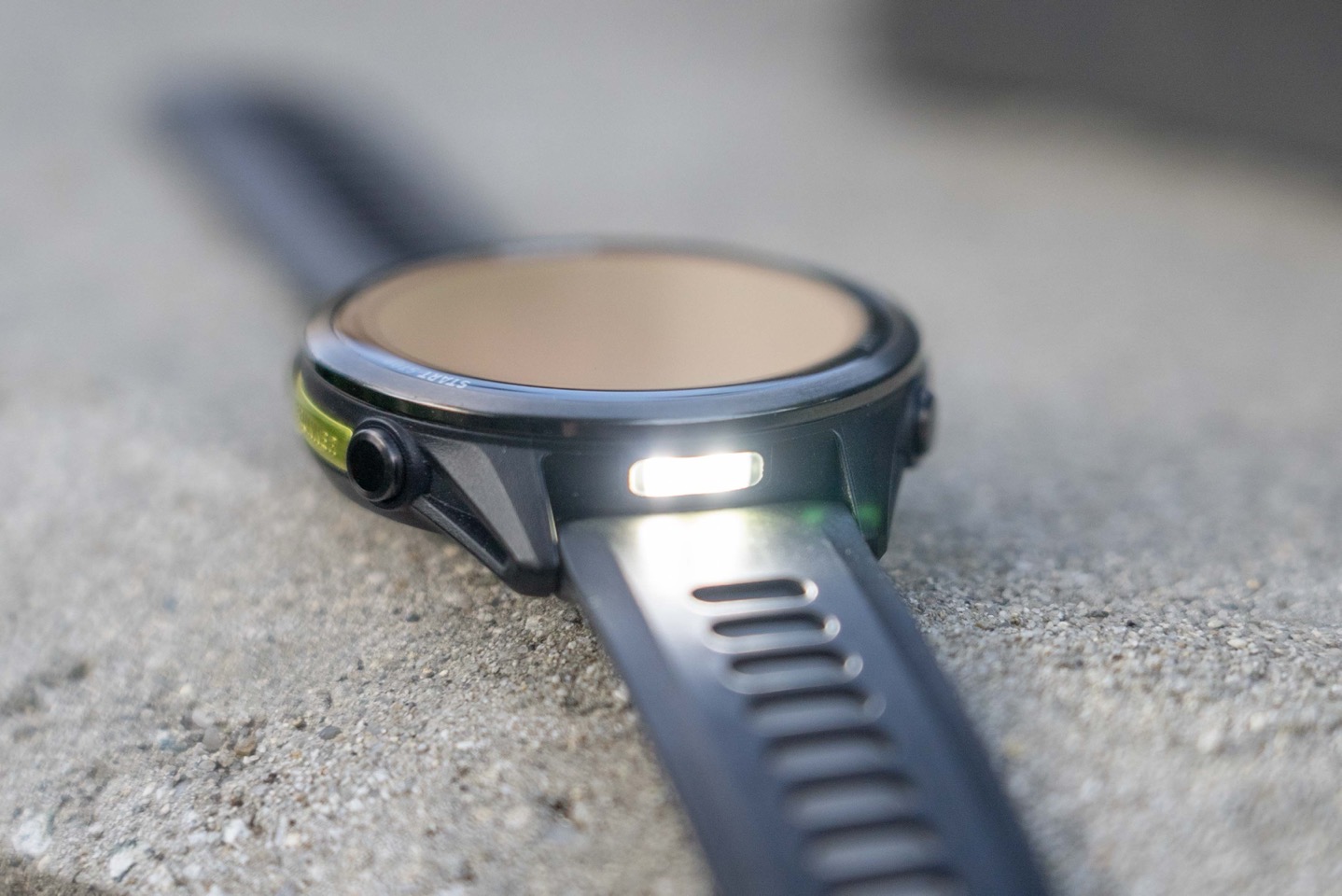
The Forerunner 970 is the successor to the Forerunner 965, but in many ways, it continues with the tradition of pulling features of the Fenix series (aka the plastic Fenix). In this case, many of the Fenix 8’s features were added, both software as well as hardware. Still, if there’s anything we know about the Forerunner team, they don’t like it being called the plastic Fenix. As a result, they also introduced a number of new software features that will, in turn, be rolled over to the Fenix 8 over the coming months.
In any case, here are all the differences compared to the Forerunner 965:
– Titanium Case is a 47mm case with a 1.4” AMOLED touchscreen display (same as before)
– Increased display cover to Sapphire Crystal (from Corning Gorilla Glass 3 DX)
– Increased display brightness substantially
– Added Garmin Elevate Gen5 optical HR sensor (previous was Gen4)
– Added ECG (medically certified) & Skin Temperature Features
– Added speaker & microphone for calls (when connected to phone)
– Added LED flashlight (with both white & red LEDs)
– Watch slightly thinner than FR965 by 0.3mm
– Added Evening Report feature (new to Garmin entirely)
– Added Voice Commands feature
– Added Skin temperature feature
– Added Past Ovulation estimates feature (new to Garmin entirely)
– Added Running Tolerance feature (new to Garmin entirely)
– Added Impact Load Factor (new to Garmin entirely)
– Added Running Economy feature (new to Garmin entirely)
– Added Step Speed loss feature (new to Garmin entirely)
– Added ‘Autolap by timing gates’ feature (new to Garmin entirely)
– Added Suggested Finish line feature (new to Garmin entirely)
– Added projected race time predictor feature (new to Garmin entirely)
– Added Garmin triathlon coach feature (new to Garmin entirely)
– Added previous Forerunner migration feature (will migrate old watch settings)
– Added Large Font size option
– Added Focus Modes (as seen on Fenix 8)
– Added new Multisport Structured Workouts (new to Garmin entirely)
– Added 15 new sport profiles (see list below)
– Added Multiple Battery Power Mode Customizations (previously just a single mode)
– Adds support for up to 4 CIQ data fields concurrently (versus 2 previously)
– Switched to 1-second recording as the default (finally!!!!)
– Improved mapping clarity (the map style design)
– Improved Garmin Coach adaptive training (show more details on watch)
– Tweaked user interface to somewhat match updated Fenix 8 UI (with a Forerunner 965 slant on it)
– Lots of changes to battery specs (mostly increases, some decreases, see below)
– Increases price to $749USD (from $599USD)
– Slightly higher at 56g (compared to 53g before)
Here are the new sport profiles that are added:
Pool Triathlon, Brick, Rucking, Mobility, Adventure Race, Expedition, Obstacle Racing, Hunt, Fish, Horseback Riding, Fishing, Boat, Sail, Sail Race, Snorkel
When it comes to the battery specs, it’s a bit of a mixed bag. These are mostly increases, save the smartwatch mode and GPS-only modes. Here’s the table of claimed specs (I’ll cover real-world testing data in the review itself, at the end of the ‘Basics’ and ’Sports’ sections):
Smartwatch mode: Up to 15 days (965 was 23 days)
GPS-Only GNSS mode: Up to 26 hours (965 was 31 hours)
SatIQ (AutoSelect) GNSS mode: Up to 23 hours (965 was 22 hours)
All-Systems GNSS mode + Multi-Band: Up to 21 hours (965 was 19 hours)
GPS-Only GNSS mode with music: Up to 14 hours (965 was 10.5 hours)
SatIQ (AutoSelect) GNSS mode with music: Up to 13 hours (965 was 9.5 hours)
All-Systems GNSS mode + Multi-Band with music: Up to 12 hours (965 was 8.5 hours)
Got all that? Good. Let’s dive into things.
Complete Beginners Guide:

Now, before we get into this crazy long written review, note that I also have a full video beginners guide, which covers everything you need to know in terms of how to use the watch. That video isn’t so much a review per se, but more of an explainer (including where things do/don’t work), and tons and tons of tips. Here are all the sections:
0:00 Quick Intro
0:38 Hardware Basics
1:25 Watch Faces & Widgets
6:53 Sleep Tracking & Breathing Variation
8:33 HRV Status (Heart Rate Variability)
10:47 Morning & Evening Reports
12:34 ECG Functionality
14:31 Flashlight (LED) Feature
16:30 AMOLED Display Options
18:25 Voice/Speaker/Mic/Calling Features
20:44 Sports Modes/Menus/Features
25:38 GPS/GNSS & Battery Life Options
27:33 Sensors & HR Broadcasting
30:55 Running Tolerance & Impact Load
32:00 Step Speed Loss & Running Economy
33:16 Projected Finish Time
34:17 Timing Gates (AutoLap)
37:28 Training Readiness & Acute Load
41:15 Training Status
43:33 Endurance Score & Hill Score
45:15 Navigation/Maps/Routing
48:23 NFC Payments (Garmin Pay)
49:27 Offline Music (Spotify/etc…)
Ok, with that, let’s get into the full written review!
The Basics:
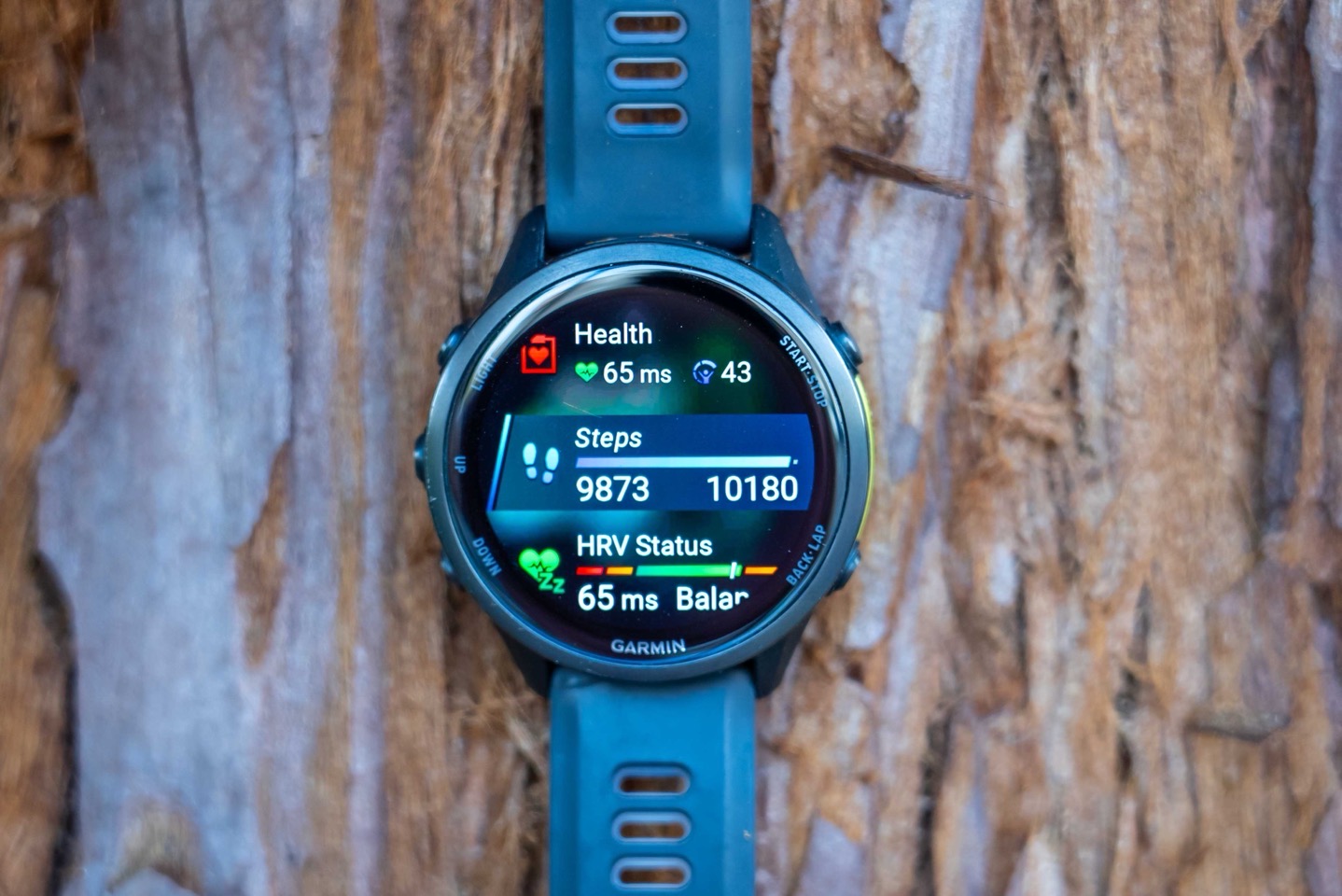
In this section, I’ll dive into all the basics of using the watch. Things like the screen (and battery), buttons, daily activity tracking, and more. Down lower, I’ve got more detailed sections for voice/music/payments, as well as sports tracking, accuracy, and more.
Starting off with the screen/display, and buttons. The Forerunner 970 has five physical buttons, plus the touchscreen. As is the case on all of Garmin’s 5-button watches, you can use buttons or touchscreen for virtually any operation. You can disable the touchscreen if you want, or only use it for very specific things (or in certain modes). It’s all hyper-customizable, down to the per-sport profile level.

The Forerunner 970 does have a substantially brighter display, which I’ll dive into the battery aspects of later in this section. However, by default, it’ll be in a gesture-based configuration. This means that when you put your wrist down, the display turns off, and then as you raise it, it turns back on again. My preference though is so-called ‘Always-On’ mode, where it’s always on, but simply goes to a dimmed state when you put down your wrist (so you can always see the time). You can change this setting easily if you want, and it’s one of the first things I do.

Next, looking at the watch face, there’s a new default unique FR970 stock watch face (which Garmin already offers for $5 on their Connect IQ app store if other watch owners want it). This watch face is fully customizable, in terms of which data bits you stick on it. Likewise, you can choose from a pile of other stock watch faces, or gazillions of custom ones up on the Connect IQ App Store (most of which are free).
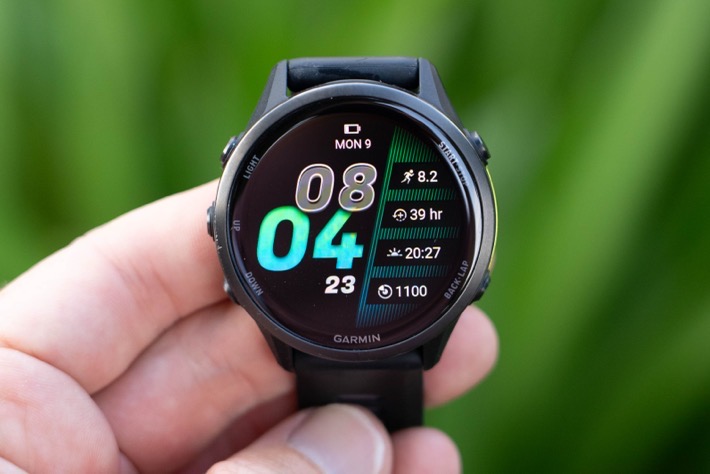
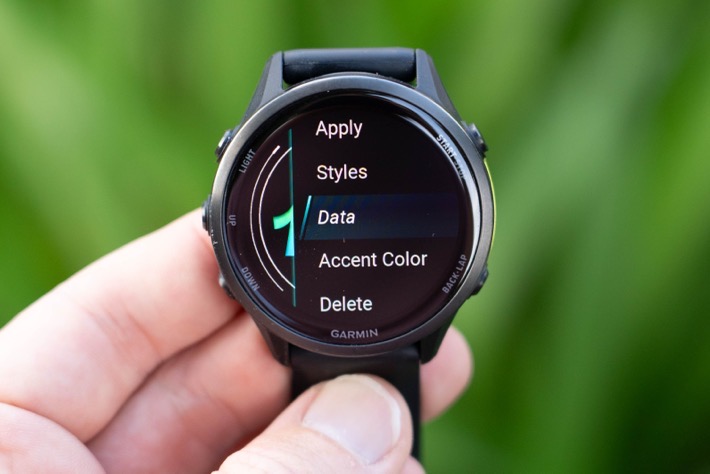
Heading down from there are the widget glances. These are the smaller tidbits of the larger widgets that pack in more information. You can tap on any given one to open up the full widget, with more pages of information.
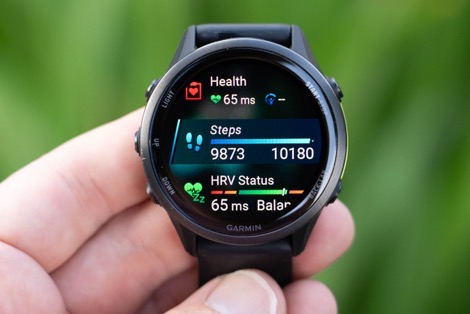
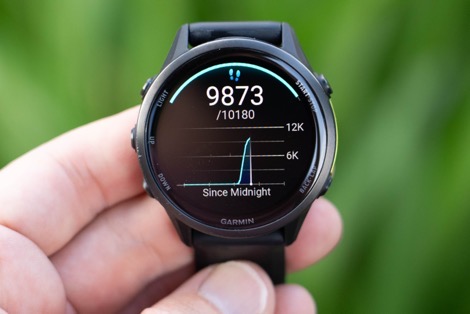

You can tweak the list of widget glances as you see fit, including re-ordering them, adding new ones, getting rid of ones, sticking them in custom folder names, etc…
When it comes to sleep data, you’ll see your sleep stats automatically. This includes the time you fell asleep and woke up, as well as sleep stage/phase information. Additionally, naps will automatically be tracked. In terms of the times I fell asleep/woke-up, that’s been spot on for all my nights. Even including mornings where I was up briefly and went back to sleep, marking the back-to-sleep portion correctly as part of the full night’s sleep.
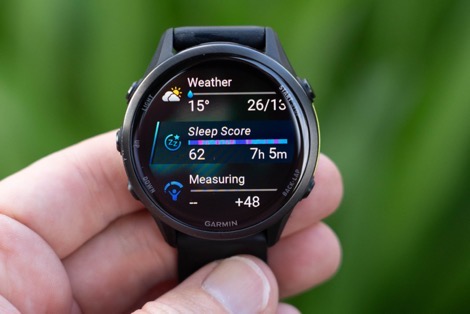

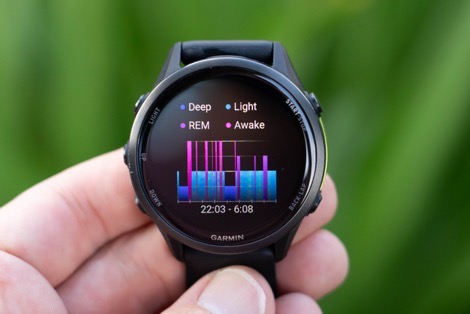
As always, I don’t grade the accuracy of sleep phase/stage data, because there aren’t really any accurate ways to do that. Even so-called gold-standard devices in this realm are only in the mid-80% accuracy range, which is a pretty low bar to grade something by. I’d never grade heart rate or power data by a reference that was wrong 20% of the time. Thus, in the case of sleep phase/stage data, I’m just gonna assume it’s all ‘blah’ at best.
One of the new metrics on the Forerunner 970 is ‘breathing disturbances’, which is essentially being positioned as a non-medical variant of sleep apnea monitoring. Many of their competitors are already doing proper medical-grade sleep apnea detection and logging, but not Garmin. I’m going to take a guess that they’re probably working on it. In the meantime, you get this little chart (showing nothing in my case, though I have seen it show one block once or twice at the bottom):
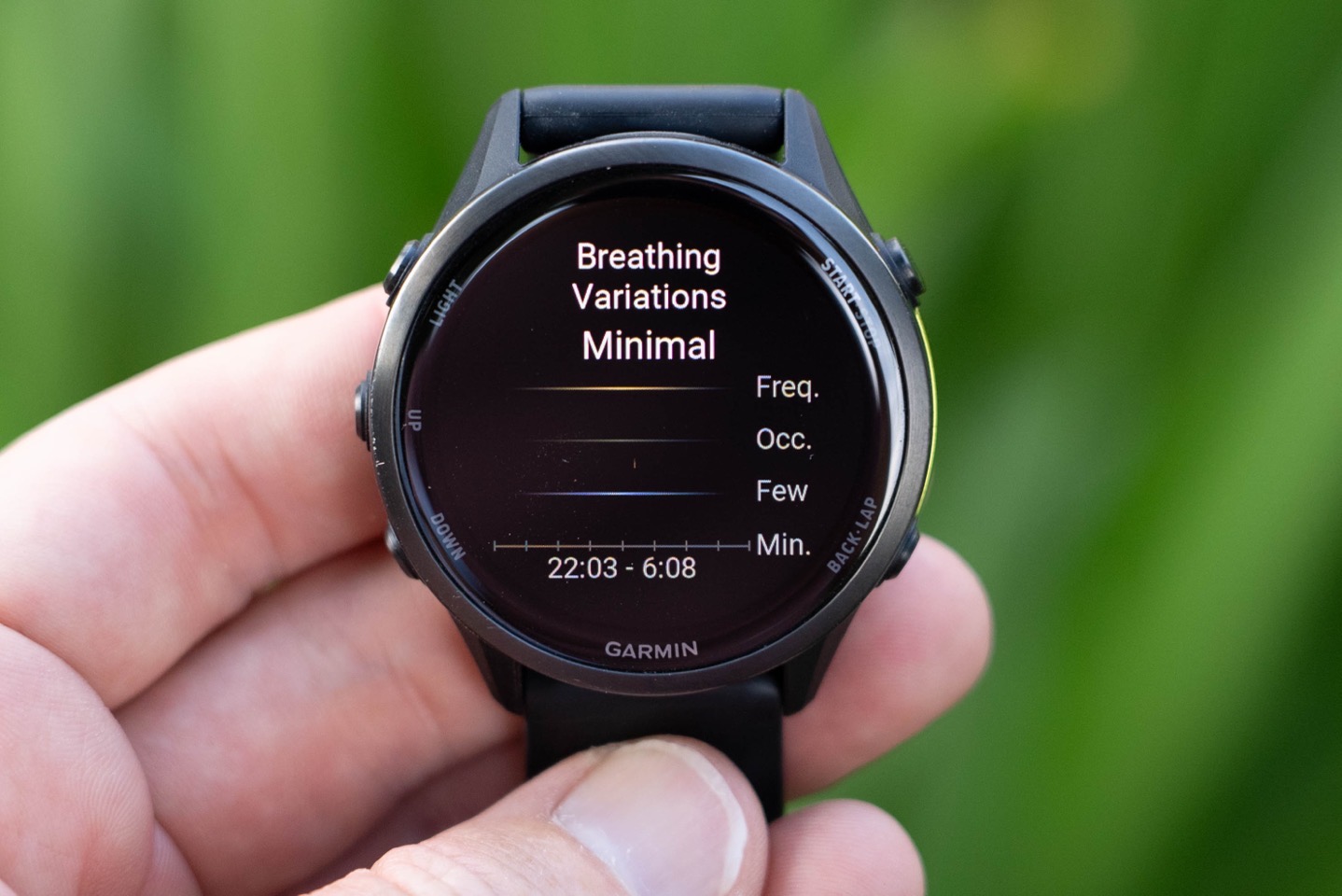
In order to enable this you’ll need to enable PulseOx (blood oxygen tracking), which historically has burned a boatload of battery (as in, you might as well charge your watch every other day). But with changes, it’s actually a non-event battery-wise now. I tested this on back-to-back nights, and here’s what I found:
With PulseOx/Breathing Variations Enabled:
Battery at 1:16AM: 89%
Battery at 8:18AM: 86%Thus 3% decrease for those enabled during sleep mode.
With PulseOx/Breathing Variations Disabled:
Battery at 12:00AM: 55%
Battery at 8:20AM: 52%Interestingly, also, 3% decrease without it enabled.
Meanwhile, as for that sleep disturbance data, I can’t really validate that either against any sort of machine/other device. You can also see your data in Garmin Connect afterwards (a few other nights showing a tiny bit of data):


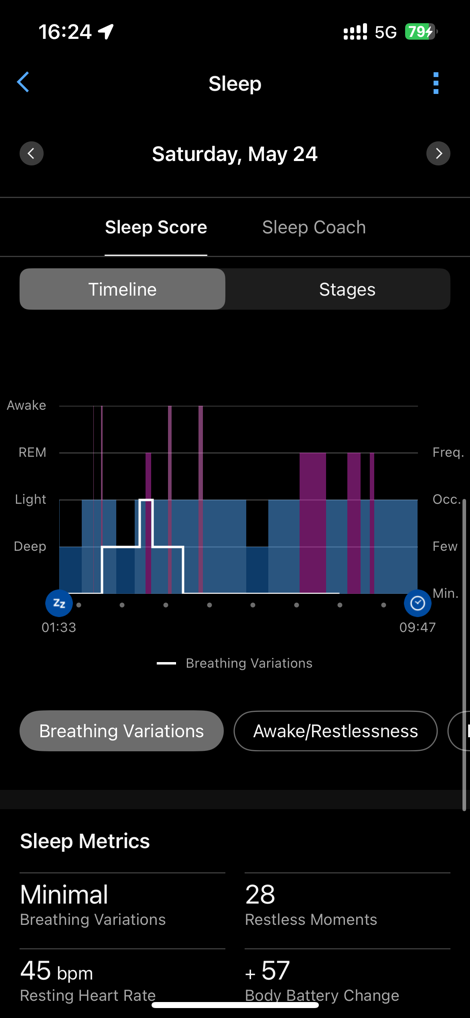
Note that this data, and all other heart rate related/derived data is coming from the Garmin Elevate Gen5 optical heart rate sensor on the FR970. This sensor is found on the Fenix 7 Pro, Fenix 8, Venu 3, and other newer devices, and the first time we’ve seen it on a Forerunner device (along with the Forerunner 570):

One of the features of this sensor is the ability to do a medical-grade ECG for Afib detection. Unlike the breathing disturbances bit above, this piece is actually certified as a medical device by the FDA, EU, and other regulatory bodies. More on that process and study data here. To do an ECG, you’ll need to go through a super-quick set of questions and confirmations on the Garmin Connect app (and be within one of the many supported countries).
Then, it’ll do a test reading, explaining how it works. From that point forward, you’ve unlocked the feature to use anywhere globally (even outside your initial supported country). The process takes 30 seconds to do the reading, and is done by placing your other hand on the bezel of the watch.

You can then see the data afterwards in Garmin Connect as well, including exporting as a PDF:
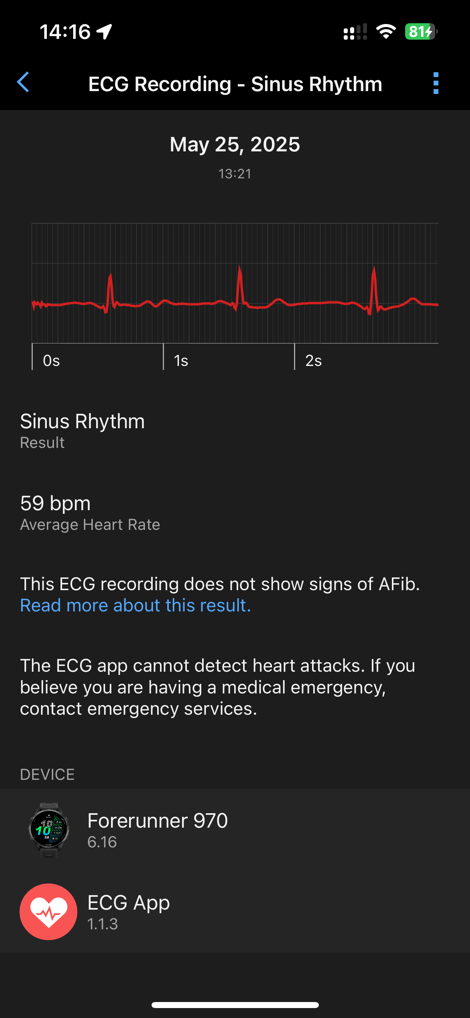

It’s notable that while both the Forerunner 570 & Forerunner 970 have the Gen5 sensor, the Forerunner 570 lacks three specific things that are required for ECG. They are: No metal pads on bottom of optical HR sensor (for contact points), no wire internally leading to the bezel (to complete the measurement circuit), and no titanium bezel (aluminum isn’t a strong enough conductor here). Thus why it has a Gen5 optical HR sensor, but not ECG.
Next, in terms of basic smartwatch features, the Forerunner 970 does have the ability to see/receive smartphone notifications if your phone is within range (including emoji). In the case of Android, this also means showing imagery/photos in the text messages, and responding to text messages. However, in the case of iOS, you’re unable to respond to messages on the watch, or see photos, due to Apple restrictions on 3rd party smartwatches (the Apple Watch is permitted to do both).
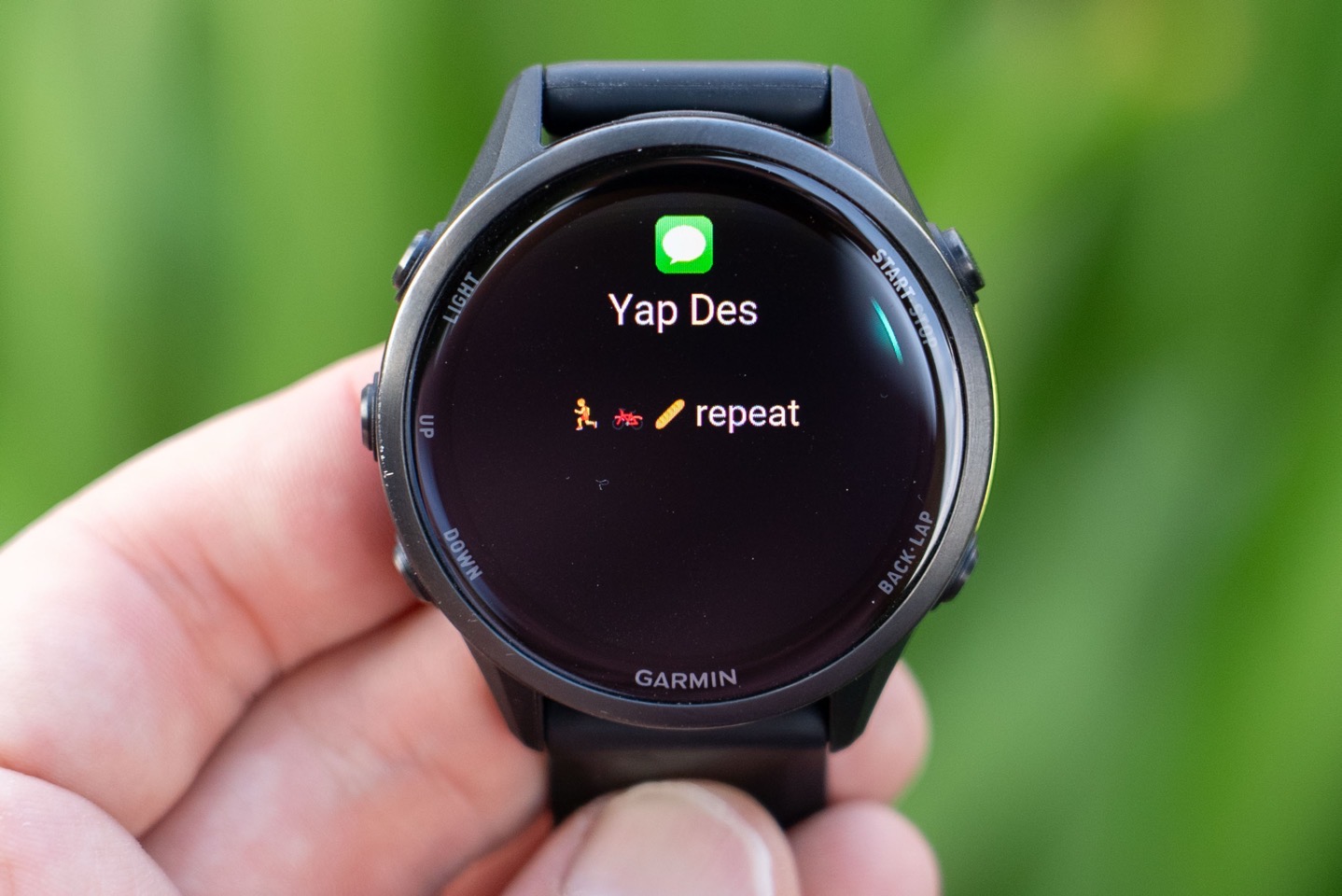
Now, let’s talk battery (and display). The Forerunner 970 has a substantially brighter display than the Forerunner 965 did. While I found the FR965 display perfectly fine (even in the brightest conditions), it’s clear that other companies (namely Apple) were pushing up the display brightness, and Garmin would have to follow. Albeit, Garmin rarely discloses screen nit specs (for reasons that make no sense, as every other company does), the Forerunner 965 is assumed to be a 1,000 nit display. My assumption here is that the Forerunner 970 is either a 1,500 nit or 2,000 nit display.
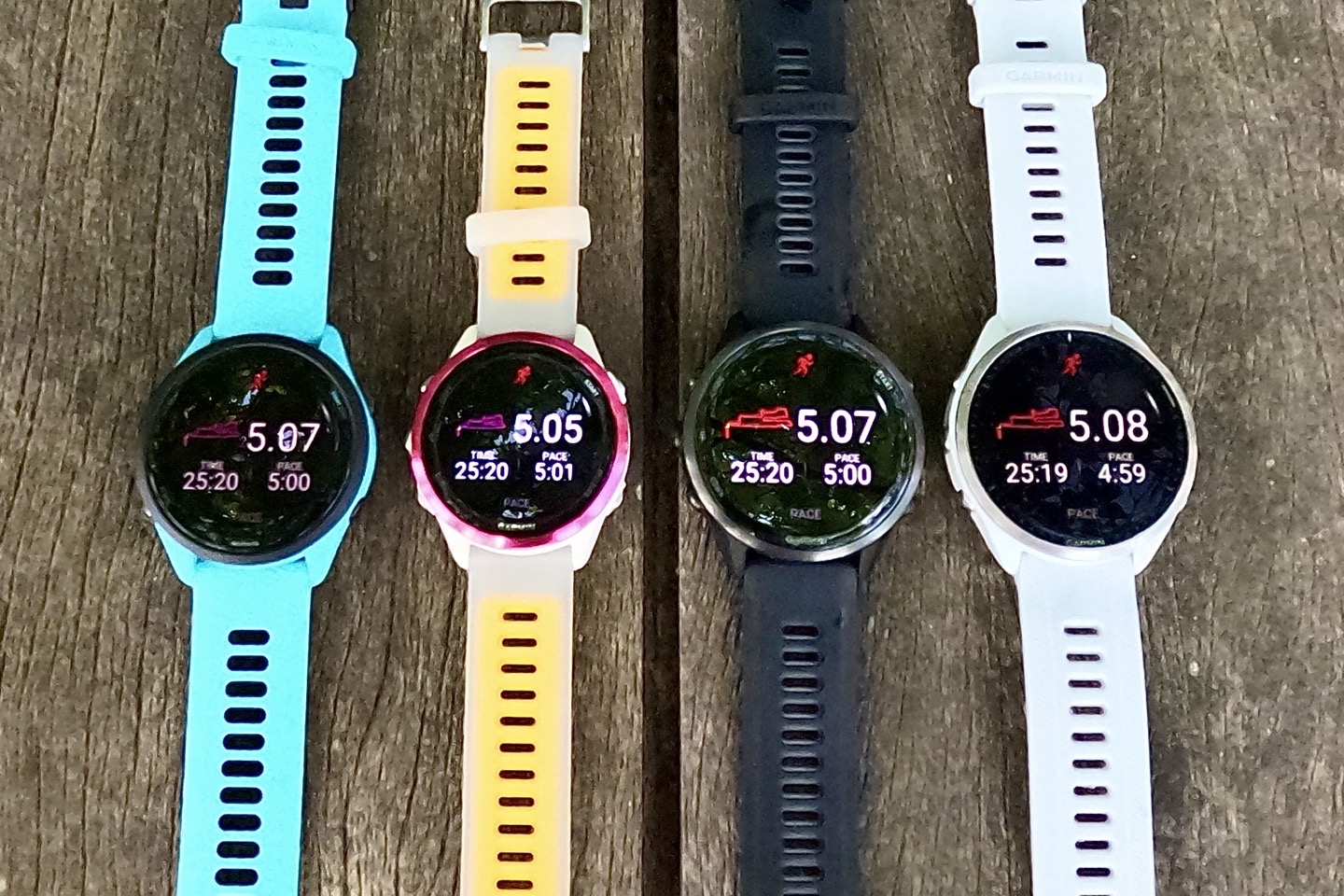
(Left to right: Forerunner 265, Forerunner 570, Forerunner 970, Forerunner 965)
Now, Garmin clearly wants to show off that brightness, and thus the default setting for brightness is 2/3rds max brightness (meaning, they still aren’t even using all the brightness in a default setting):

However, in my testing, by changing to Always-on Display (versus gesture-based display), one burns through the battery at an astonishing speed. Like, 2.5 days. Not kidding. Typically speaking, for always-on display with 1-3hrs of GPS workouts per day, for most of Garmin’s 1,000 nit display watches in the 45-47mm range, I was getting 4-6 days of battery life. In this case, again…2.5 days. Ouch.
But the good news is that you can go down to the 1/3rd brightness setting, and the world is good again. Even more, that brightness setting is still plenty bright in all my testing. In fact, I’d argue (very strongly), Garmin needs to redefine their levels here, perhaps into four brightness levels (25/50/75/100%), because right now they’re just burning waaaay too much battery for no obvious reason. Oh, and I’ll cover GPS battery burn later in the sports section.
Ok, let’s move right into another piece of new hardware – the speaker/microphone.
Voice, Music, and Payments:

The Forerunner 970 gained both a speaker and a microphone as part of its hardware upgrades. This enables you to take calls from the wrist, have a voice assistant, and otherwise chitter-chat with your watch. At least if your phone is within Bluetooth range. That’s because the FR970 doesn’t have cellular built-in, thus it still needs your phone for that connection. In terms of the speaker, it’s notable that previous Garmin Forerunner watches had a beeper (capable of all sorts of chirps), but not a true speaker (capable of voice).
Starting off with the calling features, you can both receive a call directly to the wrist, answering it using the speaker/mic on the watch:
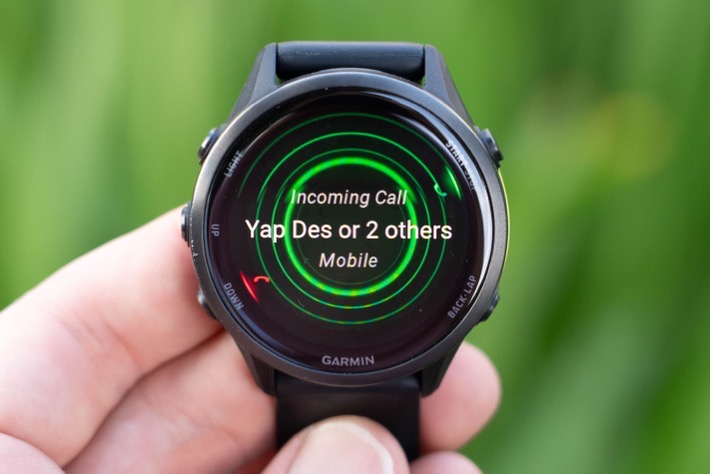

(Ironically, while shooting the photos in this section, the watch would crash every single time the microphone triggered on in all of these bits, a split second after most of these photos were taken. I hadn’t previously had crashes in any of these features over the last month, nor later on the same day. However, I could do nothing right while trying to take the photos in this section, with constant device crashes. Garmin is looking into it.)
Likewise, you can also make outbound calls using either a contacts book, or dialing phone numbers old-school style (for all 4 of you that actually know your friends’ phone numbers by heart):
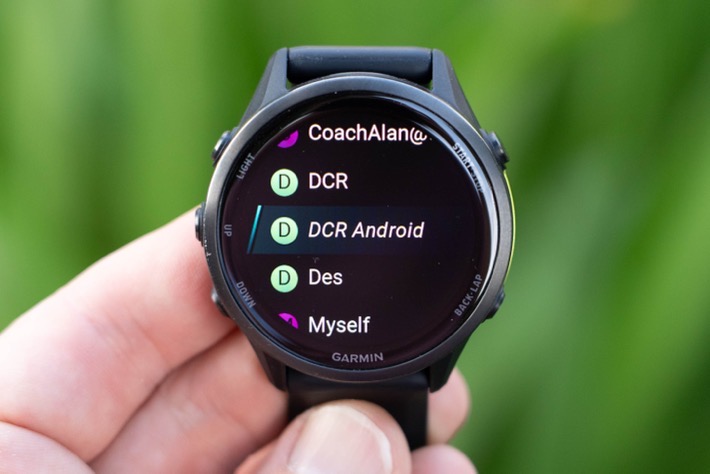
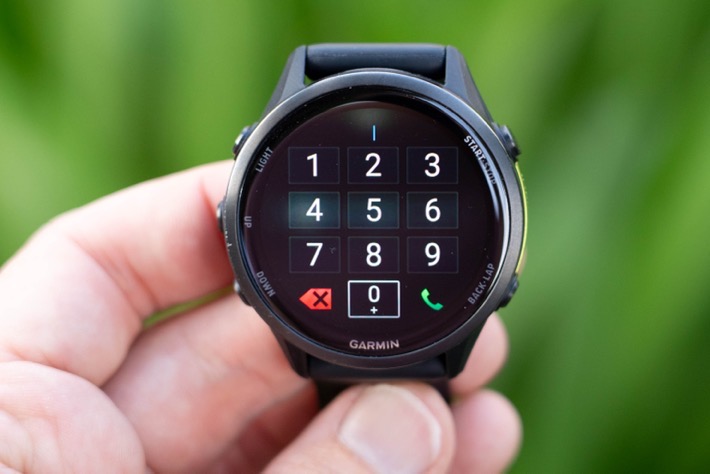
The speaker quality here seems better than the Venu 3 and Fenix 8. It’s not clear if this is because the case materials are different, or if Garmin has actually improved the hardware here. Either way, it certainly sounds better than previous Garmin units. Still, I’m hardly a ‘talk to my wrist’ kinda guy. Just not my cup of tea – but you do whatever makes you happy.
Next, that speaker can also be used for asking your watch various questions to your digital assistant. This means on Apple phones it leverages your phone’s Siri, on Google phones it leverages Google Assistant, and on Samsung phones you can also use Bixby. You can audibly ask your watch a question, and then it’ll respond with the result:

Likewise, Garmin also has integration built-in, to do certain Garmin watch-specific tasks, like asking it to open up a run, or check your heart rate, etc… This feature is called Voice Command, and is different from the above ‘Phone Assistant’ feature.
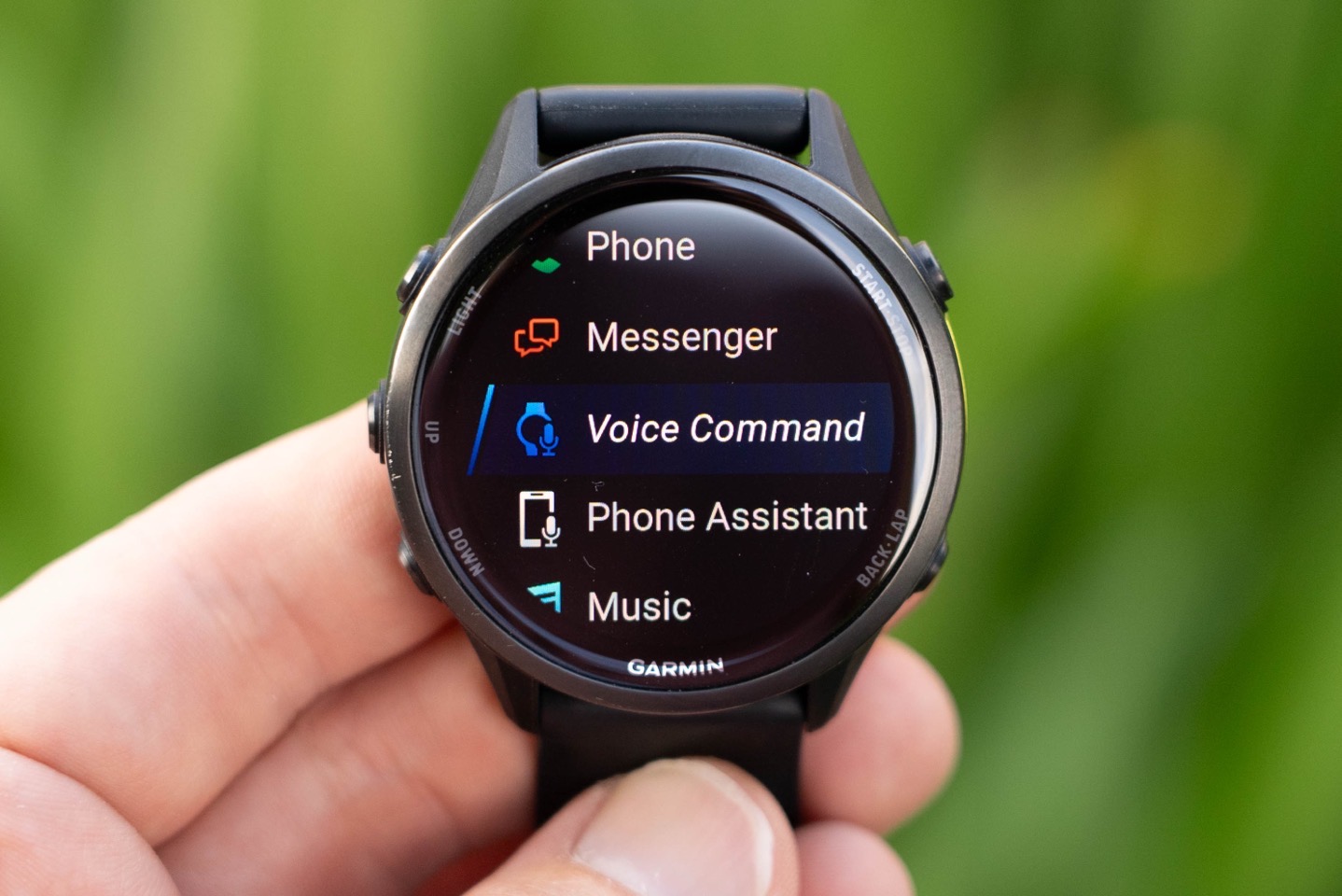
Now, it’s worthwhile noting that while the Fenix 8 also has one more voice feature, Voice Notes, the Forerunner 970 lacks that. The Fenix 8 allows you to make little voice memos/notes that you can check/listen to later (such as making a voice memo during a run). But the Forerunner 970 lacks that feature.
Next, switching to music, the Forerunner 970 has onboard storage for offline music. That can be everything from your own MP3s to downloaded music from Spotify, Amazon Music, and others. In fact, with the speaker, you can actually listen to music directly from your wrist without any Bluetooth headphones. Normally, you’d pair up headphones first, but here, you don’t have to.
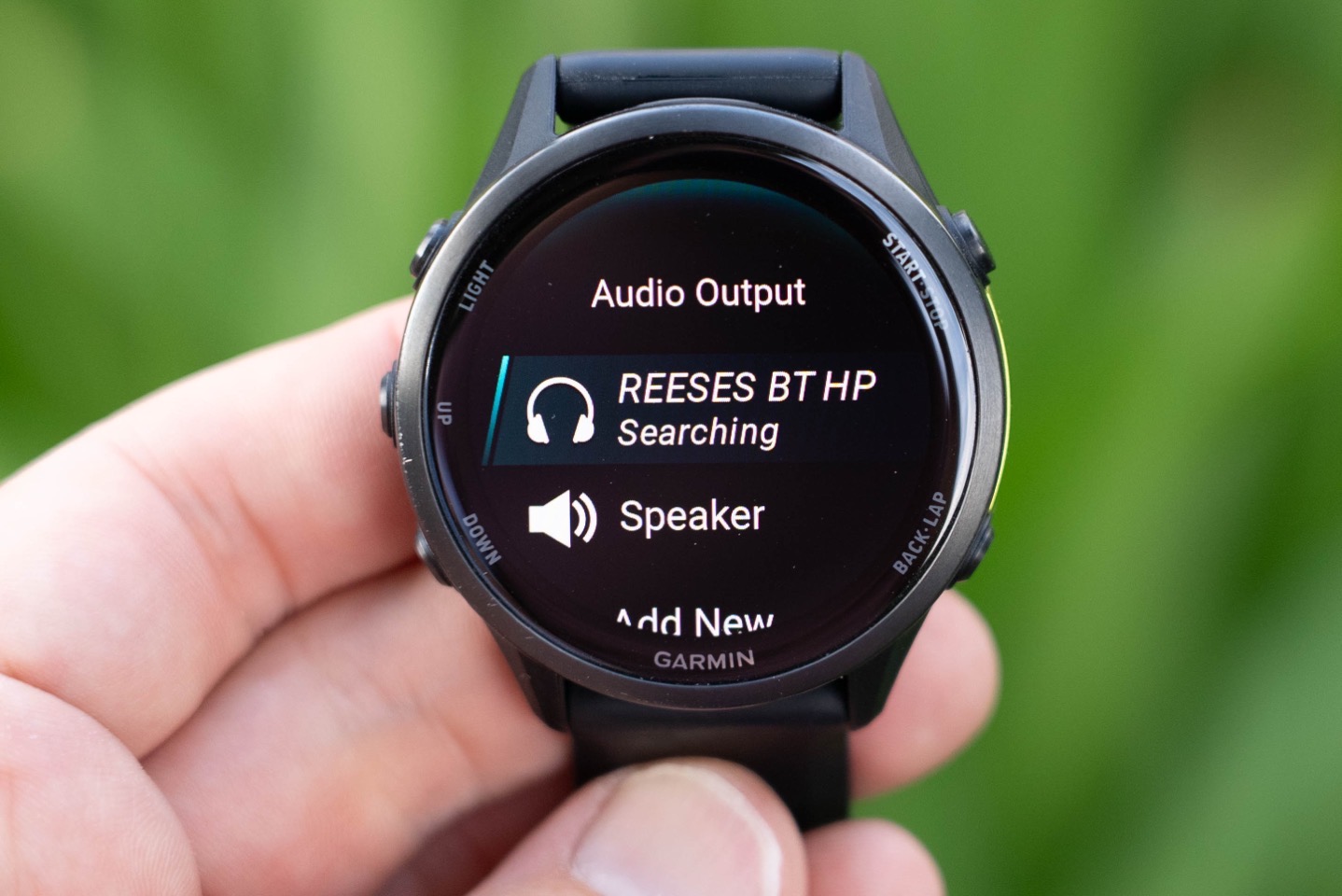
Certainly, if in a public space like a gym, I wouldn’t recommend doing this. But if you’re just looking to burn the crap out of your watches’s battery in the comfort of your backyard with subpar audio volume, then go forth. Otherwise, you can be a normal human and simply pair up Bluetooth headphones and listen that way instead. I’ve done that with the Apple AirPods Pro 2 on a few different runs without any issues in terms of dropouts or such.

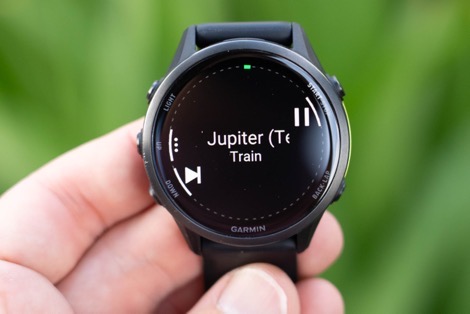
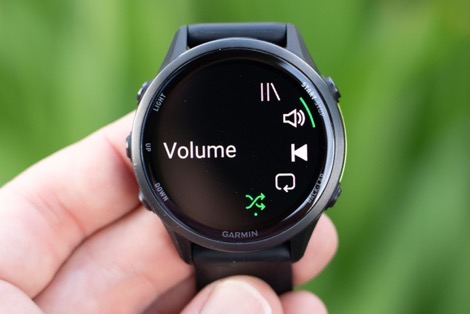
Otherwise, all the music features are identical to before on previous Garmin watches over the last many years.
Finally, there’s contactless payments. As with almost all other Garmin watches, the Forerunner 970 supports contactless payments (NFC), assuming your bank supports Garmin Pay. You can find the bank list here. As always, it’ll vary based on which country you’re in, and which banks Garmin has partnered with. The coverage is very solid in the US, but mixed elsewhere. However, slowly but surely, Garmin does add more and more banks, so definitely double-check the list first.
After setting it up (only takes a couple of minutes), then to make a payment you can open up the controls panel and select the credit card icon. It’ll confirm the passcode if you’ve recently taken the watch off your wrist, and then you’re good to tap/pay:

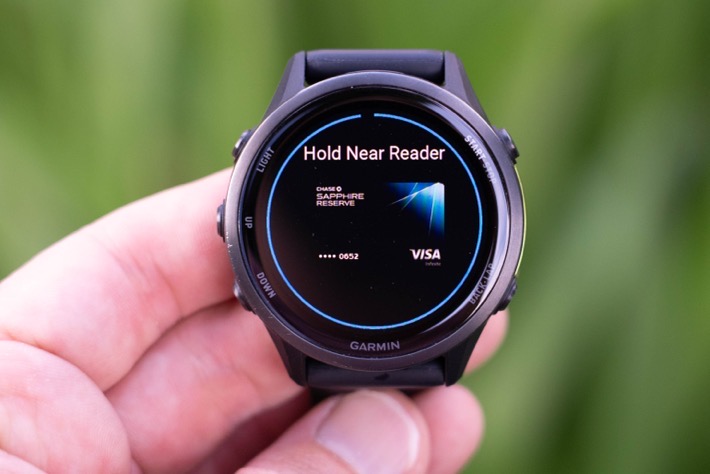
It’s pretty easy.
Likewise, I dive into all three of these things in more detail in my Forerunner 970 Beginners Guide video embedded towards the start of this review, showing how they work in real life, which is a bit more useful for the voice sections in particular.
Sports Tracking:
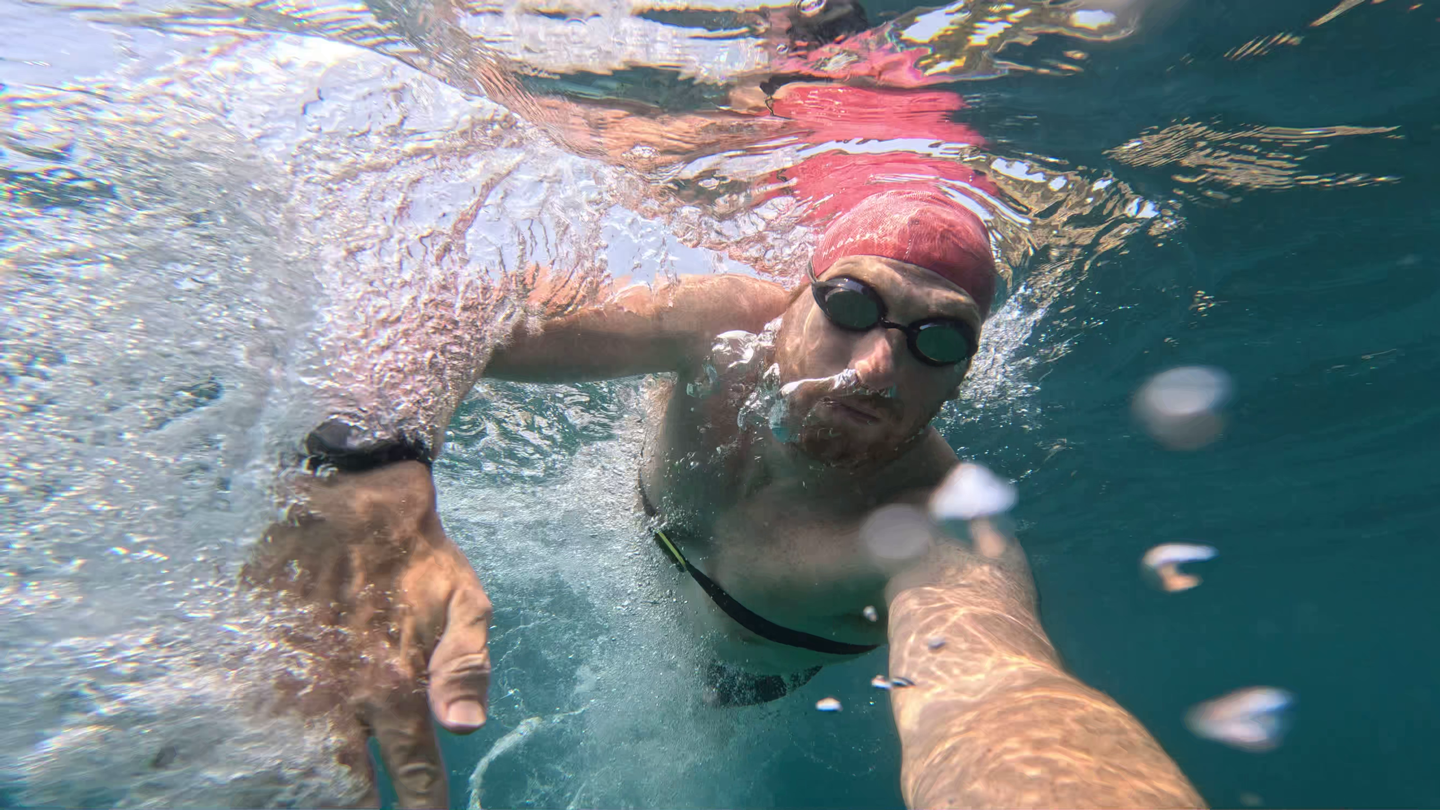
It’s pretty darn likely that if you’re buying a watch figuratively named to be “For Runner”, then you’re probably going to use it for sports. In this section I’ll dive into the sports features, though I do pull out the newly introduced for-running-specifically features in the next section.
To start a workout on the Forerunner 970, you’ll tap the upper right button. Here, you’ll have a list of your sport modes, which you can customize and rearrange. This part of the user interface has been tweaked and now matches the Fenix 8 styling.

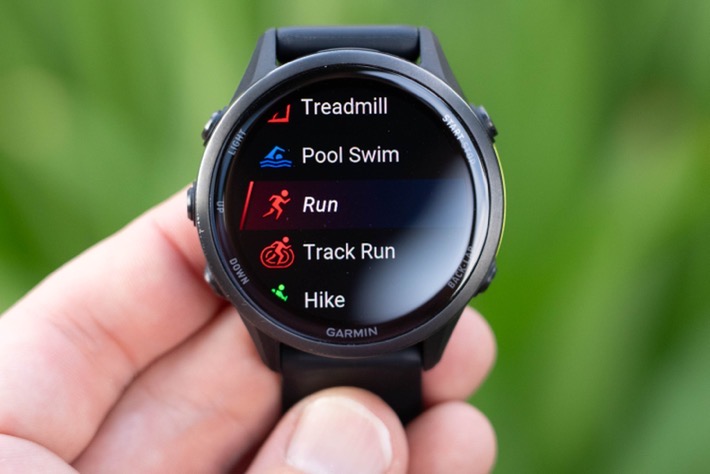
The Forerunner 970 gained a number of new sport profiles, specifically:
Pool Triathlon, Brick, Rucking, Mobility, Adventure Race, Expedition, Obstacle Racing, Hunt, Fish, Horseback Riding, Fishing, Boat, Sail, Sail Race, Snorkel
In total, it also has the following sport profiles:
Garmin FR970 Sport Modes:
Run, Track Mode, Virtual Run, Indoor Track, Trail Run, Adventure Race, Obstacle Racing, Bike, Bike Indoor, MTB, eBike, eMTB, CycloCross, Gravel Bike, Bike Commute, Bike Tour, Road Bike, BMX, Triathlon, Brick, Pool Triathlon, Strength, Cardio, Mobility, HIIT, Yoga, Pilates, Elliptical, Stair Stepper, Row Indoor, Climb Indoor, Bouldering, Floor Climb, Boxing,Mixed Martial Arts, Rucking, Mountaineering, Fish, Hunt, Disc Golf, Horseback, Expedition, Archery, Inline Skating, Snowboard, Backcountry Ski, Backcountry Snowboard, XC Classic Ski, XC Skate Ski, Snowshoe, Ice Skating, Snowmobile, SUP, Kayak, Row, Snorkel, Boat, Sail, Sail Race, Sail Expedition, Fish, Soccer/Football, American Football, Basketball, Baseball, Softball, Volleyball, Cricket, Lacrosse, Rugby, Field Hockey, Ice Hockey, Ultimate Disc, Tennis, Pickleball, Padel, Racquetball, Squash, Badminton, Table Tennis, Platform Tennis, ATV, Overland, Motocross, Motorcycle, Meditation, Breathwork, Track Me, Walk, Swimrun, Duathlon, Golf, Openwater Swim, Ski, Walk Indoor, Ultra Run, Jump Rope
The point of sport profiles is part categorization, and part sport-specific data. For example, stroke rate while Stand Up Paddleboarding, cycling power while cycling, and automatic ski run count while skiing or snowboarding. In the last year or two, Garmin has significantly added more sport profiles purely for your categorization purposes. These don’t have sport-specific data (like baseball), but allow you to more easily categorize your time spent in each sport (rather than just logging it as ‘Other’).
In any case, we’ll pick running for now, simply to show how sport modes work. They all, more or less, have a similar structure. Once opened up, you’ll see the current GPS status (if an outside sport), as well as sensor status (if connected sensors apply).
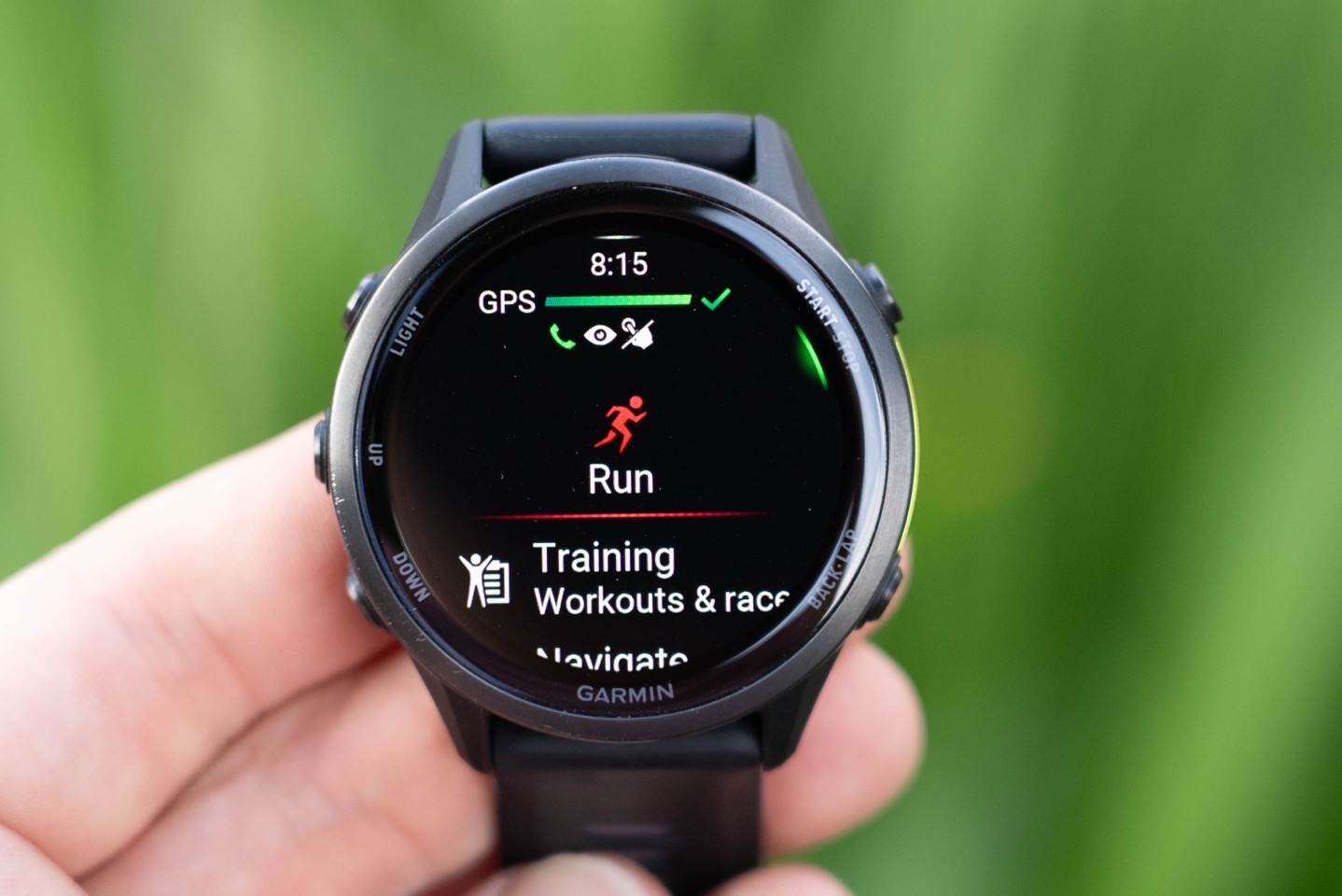
Speaking of sensors, the Forerunner 970 supports the following types of sensors:
eBike, Extended Display, External HR, Foot Pod, Club Sensors, Headphones, inReach, Lights, Power, Radar, RD Pod, Shifting, Shimano Di2, Smart Trainer, Speed/Cadence, Tempe, DogTrack,
The one sensor type that’s been removed from native support is Muscle Oxygen sensors. These are still available with Connect IQ apps, and since the Forerunner 970 now supports up to 4 concurrent Connect IQ fields, this shouldn’t be an issue. Muscle oxygen sensors actually held a unique distinction in that they were the initial example sensor when Garmin first announced Connect IQ a decade ago. The idea was to show how a sensor type could start off as a 3rd party Connect IQ data field, then gain popularity and shift to being a natively supported sensor type. And indeed, that’s precisely what happened. Albeit, in this case, muscle oxygen sensors basically returned back to deep-niche status after companies like BSX collapsed. In any case, history lesson over…
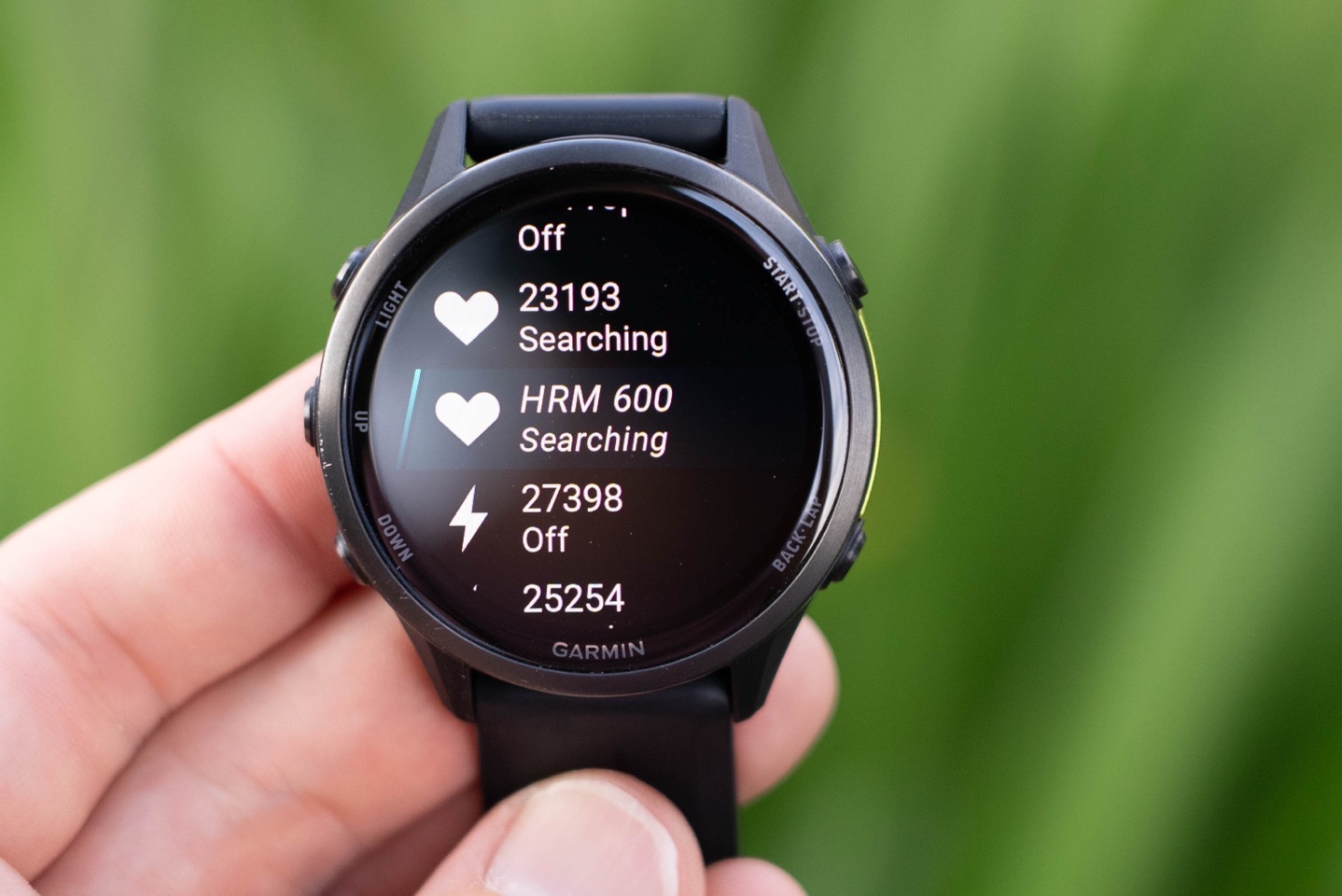
Back in the sport settings page you can configure data pages, data fields, whether or not a structured workout is loaded, and a gazillion other settings.
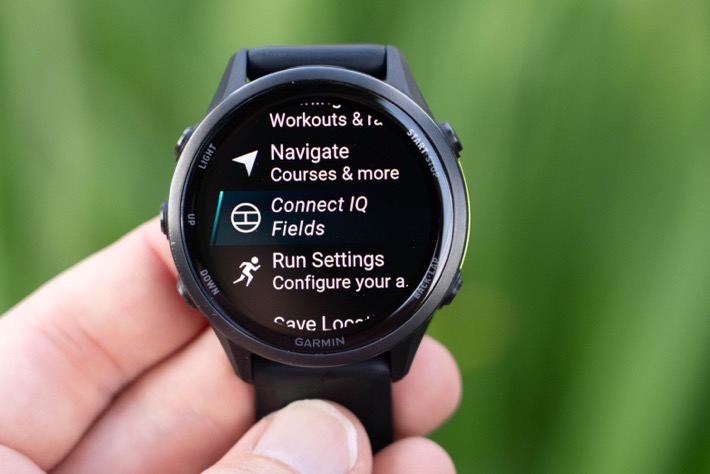
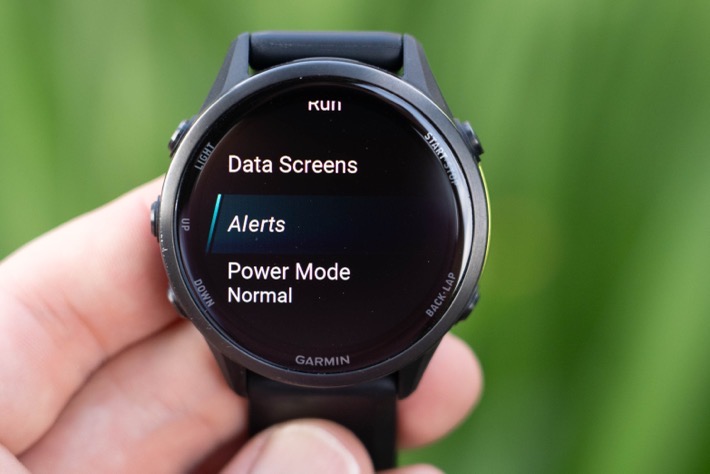
While these have been rearranged a bit, they’re largely all the same. Likewise, Garmin will show any workouts scheduled. These can be ones you manually placed on your calendar, ones a 3rd party platform like TrainingPeaks (and a coach) placed on your calendar, as well as any Daily Suggested Workouts (DSW). DSW workouts are ones that Garmin creates for running and cycling, automatically, to slowly increase your fitness levels. These workouts will vary each day, based on recent training history, sleep, activity, and more. It’ll literally cancel your hard interval session if you got 2 hours of sleep last night. It’s constantly adapting. Here’s an example of showing an upcoming workout from the triathlon side:
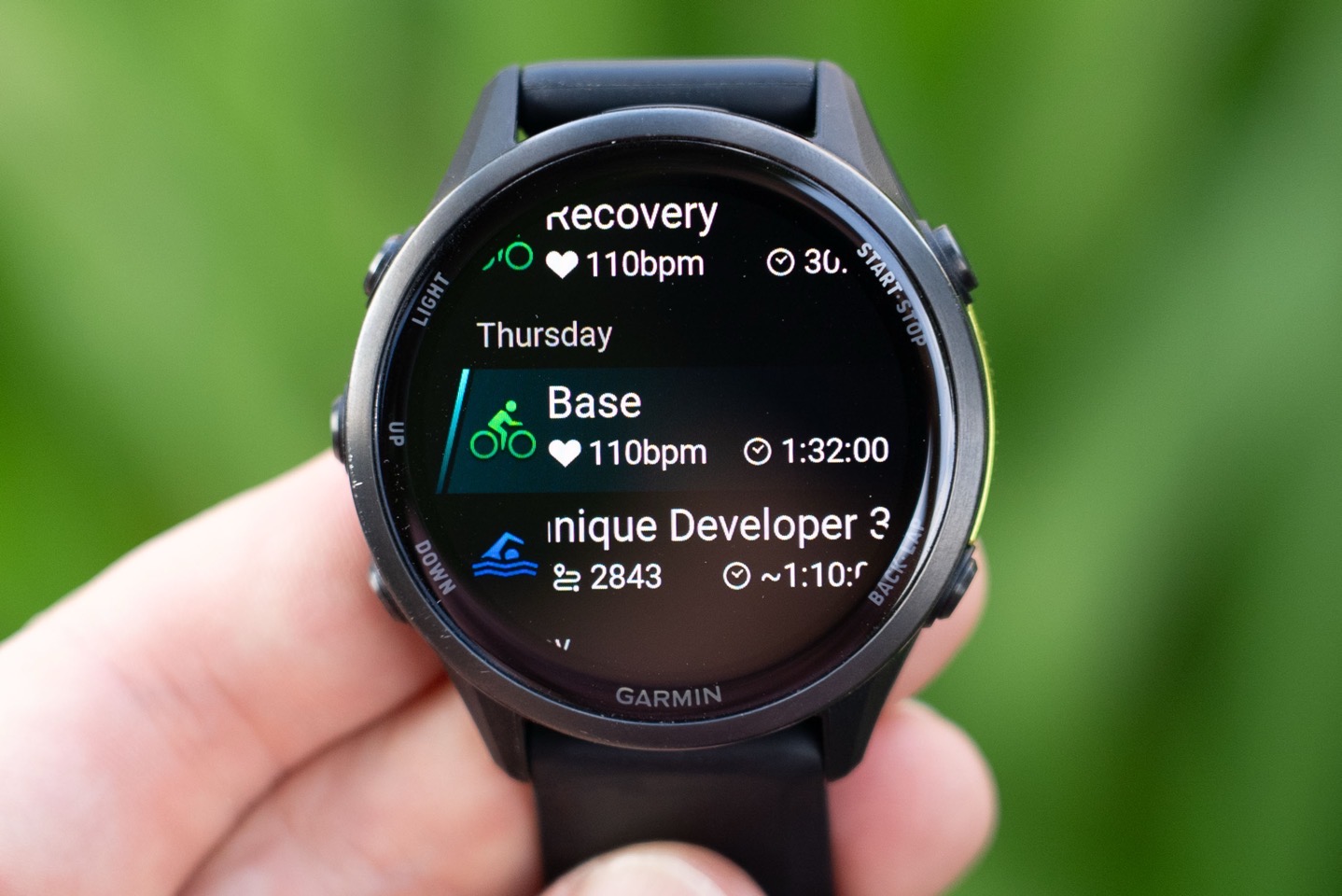
But DSW workouts would be replaced by Garmin Coach workouts if you had set up a specific race on your Garmin Calendar, where it’ll aim to get you to that race (technically speaking it’s going to automatically change your workouts towards any running or cycling event on your calendar, even if you don’t set up the specific Garmin Coach running/cycling plan). In fact, with the Forerunner 970, it now supports triathlon-focused Garmin Coach workouts. Garmin Coach now allows you to create a triathlon training plan, and it’ll add swim/bike/run workouts as needed:

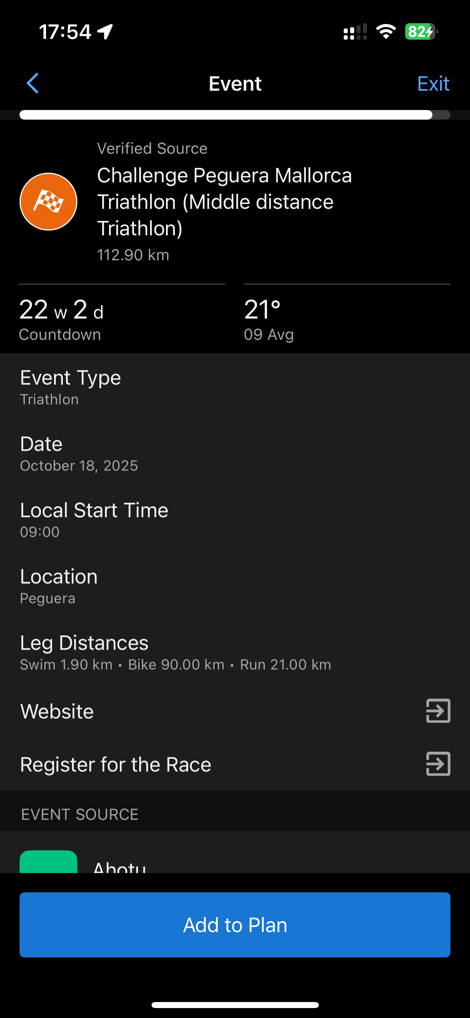

Now, when it comes to data page and data field customization, you can have up to 8 data fields per page, and a gazillion custom data pages. I’m not sure if there is a specific limit on custom data pages, but more than you could ever want to have. That’s in addition to all the various semi-customizable data pages (e.g., virtual partner, map page, time page, etc…).
With all that sorted, let’s just hit start. At this point, you’ll see your data pages as you set them up, and you can iterate through them by using the buttons, or touch if enabled.
You can pause/resume at any time, and also use ‘resume later’, in case you want to stop for a longer period of time (e.g., overnight, or a few hours, to save GPS power by turning off the GPS). Otherwise, all of this works the same as most GPS watches have for more than 15 years. I’ve had no issues with GPS pace stability or anything else on-watch while running, riding, swimming, hiking, etc…
Next, when your workout has completed, you’ll get a slate of data pages with all sorts of summary stats. Here are a few examples. There’s also even more information in Garmin Connect (mobile or desktop), with a gazillion more data pages/fields:
Meanwhile, Garmin also offers a pile of various training load and recovery metrics. Most of these remain unchanged from the Forerunner 965. This includes Training Readiness, Training Status, Acute Load, and more. I dive into how all of these work in the Forerunner 965 post, so I won’t rehash them here too much. That said, if you’re coming from a much older Garmin device (e.g., a Forerunner 935 or 945), note that features like Training Status have evolved quite a bit in the last few years (and in turn, reduced the never-ending ‘Unproductive’ messages you probably previously got).
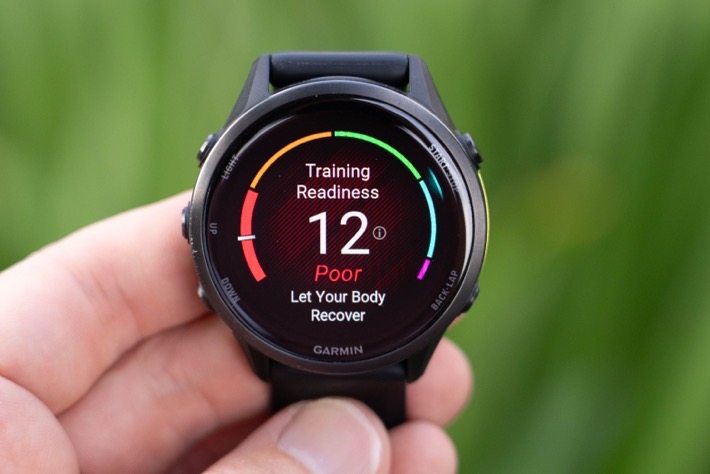
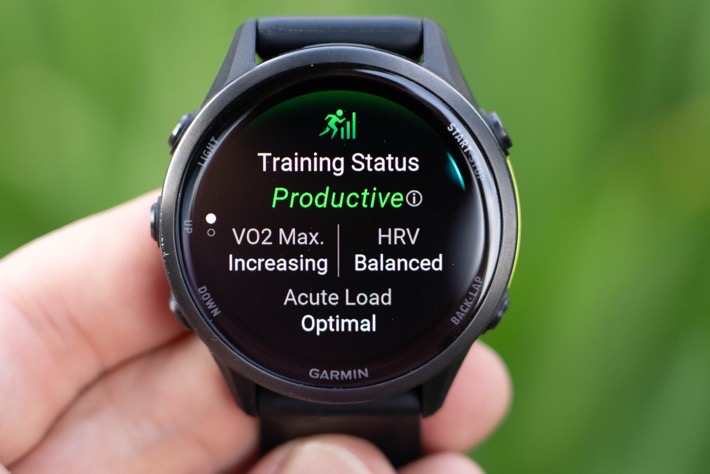
Essentially, Garmin broke out the two core aspects of training and recovery metrics into two main buckets:
– Training Readiness: This aims to figure out how ‘ready to train’ you are at any given minute in the day. This takes into account sleep, training load, recovery, HRV status, stress, and more. In short, this is looking at whether you should train today, rather than how well-structured your training is. Think of this kinda like your best friend (or gut) saying, “Dude, you got 2 hours of sleep last night and ran a long run yesterday, just take a break today, you know you should.”
– Training Status: This is more about whether or not your training is actually going to make you faster, or increase your risk for injury. Think of this more aligned to what a traditional coach would do, in terms of looking at your total training diet (e.g., intervals vs easy workouts vs long steady workouts), and seeing if that blend makes sense. And then, moreover, whether or not your recent training seems to actually be paying off or not. The only caveat here is that Garmin doesn’t take into account future goals, so it doesn’t really know that you’re in the middle of a training camp or such.
In general, I find the change Garmin made about 2.5 years ago for the Fenix 7 (when they revamped all of these) has made a massive difference. These days, if you’re getting an ‘Unproductive’ message, you probably deserve it. With rare exception, it typically means you’ve vastly ramped up training load well beyond your norms, and concurrently have probably spiked your HRV values (usually indicating poor recovery in some capacity).
There are always exceptions, but between my wife and me, in the rare times we’ve unlocked ‘Unproductive’, both of us would agree that said training was probably indeed legit unproductive towards our training goals (even if still fun!).
Ok, switching to a different type of burnout, let’s wrap up with battery burn stats. Here’s an example while riding (with optical HR sensor, power meter paired, and LiveTrack enabled), where it gets the claimed 23 hours of battery life:
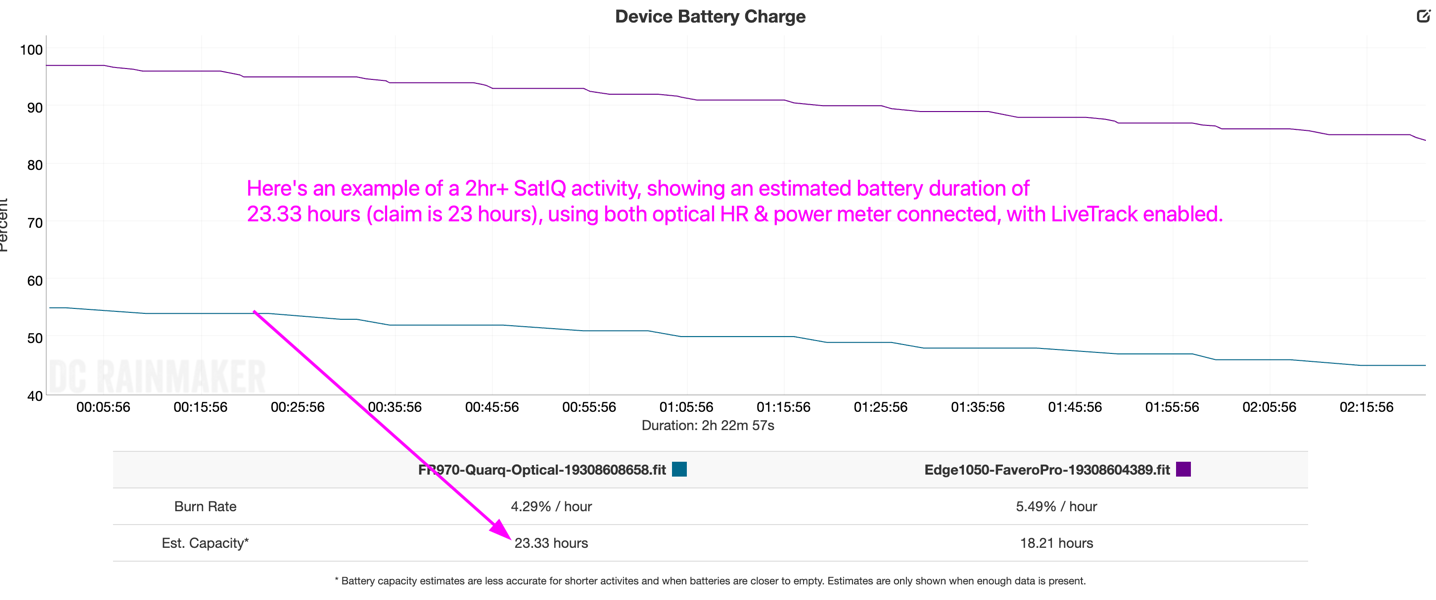
What’s notable about the above is that I had all the default brightness settings on, which means a substantially brighter backlight than required, and far higher battery burn as a result.
For fun, on a 4-hour hike this past Friday, I turned down the brightness to the lowest levels (still brighter than a Fenix 8, for reference), and with full navigation enabled (with route loaded including ClimbPro), got 30 hours with optical, SatIQ, and still LiveTrack:

I suspect if I were to disable route navigation entirely, leave it at the lowered brightness level, I’d get even higher (likely substantially higher).
Either way, the battery in these common GPS modes is exceeding that of the Forerunner 965, which is the main point.
New Running Features:
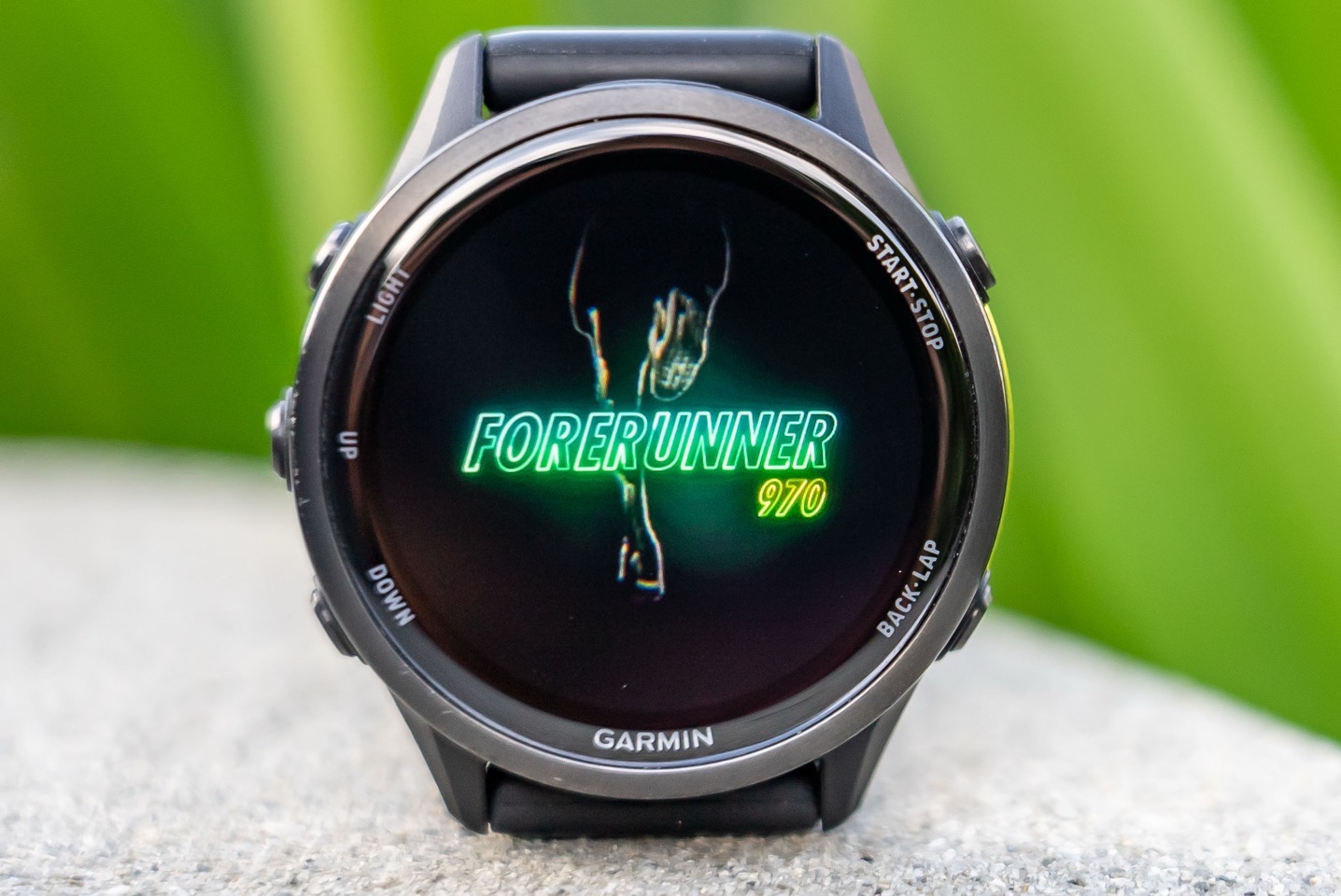
There are a few new running-specific features on the Forerunner 970 that I think are worth diving into more specifically. I expect these will become the new norm on other end devices shortly, so I might as well dive into them here. They are as follows:
– Running Tolerance feature
– Impact Load Factor
– Running Economy (requires HRM-600)
– Step Speed Loss (requires HRM-600)
– Autolap by Timing Gates
– Suggested Finish Line
– Projected Race Time Predictor Feature
Some of these are quick and easy, while others are a bit more complicated. So, let’s dive into the easiest ones first, and then get into the more complex ones as we go along.
Projected Race Time Feature: First up, is ‘Projected Race Time’ feature. This feature is specifically used in conjunction with races you’ve placed on your Garmin calendar/race calendar. Meaning, you’ve added the race, which includes the date/time and race details (such as distance/exact course, etc…). This also triggers Garmin to develop training plans for the race (as it has for years), but we’ll set that piece aside for the purposes of this conversation.
Instead, for this particular feature, it now shows you your predicted finish time in a blue tunnel, showing a bit of a range, assuming you continue to train as you are. Basically, this shows you what’s possible with your current training, or what’s not possible. Here’s an example of a half-marathon I stuck on the schedule:
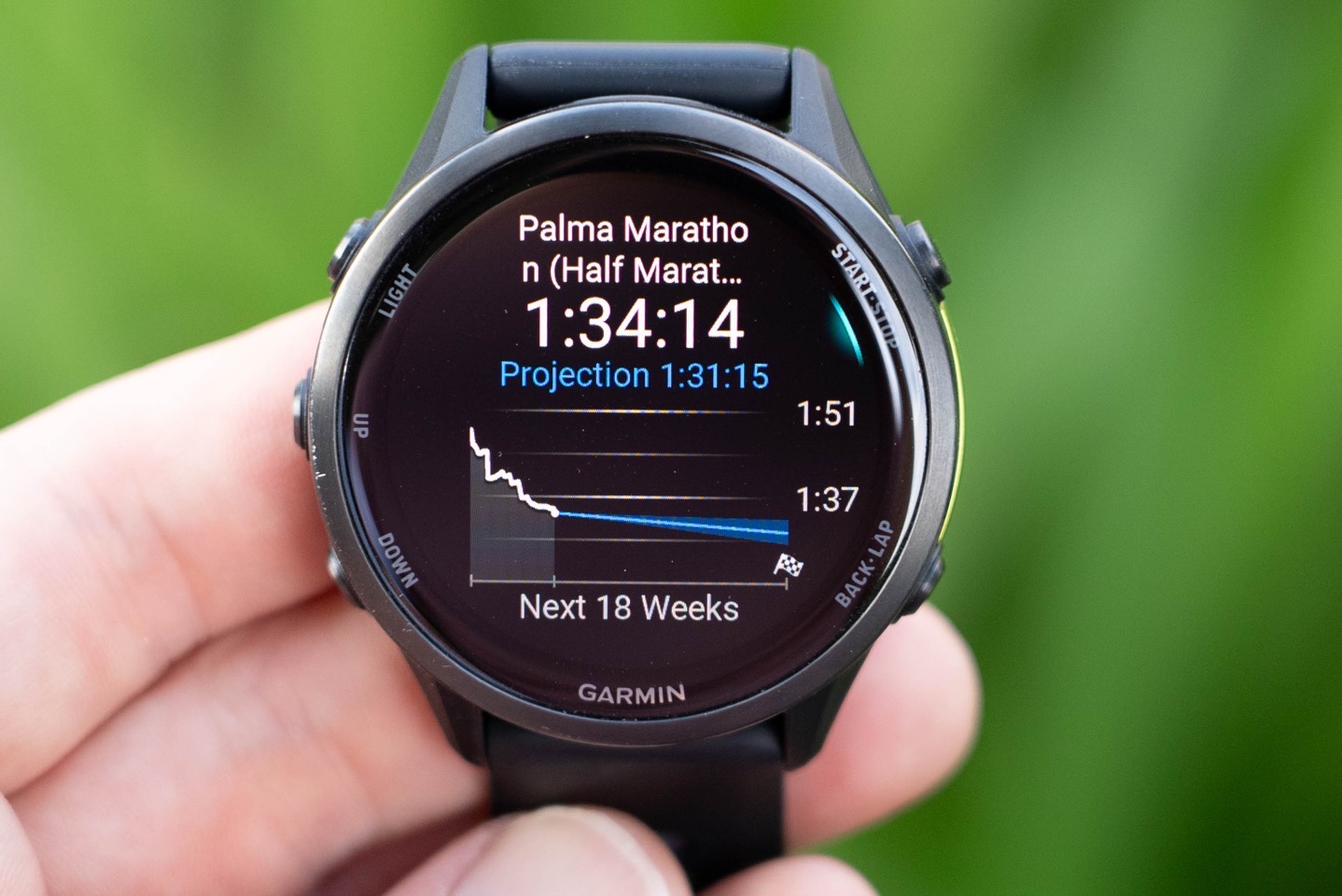
Now, as with many of Garmin’s metrics, this requires that you complete varying intensity workouts to get the most accurate results. That includes easy runs, long runs, painful intervals, etc… The more data types, the better it is at predicting. Lately, my running diet hasn’t included a ton of super-high intensity (want to die) intervals, so that upper-end is mostly missing. Just the way my recent training has gone. Thus, I’d say at the moment Garmin is underestimating my ability, which I’d guess is probably in the 1:25-1:27 half-marathon time, roughly. Additionally, a fall half marathon is substantially cooler than the hot summer temps I’m running in, which will help things considerably.
In any case, I think the feature is still well done, and I’m looking forward to seeing how it shifts as I give it better training data.
Suggested Finish Line Feature: Next up is the Suggested Finish Line feature. A perhaps better name for this feature would be “Automatic Race Trimming”, or “You didn’t remember to stop your watch at the finish line” feature. This feature requires that you have a course loaded for the race/route you’re running. Then, when you go to stop your watch, if it sees that your course (race) route actually ended some distance earlier, it’ll offer to trim all the time after the known finish line.
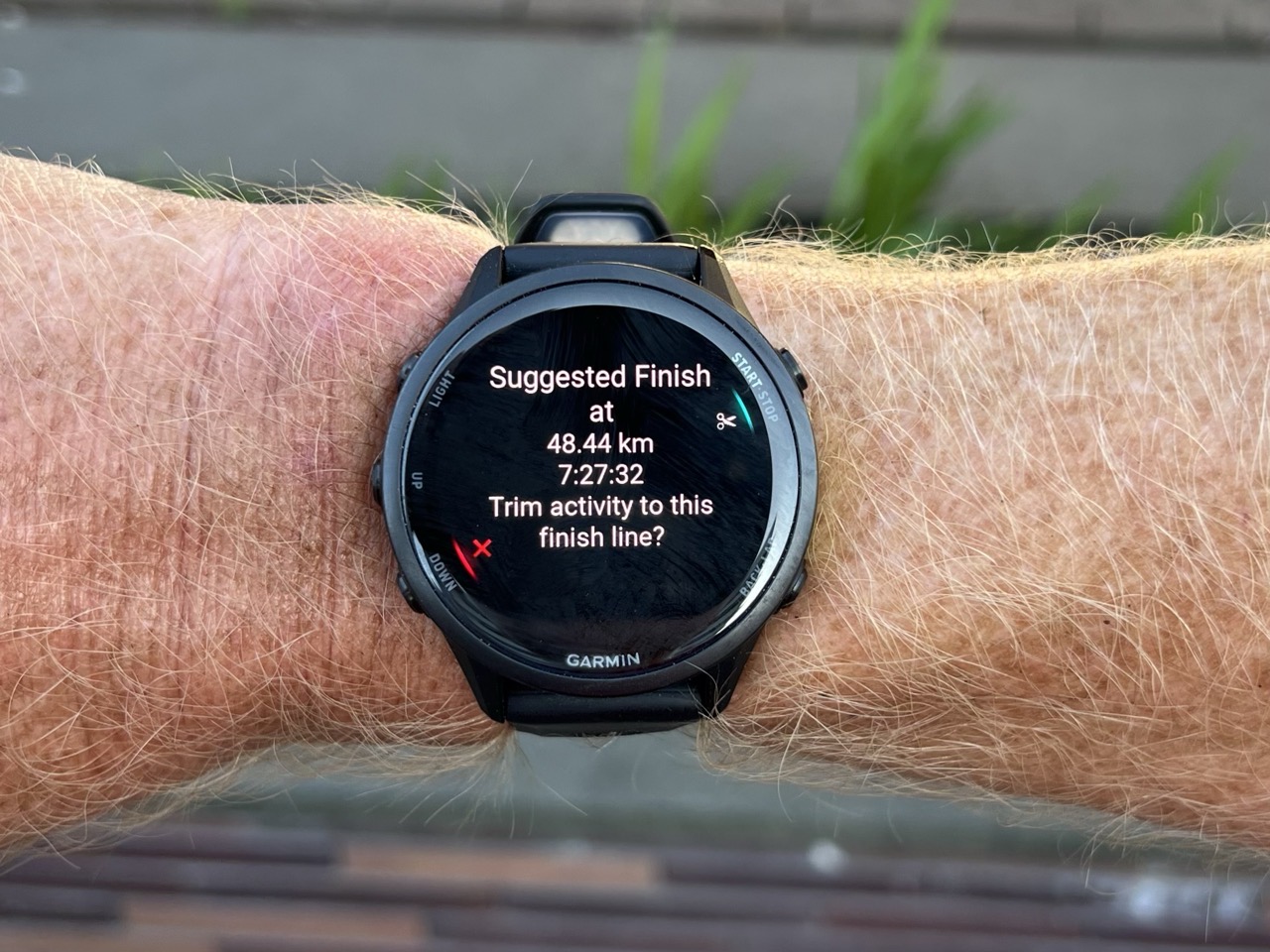
The idea here is that you ran a race and then forgot to press the end button at the finish line. Then, 45 minutes later, while eating sliced oranges in a finisher tent, you look down and realize you never hit stop. When you hit stop now, it’ll say “Hey, do you want to trim all the time/distance since the finish line?”, and you can simply answer yes, and it’ll trim all that junk off.
Now, I’d argue this is pretty cool. But at the same time, you can already do this on Garmin Connect, which I feel would give you a much more exacting result, since you could really ensure everything is down to the second you stopped running (in case the finish line isn’t precisely where your route file thought it was). Still, I suppose that since Garmin already has the course file, they might as well offer to save you the time, and just knock it out then.
AutoLap By Timing Gate: Next, another feature that requires a course to be loaded, is ‘AutoLap by Timing Gate’. This feature is also designed for races, and could also be better described as “Pace by course mile markers” or “Pace by course kilometer markers”, which is what it does. This solves the problem of big city marathons (or ones with poor GPS) where you do a lot of crowd-weaving, accumulating extra distance, resulting in your paces being offset from reality.
Because that weaving distance doesn’t matter to your final race time (which only cares about when you cross the finish line), it means if you follow pace splits on your watch, you’ll likely end up being slower than your goal race. By using this new feature, it instead gives you split paces based on predefined ‘Timing gates’ (aka mile markers). Thus, no matter how much wandering you did, your split is only going to happen when you pass the predefined mile marker (timing gate) on the course.
To enable this, you’ll need to go to Garmin Connect (on either desktop/web or smartphone app), and open up your course. You’ll see the ‘Timing Gate’ option on the left side, and then specify whether you want it in miles or kilometers.
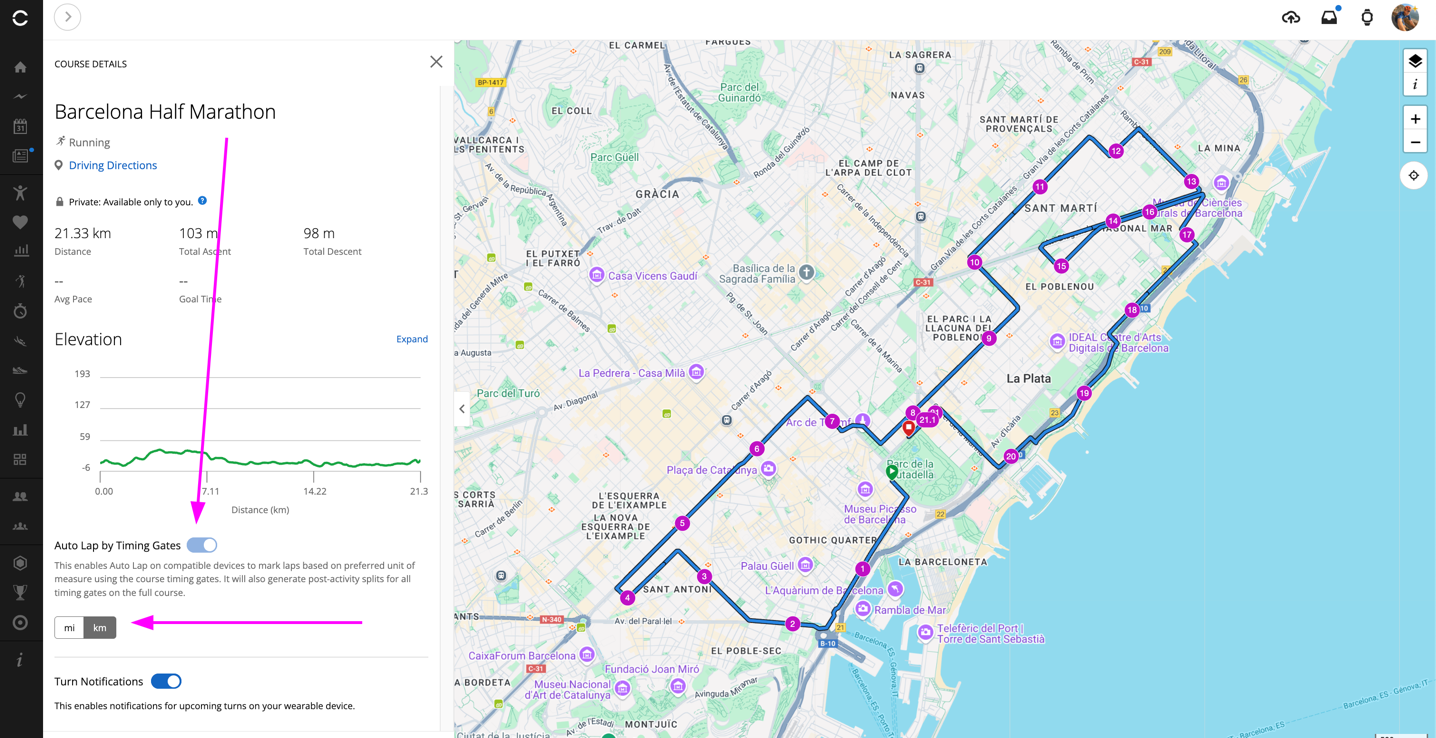
(Note: If the kilometer markers/mile markers don’t automatically display on the map, you can toggle them on/off via the map later option in the upper right corner, under course points.)
Once that’s done, open it up on your watch. You’ll get a notice that this course has timing gates:
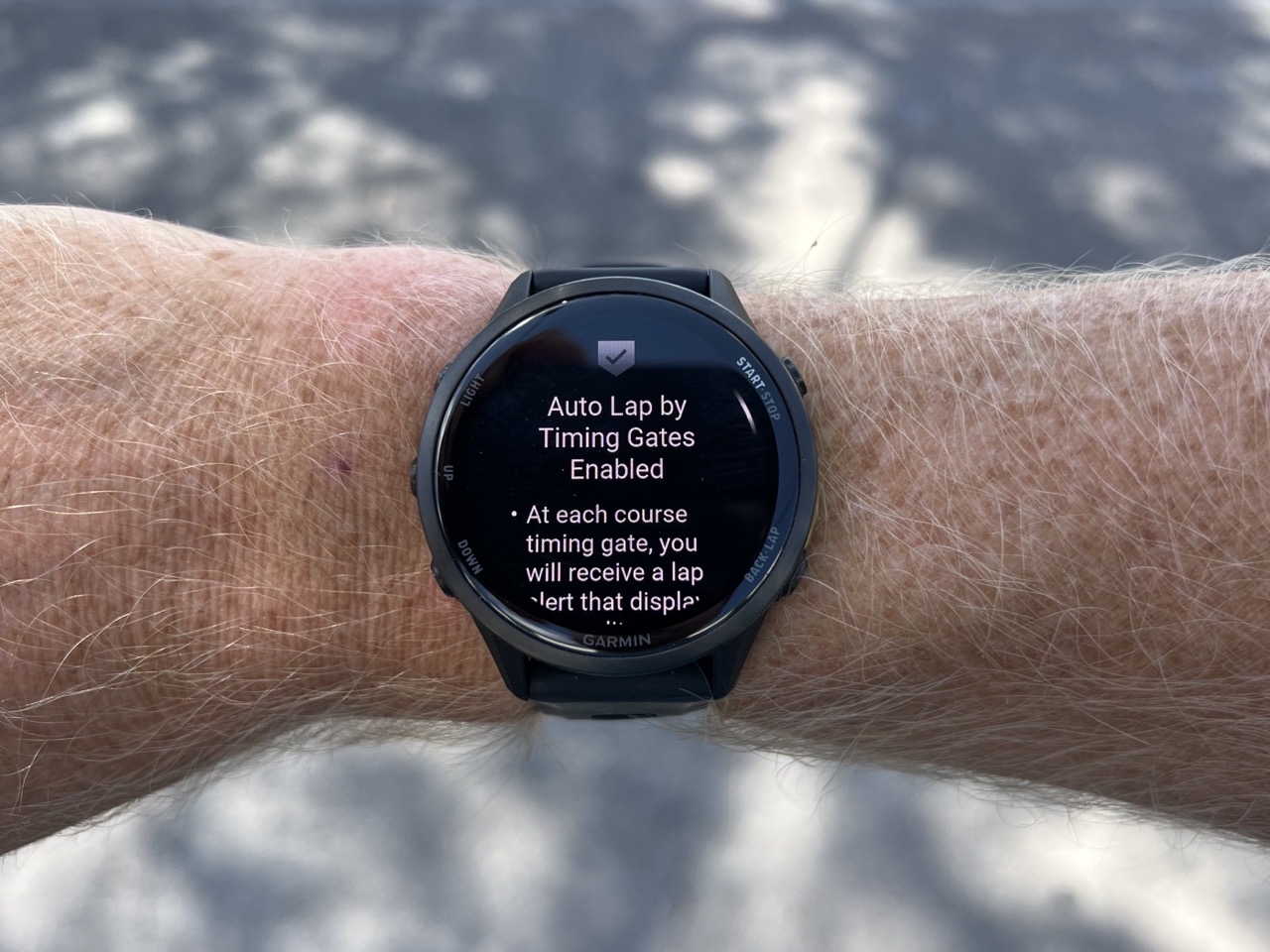
Then, while running, you’ll see a slightly tweaked split icon/page, when you cross these predefined mile markers, including showing your real-world pace between those two points, but also notably the actual distance you ran (1.01km in my case, versus the 1.00km on the official course):
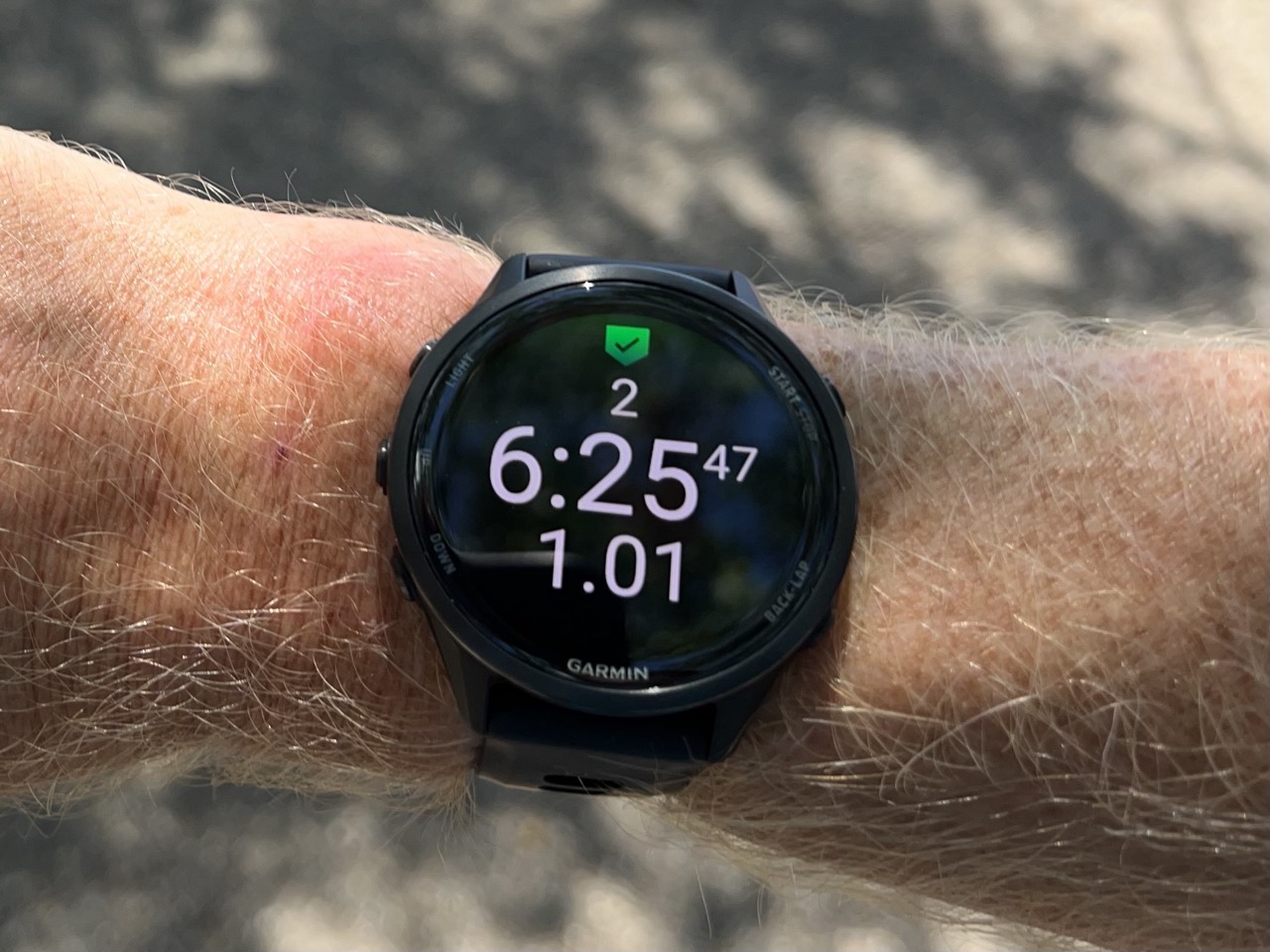
What’s really notable here is that on a 50KM run I did, with a course, there was a detour for…umm…a while. And in one case, said detour included a 3KM lap, because it ultimately never triggered until it found the next proper lap marker on the course. Pretty neat.
This feature is cool technically, but does seem a bit overthought. If we look at the free Garmin Connect IQ app called Race Screen that I wrote about nearly a decade ago, it does roughly this same concept, except you simply hit the button when you pass the mile marker on the course. The slight downside to that is if you screw up, you can’t undo. But Garmin’s ‘Lap Undo’ feature they added a year or so ago, would have solved for that.
Impact Load: Impact load is arguably the new metric that I think makes the most sense, and is probably the most useful. Essentially, Impact Load aims to figure out the ‘real’ cost of your run, in terms of relative distance. In other words, let’s pretend a steady 10KM run on perfectly flat ground has a corresponding baseline impact of 10KM. Next, we look at a run that has some steep ups, and more critically, steep downhill sections that slaughter your legs. That 10KM mountain run feels (to the legs) more like you did a 16-18KM run on flat ground. Essentially, it’s normalizing distance.
This concept is hardly new to training metrics. Metrics like GAP (Grade Adjusted Pace) has been around for many years, to normalize the ups and downs in terms of your pacing/efforts. And it only makes sense to apply it here as well. You’ll see the impact load listed for all runs at the end of the run:

Factors that can…umm…impact…the Impact Load are: terrain (hills), intensity (e.g. pace), and running form. All of which make sense, as again, if you run that 10KM very hard, it’s going to feel much different than 10KM easy, in part because your running form is different.
You can also see and compare these distances on Garmin Connect as well, showing the impact load for any given run.
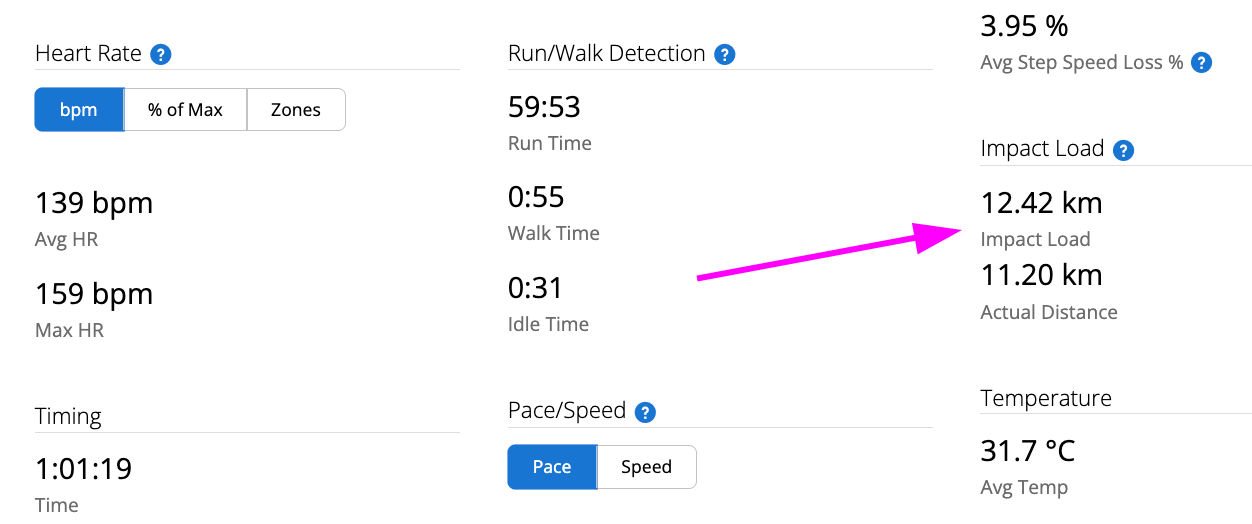
And also see how it shifts during a run:
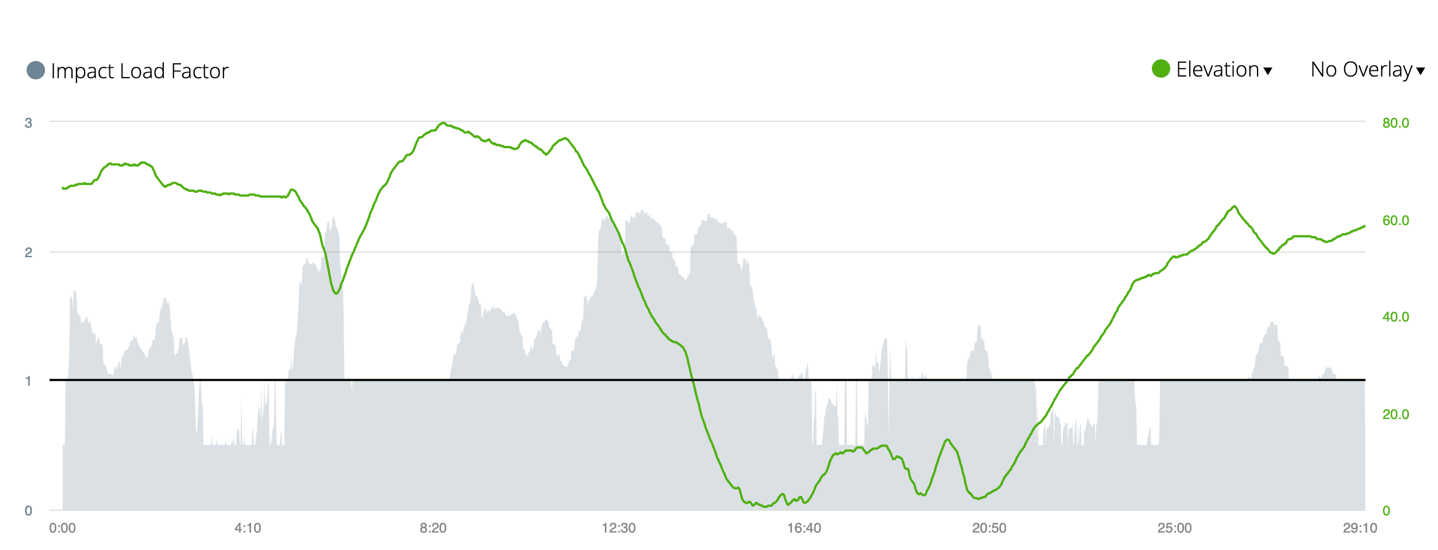
In all my runs, the Impact Load has seemed pretty darn close to what I’d expect. For some hard/fast paced, short runs with steep ups/downs, it clocked a much higher impact load value, which my legs agreed with the next morning. Likewise, for runs on near-flat conditions, the real vs impact load miles were pretty similar.
Again, out of all the metrics Garmin added here, this is probably the most useful one – at least in terms of justifying why your legs feel shot the next morning after that steep and fast descent out of the mountains.
Running Tolerance: Next, is Running Tolerance, which leans heavily on Impact Load. This metric looks at how much you’ve run recently (including this week), and determines your baseline, which it calls a ‘Running Tolerance’. The rough idea here isn’t much different than what coaches would do, in terms of determining your baseline mileage that your body can safely absorb without injury.
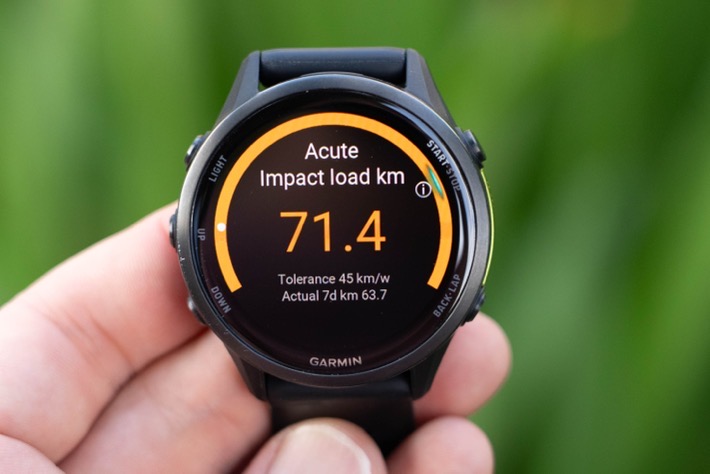

If you look at the Running Tolerance page, you’ll see three numbers (in either kilometers or miles, depending on how you set up your watch):
Acute Impact Load: This is showing the last 7-days of load, albeit weighted towards more recent runs (just like Acute Load)
Tolerance: This shows what Garmin thinks is your running tolerance
Actual 7D load: This shows your ‘pure’ mileage, non-impact loaded. So basically your actual ground mileage.
Now, in theory, I think this is a good idea. However, in practice, I’ve found it to be far too conservative. Admittedly, I’m a somewhat weird case in that I spend a fair bit of time across cycling, running, and swimming, but will often favor one sport or the other at certain times of the year. So recently, it’s been more heavily cycling, but then I got suckered into running a marathon (err…50KM run) one Tuesday, and so just did that. I had no problems going out for another run the morning after either. Thus my running tolerance is quite a bit higher than Garmin wants to give me credit for.
The last few weeks I’ve been running 70-90KM/week, but it’s only barely giving me a tolerance in the upper 30’s to low 40’s. Frankly, it should have scaled up faster than this. Sure, I can see how after the first big week it was like ‘Nah dog, you shouldn’t be doing this’. But at this point, catch-up Garmin, this volume for me is no big deal. Of course, I also get that Garmin will always err on the side of injury prevention over mileage.
Running Economy & Step Speed Loss: I’m grouping these two together, because they go hand in hand. Can’t have one without the other. And both require use of Garmin’s HRM-600 external chest heart rate strap.
First up is Step Speed Loss, which aims to figure how how efficient your running stride is, specifically with respect to time (and thus speed) losses upon each foot strike. This manifests itself as a metric scored from 0-10, which is constantly changing (every second throughout the run), and you can see it as a real-time data field if you want to:
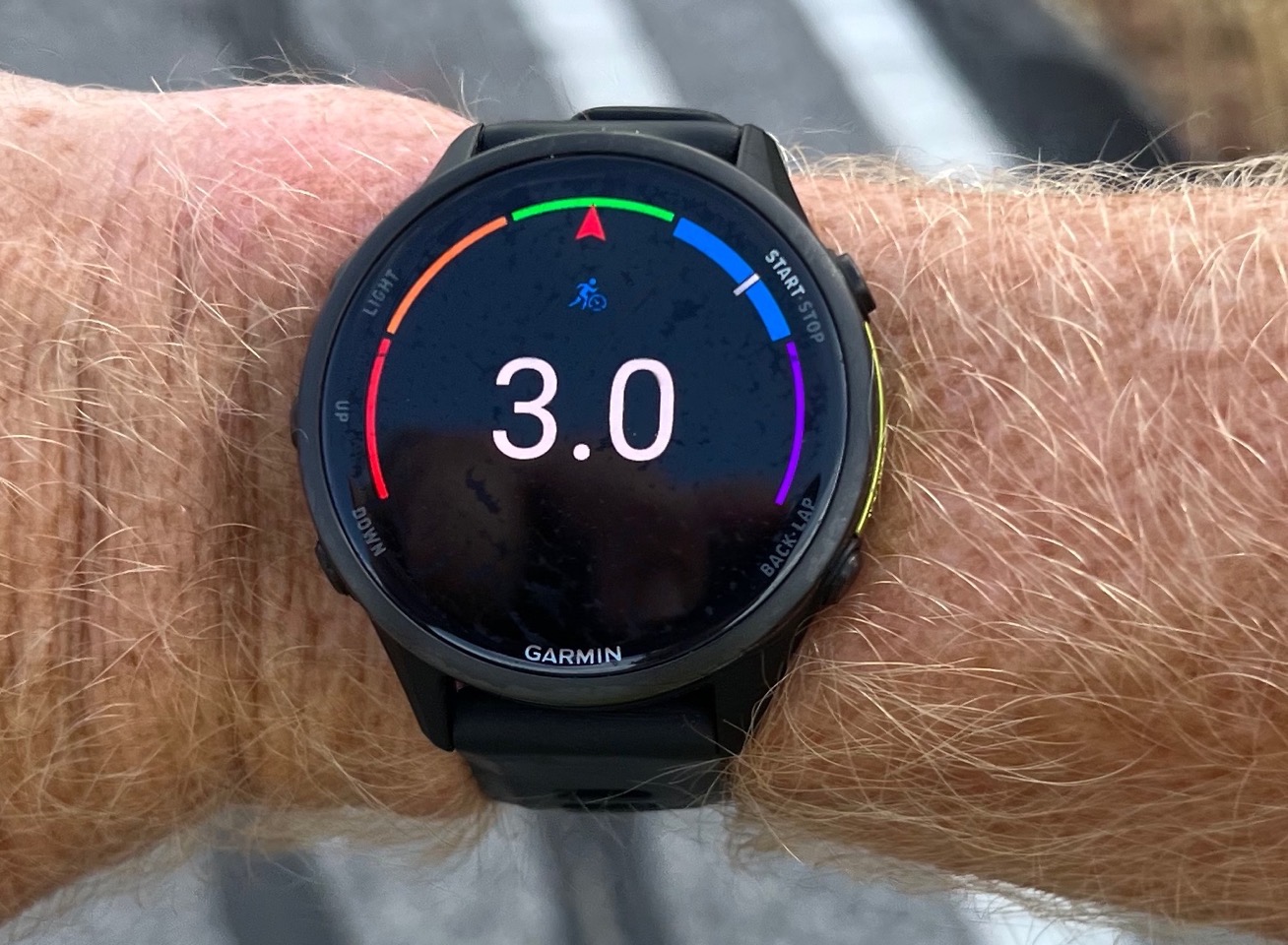
A higher number is worse, a lower number is better. You can pretty easily see this change throughout the run, especially if you change your stride a bit, or as you go up/down hills. At the end of the run, you’ll get an average score as well.
Garmin then takes this Step Speed Loss metric, and rolls it into Running Economy, which ostensibly tells how efficient you are as a runner. However, be warned, this metric takes quite a number of runs to show up. In my case, it was about 7 runs and 115km of running, before it appeared. Further, Garmin stresses that they will ignore runs with significant elevation variations, and are primarily evaluating your form on easier and flat runs.

You can see this metric change (slightly) after each run, and then see a monthly chart of it as well (one dot per month).
The challenge I have with the Running Economy feature (aside from it requiring the HRM-600), is that it’s not obviously and clearly actionable as to how to make it go up/down. Even more so, it effectively punishes me from doing harder interval runs, or trail runs, or runs with elevation. As none of those ‘count’ or are considered. Instead, it wants easy and steady runs. Not even so-much long runs at long run paces, as those too seem to impact it negatively.
Thus while the gamification part of my brain wants to get a better score, the reality part of my brain says ‘No, this is stupid, I’m gonna go do a 15KM trail run in the mountains, instead of a silly easy 45 minute run on perfectly flat ground’.
Whereas I contrast this to Impact Load, that makes an enormous amount of sense in my brain. I do an easy run on flat terrain, and my Impact Load matches my actual mileage. Whereas I do a strained hard interval run or run on challenging terrain, the Impact Load is much greater than actual mileage – but that’s how my legs feel. It’s the closest thing (and first time), we’ve ever seen Garmin attempt to capture muscular load.
Mapping & Navigation:

(Above: ClimbPro showing my total ascent left on this particular climb, using navigation/routing)
The Forerunner 970 has offline mapping, with downloaded maps for the region you bought it in (and free download maps for other regions around the world). These maps are so-called TopoActive maps, and include not just roads/trails/etc, but also topographic basemaps and points of interest. They are, by far, the most detailed maps out there for any watch brand on the market. The Forerunner 970 adopts some of the new mapping tweaks seen on the Fenix 8, mostly around the user interface. These are fairly minor, but it does add automatic recalculations for round-trip routes when you go off-course. Or at least, it’s supposed to. More on that in a minute.
But maps are only one piece of the puzzle. First up, there are routes and navigation. The FR970 lets you download routes from your phone/computer, as well as wirelessly receive routes from other Garmin devices supporting Garmin Share (such as at a trailhead). And of course, third-party platforms like Strava, Komoot, and RideWithGPS can also push routes to your watch too, automatically as soon as you create them. These all end up in Garmin Connect, where you can edit them if you want.
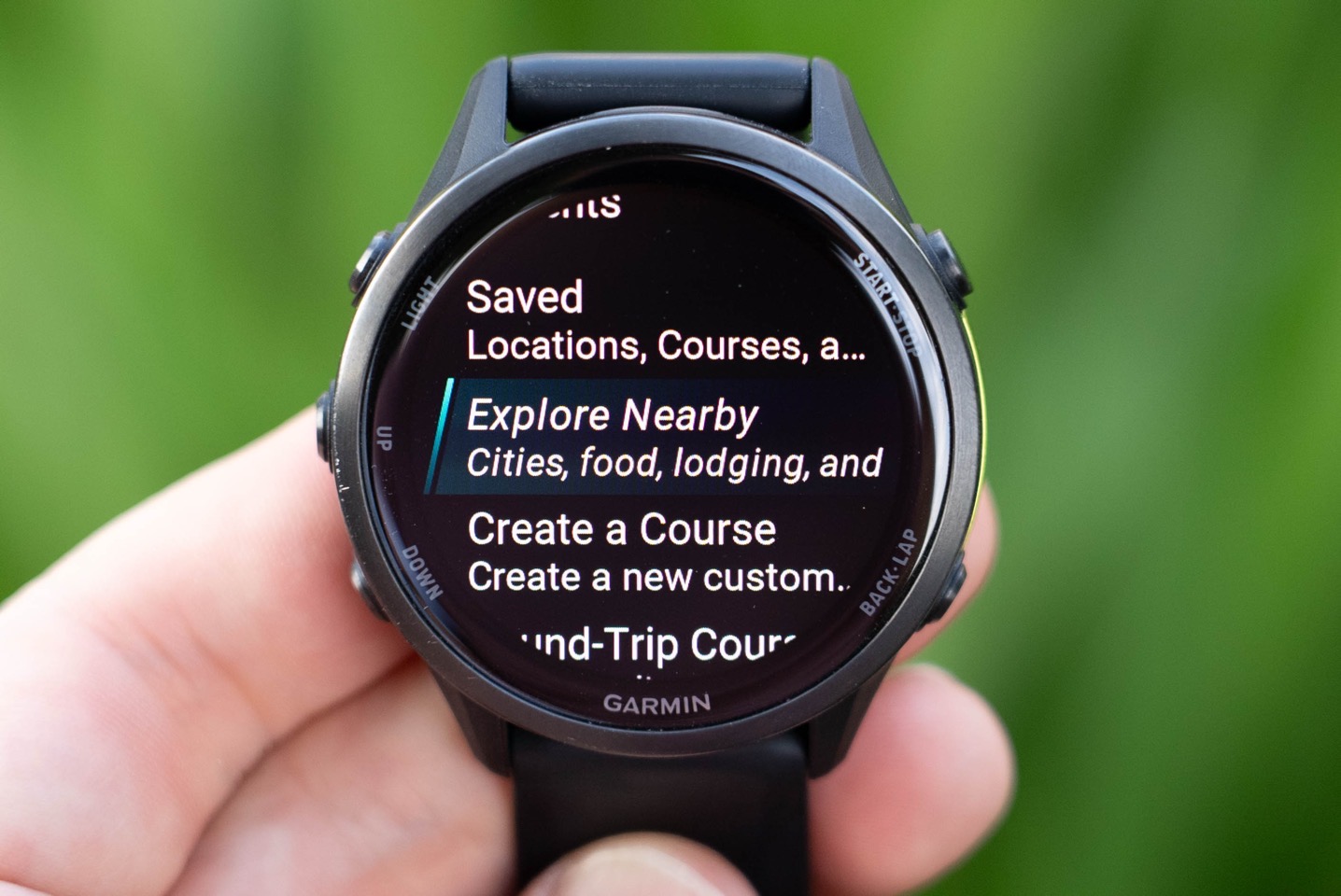
Once on your watch, you can load up a route and preview details about it. This can include not just the route and elevation profile, but automatic categorization of climbs in Garmin’s ClimbPro. This is one of my favorite software features, and will automatically splice-up my longer hikes and all the individual climbs/descents. It’ll then show exactly how much distance/ascent is remaining, in real-time, to the top of the climb.

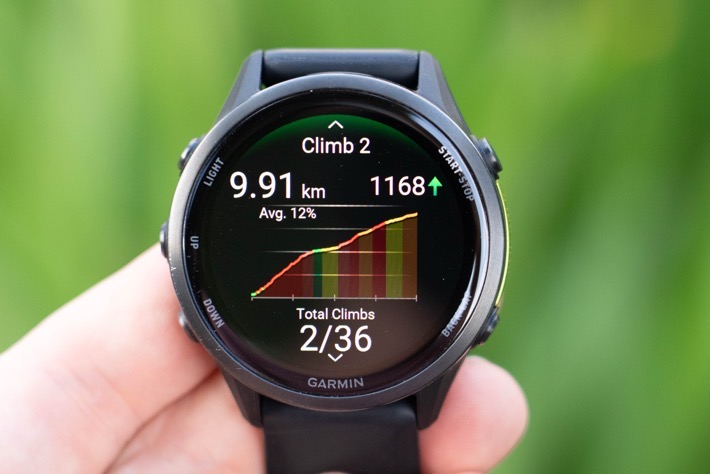
After starting a route, you’ll see the route on the map, and receive turn alerts as you approach a turn. If you go off-course, you’ll receive a warning that you’re off-course, though it won’t re-route you automatically. You can re-route if need be though, using the detailed maps onboard. All of this worked just fine for me. Likewise, you don’t have to create routes ahead of time. You can simply use the map and select a point off in the distance, or select a POI (point of interest) from the database, such as cafes, etc, or a GPS coordinate.
One such feature is round-trip routing, where it’ll create a course of your predetermined length, using heatmap/popularity route data. You can specify which direction you want this to go (West/East/North/South, or anywhere). And in general, it does a pretty darn good job of creating really good routes that you actually want to go on.
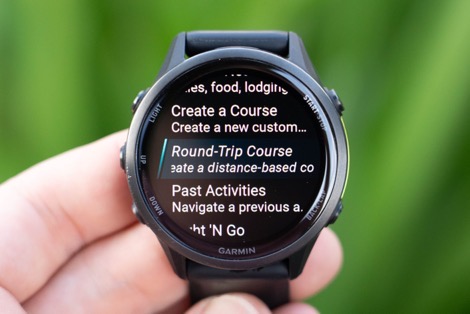


However, the Forerunner 970, like the Fenix 8 before it, headlines a new feature that’ll automatically re-route you on the fly if you go off-course on that round-trip route. Let’s say you want to run a few hundred meters off to see an epic viewpoint or such. It’ll handle getting you back to the start with the new route.
Except, it doesn’t work.
In fact, not only did it not work, it outright kills off the entire route, immediately ending navigation entirely. I was able to replicate this on not just the Forerunner 970, but also the Fenix 8 (I had no issues with navigation/etc on the Fenix 8 otherwise, and in fact did all these tests concurrently with a Fenix 8 too). It seems that sometime over the winter, the new re-routing feature of the round-trip routing has been failing, and Garmin failed to notice or fix it.
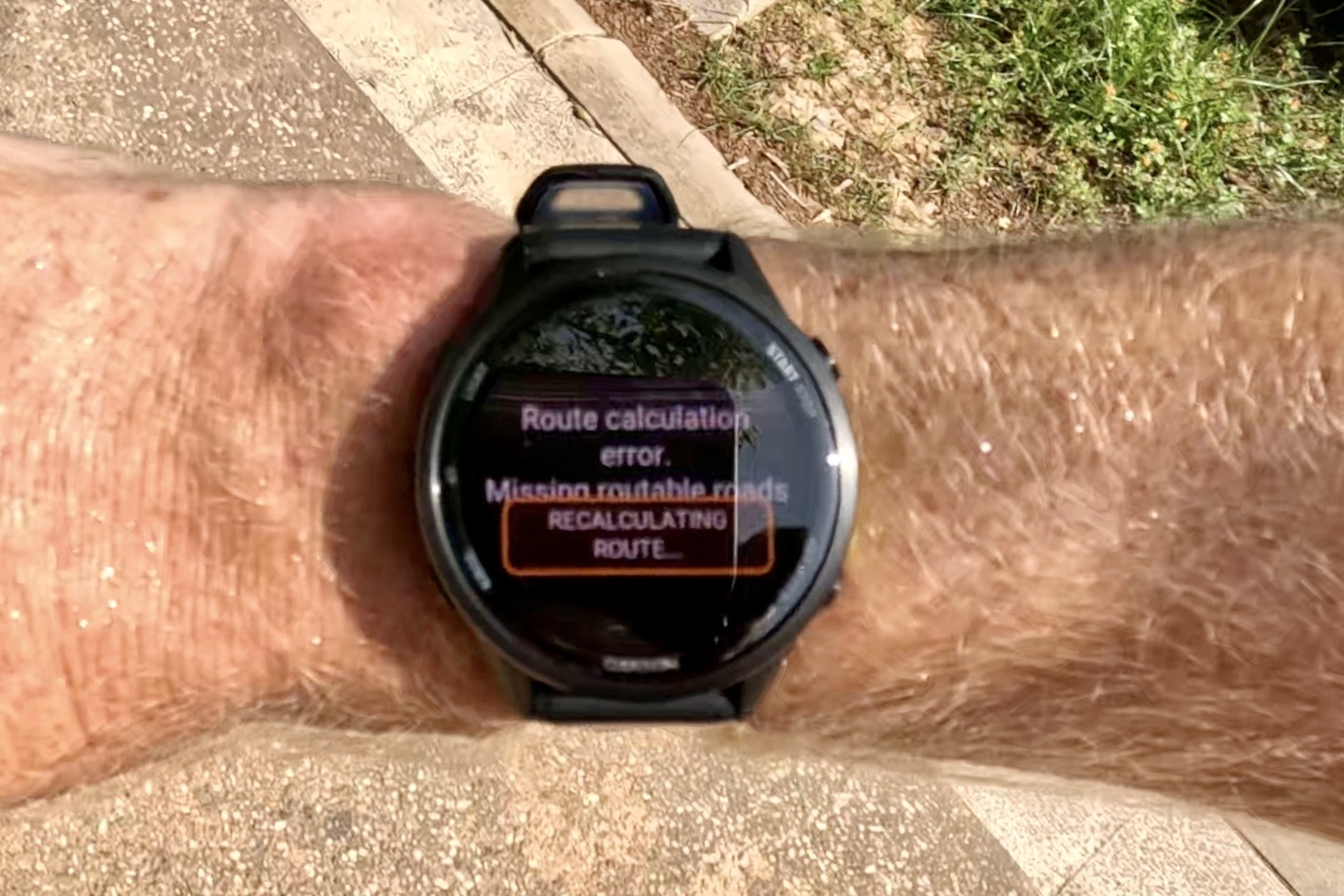
Given this is a headliner marketing feature of the Forerunner 970 that they highlighted, I was pretty perplexed that it did not work. Not just not working, but failing spectacularly. So I went back to Garmin and asked for an explanation…and they’re digging into why it failed, and have confirmed it can fail.
Now, setting aside the on-device round-trip-routing bug, everything else worked perfectly fine in terms of routing. And, I very rarely (virtually never) use the round-trip routing feature on the watch. I simply create almost all of my new routes on Strava, Komoot, or Garmin Connect before I head out. If I need to get back to a point, then I’ll do it on the watch itself, but that’s different than round-trip route (that’s simply called “Back to Start”, which also worked fine for me).
I will also note that the map render speeds, though, are pretty slow, especially compared to some of their competitors (especially the COROS Pace Pro). On one hand, that sucks. On the other hand, that’d be ignoring the fact that the Garmin map has absolute boatloads more data on it than all of their competitors. That extra data on the map comes in the form of heat map data, denser POI data, topographic shading data, and probably numerous other things I’m forgetting. You can indeed toggle map layers on/off, which will speed up the rendering, though.
GPS & Heart Rate Accuracy:
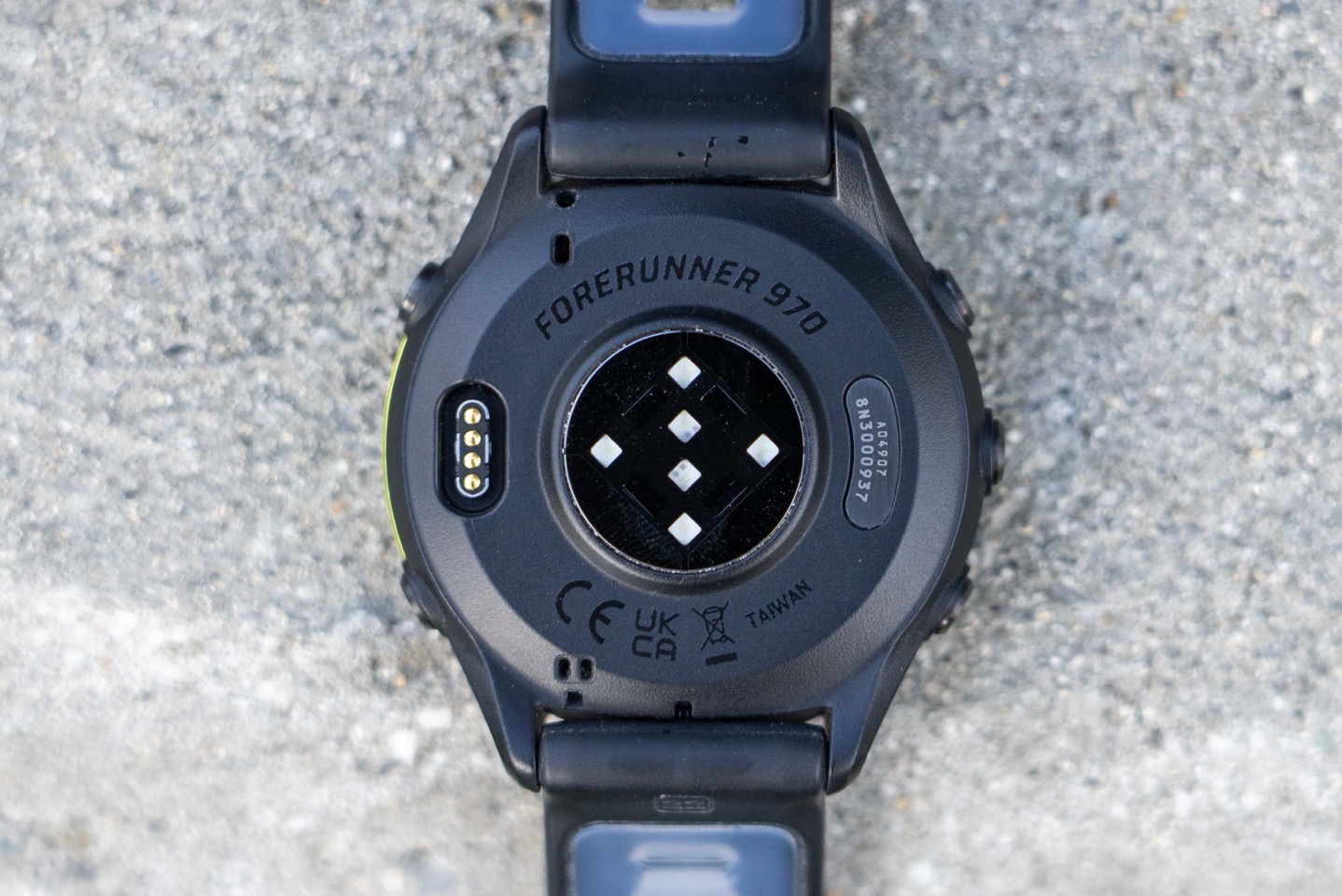
In this section, I’ll look into the heart rate accuracy during workouts, as well as the GPS accuracy during workouts. These are compared to additional reference units during all workouts, typically 2-4 other GPS units, and typically 2-4 other heart rate sensors. Other heart rate sensors usually include a chest strap, and other optical heart rate sensors placed on the other wrist, as well as upper armbands.
The Forerunner 970 contains both a new optical HR sensor (compared to the FR965), as well as a new GPS chipset (compared to the FR965). And in fact, we do see differences with both of these compared to the past.
Starting off with the easier trail run, and looking at the GPS track here, no obvious issues from any of the units:
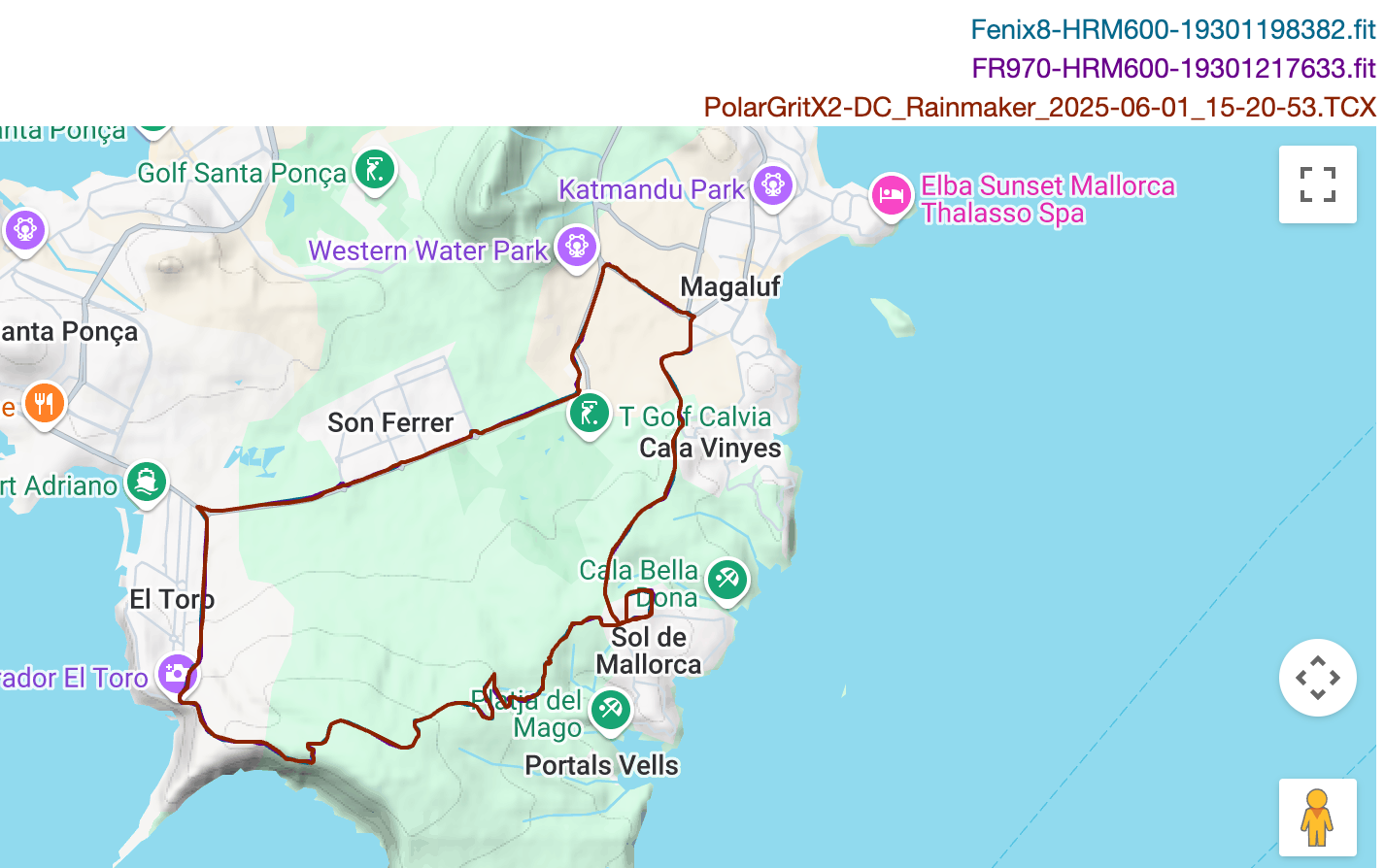
So, then picking a section in the trees, again, looks solid (as I’d expect based on past history).

In looking at the rest of this run, there were no concerns in terms of GPS on the rest of the route, it was spot on.
Likewise, for a relatively boring run on a straight road, no issues here:

Next, on the running side, we’ve got these 400m repeats. We can see the Forerunner 970 pretty much nailed all of these near perfectly – a substantial difference from the also just-announced Polar Grit X2 that really struggled here (in purple).

But what we see above is pretty much spot-on in terms of Garmin’s Elevate Gen5 optical HR sensor on most workouts, including interval runs.
Meanwhile, the GPS track accuracy was also good. This was simply doing loops on relatively open-sky roads.
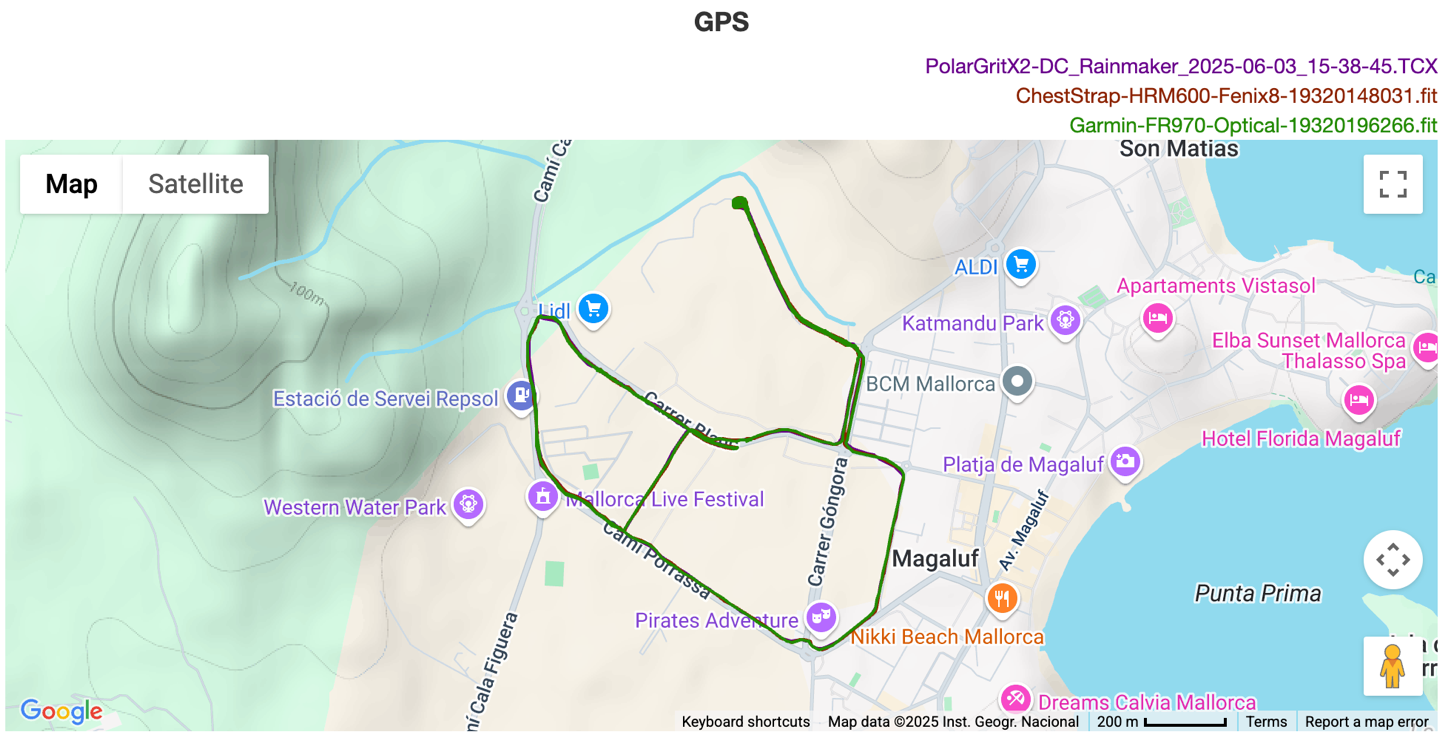
Ok, so let’s look at an indoor cycling workout real quick, then an outdoor one. First, the indoor one:
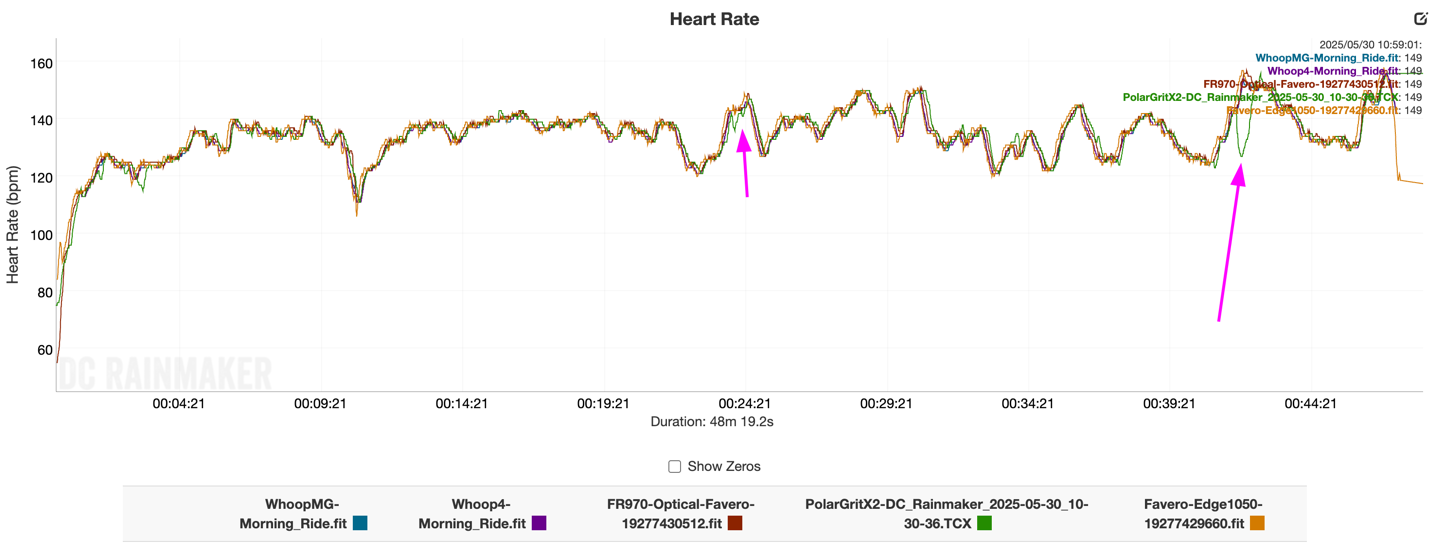
As you can see, virtually spotless perfection here.
Next, moving outside. Again, you can see the Forerunner 970 is virtually identical to the chest strap, with only a few brief seconds where it varied slightly. Note that the random dropouts you see there are not an HRM-600 issue, but rather a bug in that particular Edge 1050 firmware related to over-statuation of connections, alongside a secure channel HRM-600 connection. Garmin’s confirmed there’s a bug fix coming for that in the next firmware update.
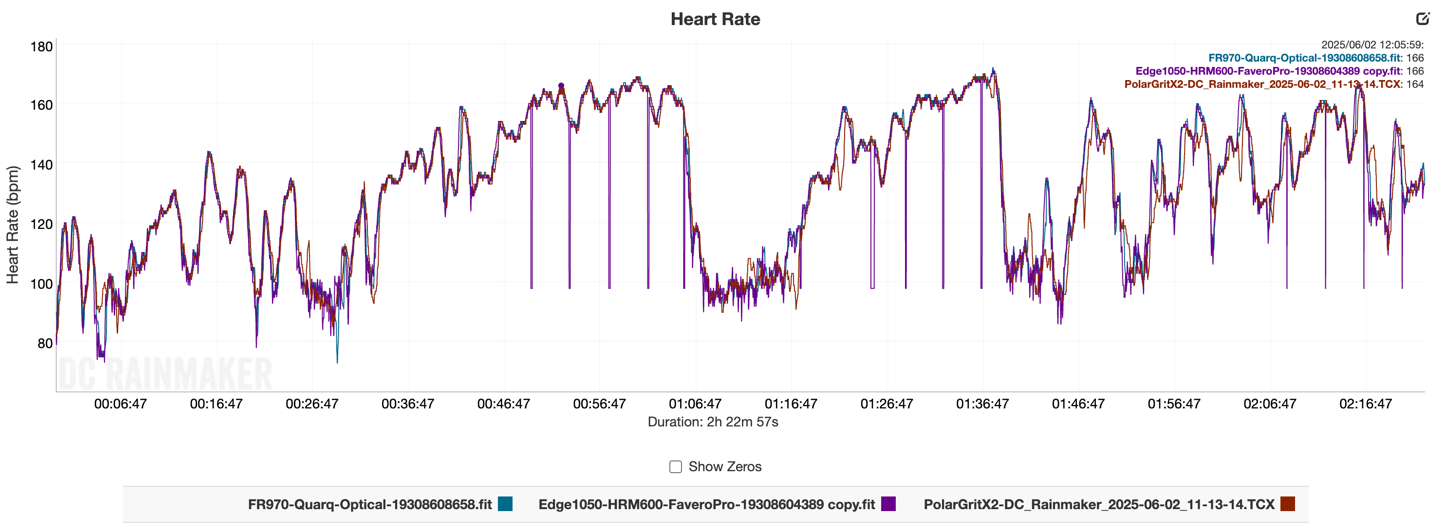
As for GPS, at a high level, it looks good:
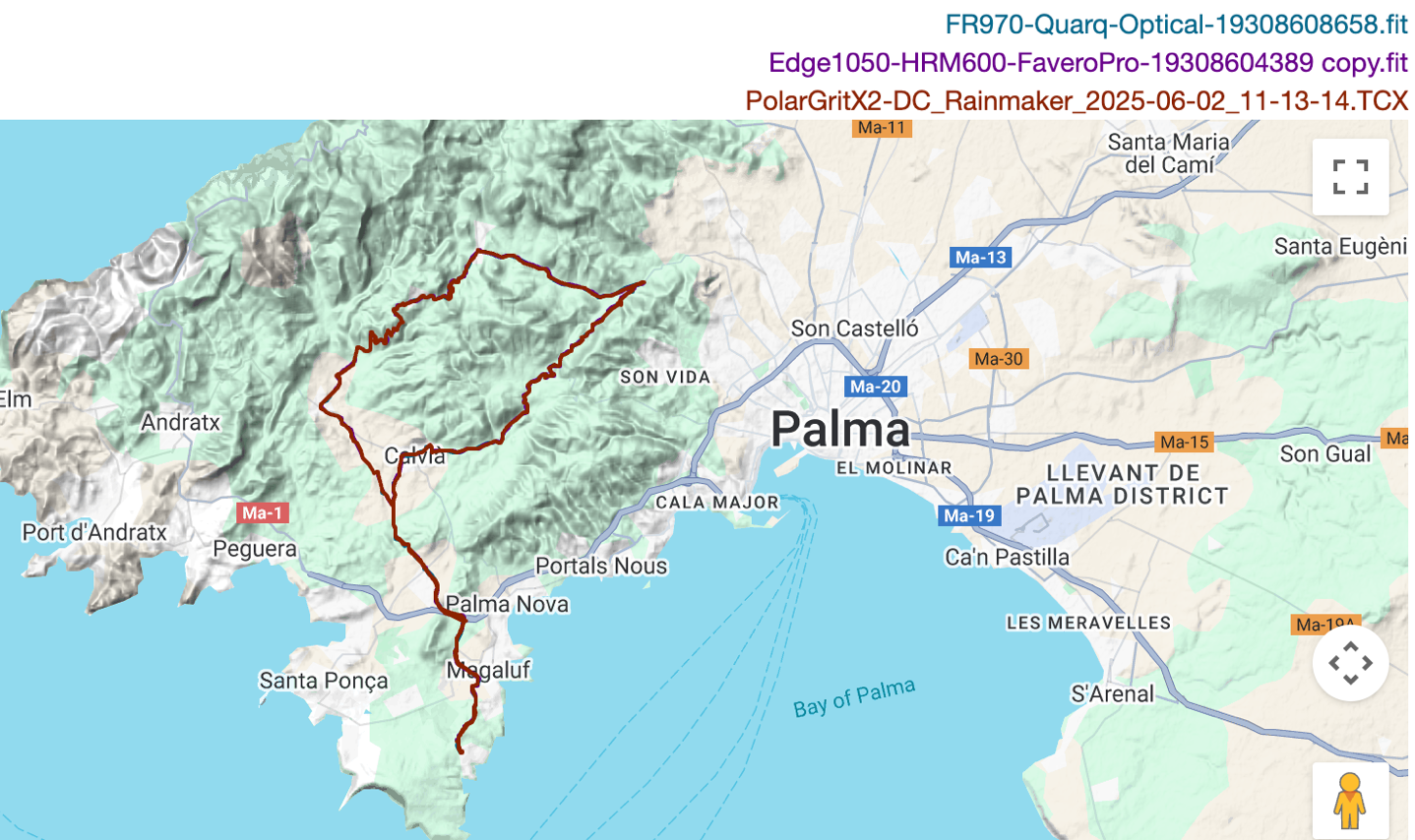
And then zooming all the way down into some of the mountain switchback sections, it too looks perfect, zero issues.

Lastly, let’s look at an openwater swim. In this case, I’ve done a few swims now with the Forerunner 970 on one wrist, and then rotating a few other watches on the other wrist. Here’s a look at the most recent swim from a few days ago:

As you can see, compared to the reference track on a swim buoy, it’s not as good as I’m used to from Garmin’s watches in recent years. It seems to be struggling to re-acquire the signal after pausing to tread water (a test I do on all GPS watches for the last decade). Notably, the Polar Grit X2 struggled *FAR* more than the FR970, somehow making the FR970 look good.
Here’s a look at another swim, this one with the Forerunner 570 on the other wrist. As you can see, neither watch was perfect, though the FR570 edged it out slightly this time (likely just a case of dumb luck). This is definitely better than my more recent test, but equally, still has some mistakes I don’t tend to see with Garmin watches.
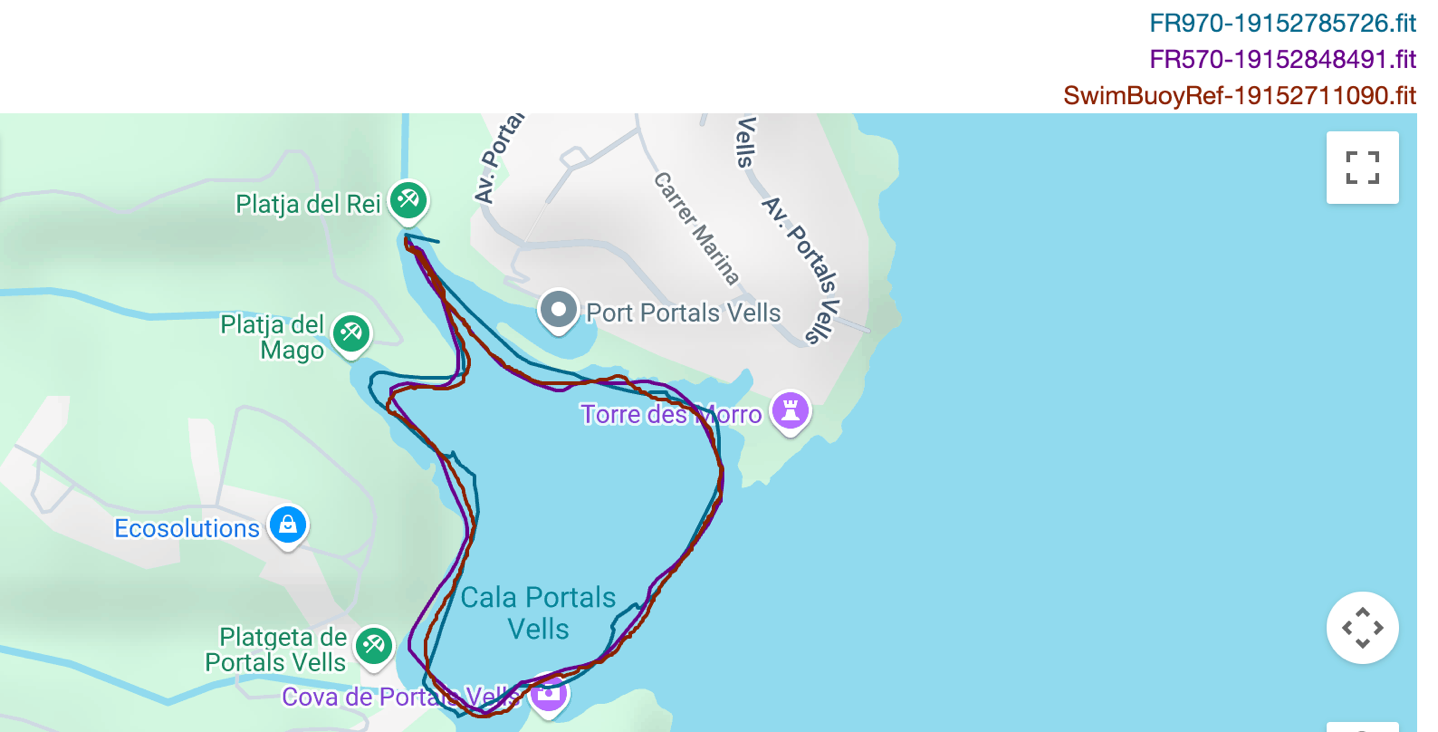
Now don’t get me wrong, it’s still better than all of their competitors are doing. As we saw recently with the Polar Grit X2, and what I’ve seen on the Apple Watch Ultra 2, or the Suunto Run. But, it seems like there’s more tuning work to be done here on openwater swims (and in talking to Garmin about this, they’re going to start digging into what’s going on with my swims).
Setting aside aquatic adventures, the GPS & heart rate sensors are exactly what we’d expect in terms of being industry-leading on this watch. I’ve got roughly 30 different workout sets now on this watch, and all of them exhibit perfect or near-perfect land-based GPS tracks, with equally solid optical HR accuracy.
(Note: All of the charts in these accuracy portions were created using the DCR Analyzer tool. It allows you to compare power meters/trainers, heart rate, cadence, speed/pace, running power, GPS tracks, and plenty more. You can use it as well for your own gadget comparisons, more details here.)
Wrap-Up:
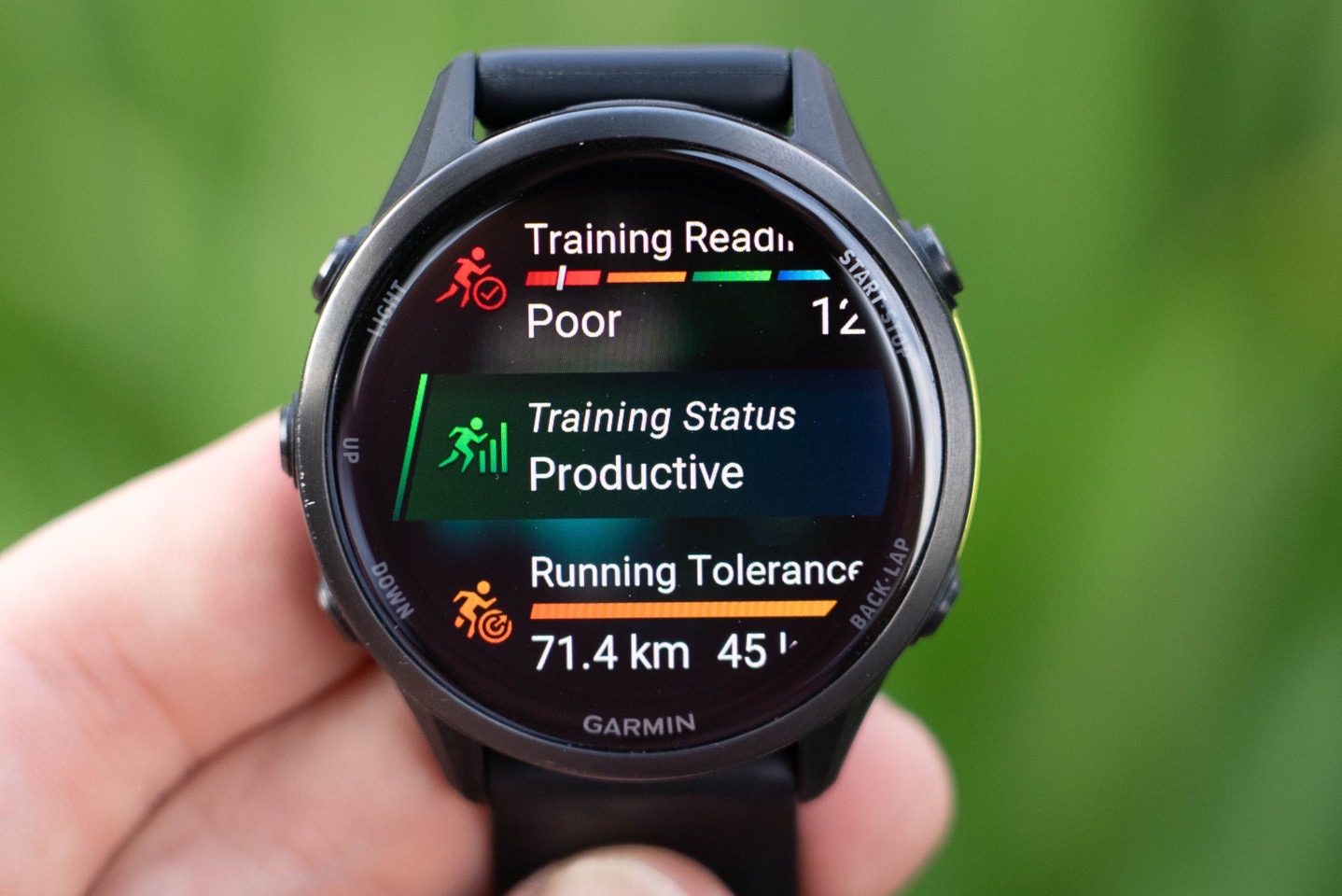
True to Garmin’s form, this new top-end Forerunner isn’t a revolutionary upgrade. It’s exceptionally unusual for Garmin to do revolutionary upgrades of their devices. Instead, it’s evolutionary. It’s Garmin continuing to put the updated hardware puzzle pieces in place, one step at a time. From new speaker/mic, to an updated optical HR sensor, to updated GNSS systems, to the brightest display in a Garmin watch to date, and more. Likewise, adding in a slate of new software features that’ll soon roll out to other Garmin devices.
Some of these new software innovations are genuinely useful, specifically the running Impact Load, for example. Others seem specifically and solely designed to upsell you on their new $169 HRM-600 heart rate sensor, with the Running Economy and Step Speed Loss metrics. And unfortunately, those were the two least useful new features on the entire watch. I guess perhaps I should thank Garmin for not hiding the most useful features behind a secondary sensor paywall. I’m sure over time they’ll find other new watch features that require the HRM-600, just as they have in the past with the HRM-PRO & PRO-PLUS series of straps.
If we look at the hardware updates, the added flashlight is a huge inclusion that many people have been asking for. And the new display is genuinely brighter. The display brightness is kind of a factual thing that’s easy to see (no pun intended). But I also didn’t have any problems seeing the Forerunner 965 screen, even in bright sunny summer conditions. No doubt Garmin is simply aiming to keep up with Apple, Google, and others here, but left in the default brightness settings, it just burns too much battery. Thankfully it’s a 5-second tweak you can make to bring it down a notch, and basically double your battery life, back to Forerunner 965 standards. Of course, the updates to the Gen5 optical HR sensor are solid, as we already know, and aside from some mostly minor quibbles on openwater swim track accuracy, the GPS accuracy remains industry-leading.
Ultimately, if you want the top-featured Garmin Forerunner, it’s gonna set you back nearly $800. For that price, you’re paying for a deep bench of premium features, alongside premium hardware. That’s the core difference between this watch and watches half the price from their competitors. As always, whether or not you value those features or their premium nature is an individual decision.
With that – thanks for reading!
Found This Post Useful? Support The Site!
Hopefully you found this review/post useful. At the end of the day, I’m an athlete just like you looking for the most detail possible on a new purchase – so my review is written from the standpoint of how I used the device. The reviews generally take a lot of hours to put together, so it’s a fair bit of work (and labor of love). As you probably noticed by looking below, I also take time to answer all the questions posted in the comments – and there’s quite a bit of detail in there as well.
If you're shopping for the Garmin Forerunner 970 or any other accessory items, please consider using the affiliate links below! As an Amazon Associate I earn from qualifying purchases. It doesn’t cost you anything extra, but your purchases help support this website a lot.
Here's a few other variants or sibling products that are worth considering:
And finally, here’s a handy list of accessories that work well with this unit (and some that I showed in the review). Given the unit pairs with ANT+ & Bluetooth Smart sensors, you can use just about anything though.
And of course – you can always sign-up to be a DCR Supporter! That gets you an ad-free DCR, access to the DCR Shed Talkin' video series packed with behind the scenes tidbits...and it also makes you awesome. And being awesome is what it’s all about!
Thanks for reading! And as always, feel free to post comments or questions in the comments section below, I’ll be happy to try and answer them as quickly as possible. And lastly, if you felt this review was useful – I always appreciate feedback in the comments below. Thanks!



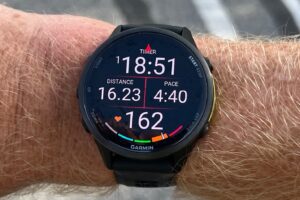
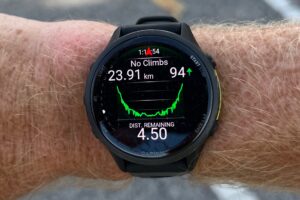
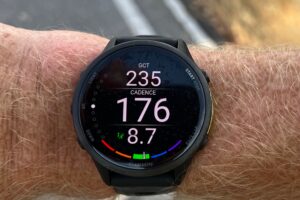
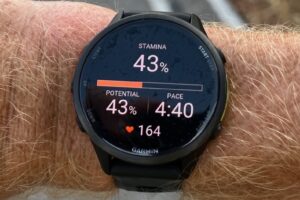

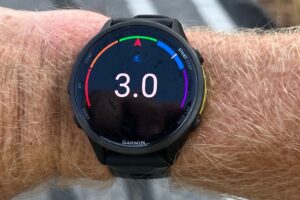

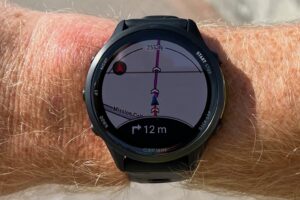
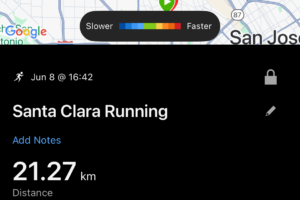


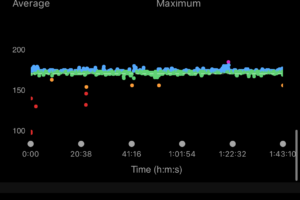
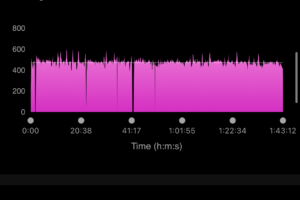
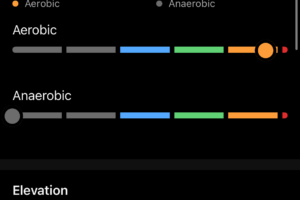
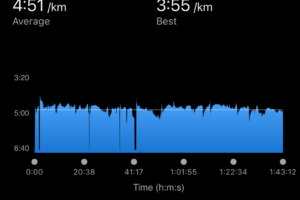
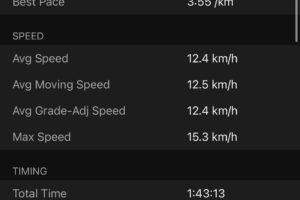
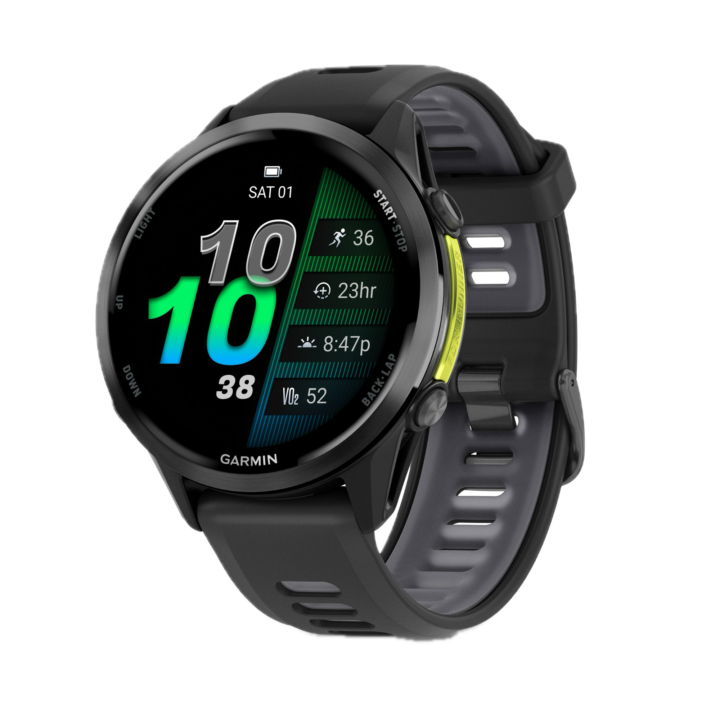
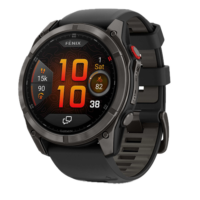
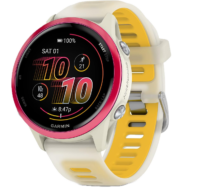
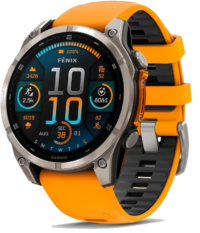
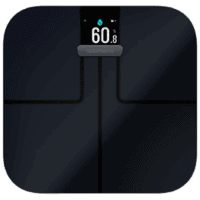
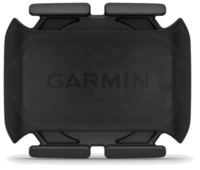



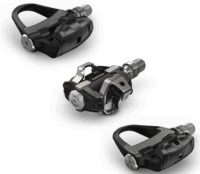






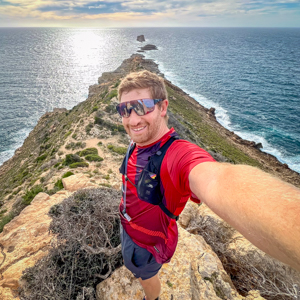






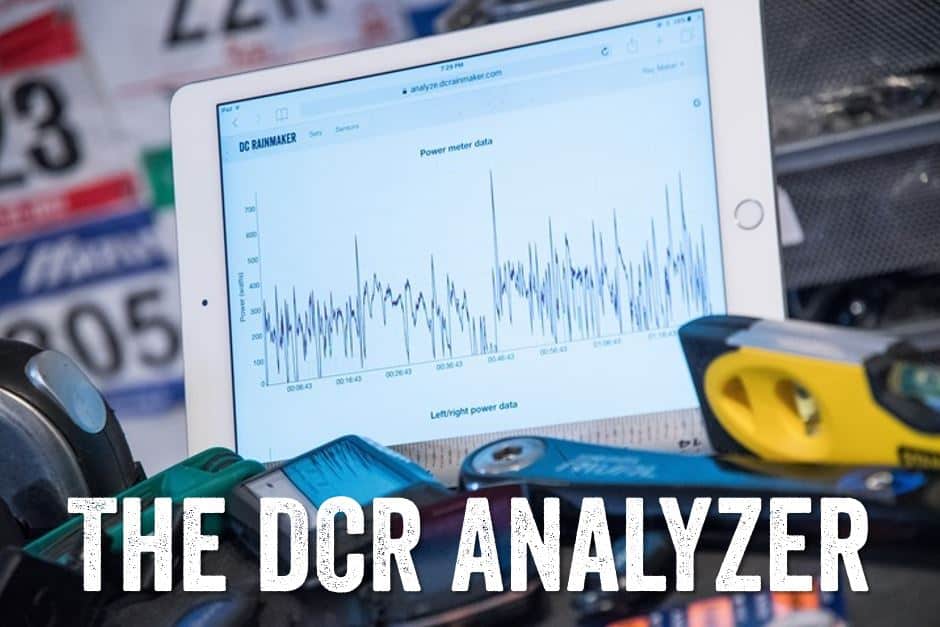

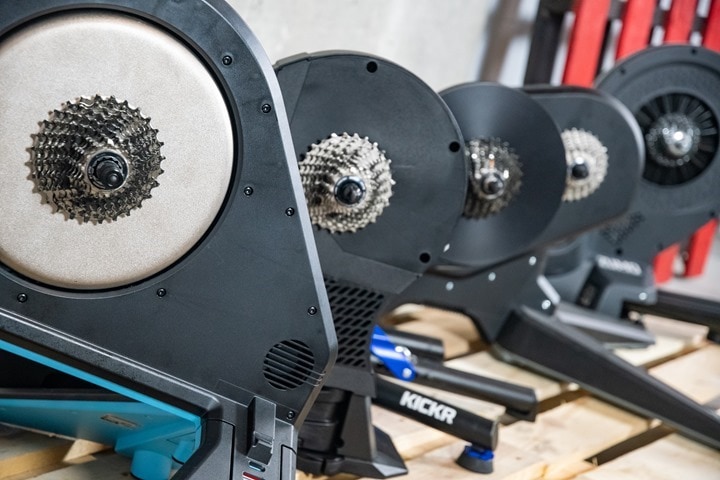

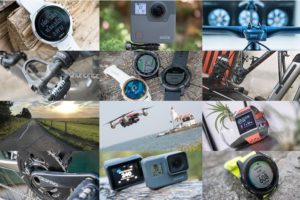
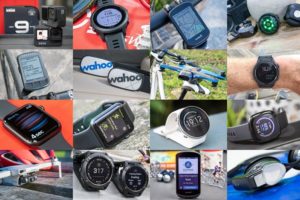

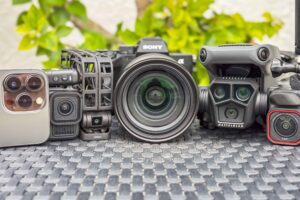

Hi, in the manual says, it would take a reference pace to determine what an easy pace is on flat terrain. How is that pace determined? Based on my years of running, an easy pace on flat terrain is 5:30 per km. For Garmin, that’s not easy, since they weight me at 1.3 per km. According to them, I should be going at 5:45. That’s too slow for me. How does the watch calculate the appropriate pace? I’m going to return the watch, since it forces me to run at very, very slow paces. Not to mention a tolerance of 35 km, and my weekly average is 70 km. I think this is very useful for getting started; it’s put me off running.
As noted, it seems to be taking an excessively long time to ramp up the Running Tolerance. And additionally, as I discovered this last Friday, things classified as ‘Hike’ are not included but ‘Trail Run’ would have been (I could have gone either way, but would have assumed any pedestrian activity would be treated equally, especially since I ran a fair chunk, notably most of the downhill pieces which are more impactful).
That said, it’d be hard to see returning the entire watch over this specific metric, at least this early. Just my two cents.
Do you think I should give it a try and see the metric over time? It was the only reason I bought it… Anyway, more than the tolerance, I’m worried about the excessive impact load on easy runs. It’s more precise in the mountains, but on asphalt, I feel like a turtle. Or maybe Garmin is telling me something I should reconsider (run slower), and that I’m having a hard time accepting! Thanks, Ray.
My running tolerance is pretty accurate I think. I haven’t hit it yet in the 3 weeks I’ve had the watch.
Hi,
Can anybody make a short Benchmark with this App: Connect IQ benchmark v2.
I am wondering If the 970 hase the same CPU like all watches since venu 2 in 2021.
Thank you
Do you know if there’s a reason Running Tolerance isn’t bootstrapped by your historical data in Garmin Connect?
Not sure. I had wondered the same thing.
So the flashlight is only usable with the watch on your left arm?
No. Either. Initially I too thought the yellow sensor cover was the flashlight, it is not. Flashlight is at the top and would work on either arm.
But you’d be shining it at yourself then.
Only if you were the watch 180 degrees rotated… But have a look at your left wrist and then at your right wrist, like watching to a watch… The top of the screen will always point away from you, right?
Do you think voice notes will come to the 970?
They seem like they would be really useful!
They haven’t hinted at anything there.
Voice notes seem to be available in the meantime: link to www8.garmin.com
So, given this has just been released. Is the Fenix 8 worth the premium over this assuming you’re not a diver?
I think for battery life it probably is, especially when the price is only $50 more (as it is right now). Given the Fenix 8 will be getting these new software features, that’s the direction I’d personally go. While the screen is brighter than the Fenix 8, it’s not really something that’s driving that decision meaningfully.
Premium hardware which includes Flashlight…which is a simple light and the same one they’ve been using for years, speaker and mic that most don’t use and a “new” optical sensor that was first released in early 2023. Another example of Garmin recycling older hardware into their line, calling it new and charging more.
The materials are premium. Premium bezel (titanium), premium cover glass (sapphire), and premium display (brightest to date, and first Garmin device to use it).
Whether or not those materials are worth the price is perfectly debatable. Nobody else includes a flashlight (a premium feature), and nobody has better optical HR accuracy during sport, and none of their endurance sports competitors include a speaker/mic.
Again, we debate plenty of things on the software side or pricing side, but trying to somehow debate the hardware components when it easily beats all of their competitors, and Garmin’s own Fenix 8? Seems a bit misguided.
It’s a full time job keeping up with Garmin watches. How many will they release? This is insane. Looks like if you buy a Garmin watch, it will immediately be updated with a new version that’s better and does more. So the business model is just to keep churning out exponentially more hardware every year? Seems so wasteful. Honestly I’d rather purchase a Garmin connect subscription that included an Apple Watch Ultra Garmin app. But as it is, instead I’m looking for alternatives to my Edge to just get entirely out of Garmin ecosystem. And I’ve been a Garmin user since very first forunner watch with over two decades of Garmin connect history with Edge cycling computers. Not that I hate Garmin, just that they are going in the wrong direction with irrational focus on planned obsolete hardware. Just make something that will last and add features via software. If you can’t do that, the let someone else make the hardware. I think they do a better job of this with the edge line. But also, they are falling behind there. Both hammerhead and Wahoo have some advantages, and chipping away at the Garmin advantages. While Garmin just seems static. I can only imagine that all software resources are consumed by ever increasing watch portfolio.
This watch replaces a 2 year old model!
“Looks like if you buy a Garmin watch, it will immediately be updated with a new version that’s better and does more” but the watch you’ve just bought also doesn’t suddenly become less useful or less functional when a new model comes out. Perhaps you’re fortunate enough to be buying a $1000 watch every year, but most people aren’t. Do I want this shiny new watch? Absolutely. But nothing I’ve seen would meaningfully change how I use a smartwatch. I’m still perfectly happy with my EPIX Gen 2: it still does every I want, and most importantly still keeps me motivated for exercising.
Garmin watches are built like tanks and last for years, which is great for customers but bad for business. If Garmin kept adding new features to old devices via software, they’d go bankrupt since very few people would be buying new watches. I don’t like this practice either but I’d rather Garmin be around than disappearing.
They could definitely consolidate their line-up of device though: merge Venu 3 and Forerunner 570 into a base model, Forerunner 970 as the mid-range, and Fenix as premium.
All my Garmins elevation sensor eventually breaks and shows me crazy elevation. I always have to send it back. Is this still going to be an issue or have they added an option to turn off the altimeter as it breaks my training peaks load rating. I’d prefer no elevation to wonky ones.
Thanks!
4 CIQ FIELDS! Finally!
This should have been done å long time ago.
Projected Race Time Feature working also for ultra distances-multi days running races?
Thank you.
After a few days use and coming from 3+ years old fenix 6x pro :
_ amoled is nice
_having configure black screen most of the time to save battery defeats the purpose of a nice amoled screen
_ battery life is a joke, and I am not even using the “SmartWatch” connected features
_ most watchfaces payable
_ disappointed that some watchfaces or widgets I had on my fenix are not available on newer FR 970.
_ New watch, same old app
_watch lamp is nice to go peeling at night
_ only reason to stay with Garmin is garmin pay feature.. But not sure that Will be enough going forward
As noted in the review, change the following two settings:
1) Watch settings > Display & Brightness > Brightness > Set to 1/3rd Brightness
2) Watch settings > Focus Modes > Activity > Display & Brightness > Brightness > Set to 1/3rd Brightness
I promise you won’t notice the difference visually, but it’ll basically double your battery life instantly.
Be patient the data fields will get updated to be compatible. Most watch faces payable? There are plenty of free ones and anyway that’s that got to do with this watch?
“𝑆𝑤𝑖𝑡𝑐ℎ𝑒𝑑 𝑡𝑜 1-𝑠𝑒𝑐𝑜𝑛𝑑 𝑟𝑒𝑐𝑜𝑟𝑑𝑖𝑛𝑔 𝑎𝑠 𝑡ℎ𝑒 𝑑𝑒𝑓𝑎𝑢𝑙𝑡 (𝑓𝑖𝑛𝑎𝑙𝑙𝑦!!!!)”
The world of premium :-)
Hi Ray,
Regarding your comment on ECG requiring titanium as aluminum isn’t conductive enough – Apple seems to manage with aluminum watches and ECG just fine.
Keep in mind when you do an ECG on the Apple Watch, you’re doing it with the digital crown, not the actual case materials.
Garmin says that when it comes to the bezel, they need it to be titanium (at that thickness level anyways), in order for it to work. In Apple’s case, you touch the digital crown as the button, whereas in Garmin’s case you touch the bezel.
Hey Ray! To make sure i understand your battery burn charts correctly: So all things being equal, you are saying the F970 is in fact lasting longer than the standard (47mm) F8 and the advertised battery life for the F970 is therefore very misleading.
Well, there is no ‘titanium’ or ‘aluminum’ (unless you are talking about the pure metal) – these bezels are almost certainly some type of titanium alloy. For the pure metals, the electrical conductivity of aluminum is far greater than that of titanium – and this relationship will be preserved, generally, for their respective alloys. There are factors other than electrical conductivity at play here for bezel material selection. My guess is that the critical consideration is resistance to corrosion / durability of appearance in which most titanium alloys will be superior to most aluminum alloys, especially given the likely exposure to sea water, chlorine, skin oils, etc. If Garmin is justifying the use of the titanium bezel as mandatory for the ECG function / electrical conductivity (over an aluminum bezel) – that is simply untruthful.
“To make sure i understand your battery burn charts correctly:”
In this specific hike, the FR970 did have lower battery burn than the Fenix 8, with both set to the reduced 2/3rds brightness option. In other scenarios, the Fenix 8 burned less battery. All things were as equal as I could get them.
Overall though, Garmin’s claims are correct if you leave the defaults. But equally, the defaults are just battery slaying silliness, for almost no perceivable difference in brightness levels. So much so that it sounds like Garmin is re-thinking some of those defaults.
“If Garmin is justifying the use of the titanium bezel as mandatory for the ECG function / electrical conductivity (over an aluminum bezel) – that is simply untruthful.”
🤷♂️ Yeah, not sure what to say. That’s what their saying, more specifically, that the connectivity for ECG on the aluminum bezels wasn’t good enough to pass certification. They can use stainless steel (as they do on the Venu 3).
Alumium oxide is excellent insulator. I guess that is the real challenge with aluminum.
Thanks for the detailed test!
The 970 is actually the watch I wanted as the successor to my FR 265:
– Sapphire glass
– offline cards
– ECG
(But only because the 570 was really nothing)
What I don’t like:
– That green emblem on the right side. Why not leave it completely black? Why such color accents?
Garmin should rather make chic colorful watch straps like Suunto, which are an eye catcher! (I bought 3)
– I also don’t like the design of the OS of the 970/ fenix 8.
– the price is far too high for me.
I bet some users prefer to wait for the AW Ultra 3.
And then hope for the next watchOS versions.
I’ll stick with my FR265.
Is barometric elevation basically a solved problem for most watches these days? I notice you don’t really mention it in the accuracy section – I can see that it would have been harder to test in Amsterdam, but I imagine you have enough baseline data from elsewhere to have a perspective on it.
I have had generally good luck with the Garmin altimeters so far, though the ancient Edge 500 I have has been more consistent on a fixed route day-to-day than the various Fenixes. I’ve also seen some variation when skiing the same life repreatedly, though I think that probably has more to do with the algorithm that activates the “run” designation, rather than the altimeter per se.
In general it seems to be a solved problem (in terms of elevation accuracy).
All of my linked data sets have the elevation charts in them. So I generally take a glance at things, and if something is out of whack I’ll call it out in a review, otherwise, will largely spend less words on it.
I continue to struggle with how to keep the reviews fully in-depth, without going down never-ending tangents that either make the reviews even more bloated, or, as is the case with this one, let me procrastine finishing something that was fully written 8 days ago, filmed 6 days ago, but just had to finalize a million tiny things.
I do notice often a 2-3m difference between start and end points, when in a loop I would have expected them to be the same. Should they be always bang on?
Brand new watch but I wonder long term wise is there a protocol for maintenance of of the barometer slots.
Thanks! That was what I assumed, but wanted to confirm.
I run up and down the mountain behind my house three times a day for hill training. The 970’s altimeter is accurate to the same altitude at the top, or within 1 meter of it. It’s much better than the 955.
I’m not sold on the look even with the premium materials. It looks very shiny but also similar to a lot of cheaper devices. I switched from FR to Fenix / Epix a while ago and it feels a lot more substantial. Garmin might not like it being called the plastic Fenix but it does kinda look like one.
The battery life is very disappointing and that’s always been a USP of Garmin. I love not having to charge my Epix 2 more than once a week, especially if I’m on a business trip.
My Epix 2 is still delivering a lot for me after nearly 3.5 years, with the exception of HR accuracy which is very hit and miss, even on runs. I’d switch if it meant I didn’t need my HR strap as much for training sessions. Hoping the next big upgrade is microled, even if it does cost a bit more.
The fenix 8 platform in general is still underbaked coming up on a year. I’m sure they will get there — probably?
I have a problem on the f8 where running in after sunset strobe: if you activate the flashlight (because street lights are out) and then deactivate then the strobe is also turned off. Whereas with the f7x it would go back to safety strobe.
I think the new GNSS chipset and/or software implementation in the f8 platform and the therefore the f970 is incrementally better than in my f7X and does a slightly better job at turn alerts. But also there is a weird thing with the up next overlay now taking 30% of the map display and cannot be removed.
I will also note that I have been using the f8 51mm with always on display at 1/3. I’m doing 1-4 hours of GPS a day with satIQ and I get approximately identical practical battery life to my previous fenix 7X — close to a week and a half. There is a giant battery range difference from the 47mm to 51mm.
I think Garmin is also doing a fairly poor job with offering a range of watch faces that will broadly appeal to a range of consumers. They are almost all quite busy and garish. There is a retro 80s “video toaster” titles vibe going with the f970 faces.
Yeah, lots of weird bugs with the strobe. For example when I flew to California (9 hour timezone change), despite the watch being on the correct timezone, and going for a run at ~4:30PM (sunset was I think around 8 or 9PM), the watch started triggering the strobe during the run I did, seemingly on the wrong timezone.
There was some other weird same-day timezone change quirk too, but I forgot what it was now.
It’s pretty clear from the impressive scope and breadth of defects that the fenix 8 platform OS is not just a coat of paint but a massive re-implementation.
£250 more in the UK. Only £629 for the 970. Not worth the difference.
Do you think Triathlon coaching will filter down to devices live the 965?
There’s no plans for the FR965 to get any of the new FR970 features (save I think, Breathing Disturbances, since that technically came as a feature update already in the queue for the FR965 that released basically the same week).
Hmm. The training one seems a little tight-fisted as it’s hard to see how that could be a hardware limitation. I’ve been using the daily workouts for a while, and enjoy the structure in my training (bike and run). Having tri plans would be great, but I’m not going to upgrade just for that, especially as I’ve only had my 965 for a couple of months
No, unfortunately not.
Was wondering how accurate is the sensor on the watch for Heart Rate compared to pairing it with HRM 600.
The review contains comparison data to the HRM-600. :)
Any idea why Garmin chooses to not include the same top-end golf features (virtual caddy and full vector maps as on the approach watches) on this top-end forerunner like they do with the fenix and the new venu x1? (And previously with the epix pro)
I’m thinking about upgrading my 965 and I don’t want to buy a second watch just for golf. I find the fenix too big and heavy and I’m doubting the venu will be a good triathlon watch… maybe I’ll buy the discontinued epix pro gen 2?
The open water swim accuracy is concerning especially since this is probably the watch most triathletes will end up with. Is it worth holding off until theres an update on that side of things?
Any guidance about how you think about the trade-offs between the 970 vs. Fenix 8 vs. Enduro 3? There are now three watches all on top of each other from a price perspective with slight variations in offerings. I’m still rocking my 945LTE (was REALLY holding out for an updated LTE model, alas!) – so I’m due for a refresh and trying to get a sense for what I’m gaining / giving up across Garmin’s top tier lineup.
All of these are based on the fenix 8 platform.
The enduro 3 has a MIP display. If you want a MIP display it is arguably the best implementation because it really leans into the power optimization available with MIP. The enduro 3 is only available in a 51mm case. This is the ideal device for through hikers and people doing Tor des Giants or Moab 250.
The forerunner 970 is really a lightly de-contented Fenix 8 47mm AMOLED. The f970 removes the inductive buttons, quick fit band, and dive functionality and is a slightly less beefy case design. I think it also has a slightly smaller battery. The f970 is only available in a 47mm case. The f970 is designed to minimize on-wrist weight and it has a different aesthetic than a Fenix.
The Enduro 3 also loses the dive functionality and the micro. But for most people I guess it doesn’t really matter and it’s also cheaper.
I get the modifications to the base platform to achieve the f970 and the enduro 3 for targeted purposes. Honestly the fenix 8 platform SKUs that make the least sense on paper to me are the MIP versions especially the 47mm one whereas the 51mm has the capability to match the GPS-only range of the fenix 7X and within 10% of the fenix 8 41mm MIP. And the SatIQ range is approximately the same in gesture mode to the Fenix 8 MIP at 51mm.
I don’t believe the ** solar range number at all having been burned before and you can’t plan for solar unless you are going to specific locations without rain or forest. If you look at the GPS only or SatIQ range claims they are roughly the same between MIP and the gesture mode in AMOLED. The only big difference is range for “smart watch” mode where you aren’t using the watch for anything but time.
The MIP fenix 8 range do not have really impressively improved range over the AMOLED version and also do not have AMOLED.
That is if you even need that kind of range at all. Part of the premise of the most popular 47mm size and the forerunner 970 is that most people do not.
“All of these are based on the fenix 8 platform.”
Just want to call this out. And not just the FR970, FR570, but also the Venu X1. That’s probably the most consequential change here. And not just some slapped on UI, but under the covers. Aside from them straight-up telling me this, one tiny little change is that since forever, the Venu series has never recorded battery level into the FIT file. With the Venu X1, it does.
This should result in bugs being fixed faster, though, I get the impression (well, I can also clearly see it) that Garmin is moving so fast this year, that things are just falling off the side. Stuff like the round trip routing and more. On one hand, this sucks. On the other hand, these changes will be fixed across all devices super faster, since one fix will propage to all of them at once.
What’ll be most interesting to me is whether or not the Venu 4 (whenever that comes) will switch code bases or not…
Hey Ray,
Thanks so much for your in-depth reviews – very much appreciated. I’m in need for a new watch and am strongly considering the 970, which would be first Garmin. I understand your mostly comparing US prices but I would be interested in your thoughts for someone like me in the UK. The 970 is listed at 630GBP on the website, the 965 was 599GBP at time of release (500GBP today) and the Fenix 8 47mm AMOLED at 830GBP today (no sale for us right now). Do those prices shift any of your thoughts?
Thanks for the detailed review. I was wondering how what your opinion is about how the 970 stacks up against the 965 and the 955 in terms of pure performance and accuracy?
Great write-up, thank you. On my 2nd 965 and looking at the newness I see Improved mapping clarity (the map style design), does anyone know what this means other than the new topoactive 2025 maps update which the 965 also received?
Do we know if the Kayak profile supports stroke rate yet as the SUP has done since the 735?
Will there also be a Full-Depth Review of the Forerunner 570, or can we just read this article and disregard the features that didn’t make it and read it as such?
There is a plan for one. But honestly, I have absolutely no idea when that’ll be. Probably after the Venu X1 review, since honestly there’s more interest in that than the FR570.
And as you noted, the FR570 review will literally be identical to this one, save the features not there. I’m seeing identical performance (save a smidge better OWS tracks, but that might just be dumb luck).
Thanks for the guide!
I couldn’t quite tell from the side shot, but does the glass still protude *above* the metal bezel on the 970 like it does on the 965?
Garmin HQ: – Hey Ray, You got a margin from our sales via Amazon or REI, so it is in your interest to justify our products, price and features!
DCRainmaker: – OK, I will add a new post about it…
Garmin users, We The People:
– We always wanted an integrated flashlight for the Forerunner series! We will throw away our useful, handy Petzl Tikka 20EUR headlight with 3xAAA batteries or an accu pack.
– We can do a medical 12-lead ECG anytime, but we want a one-lead ECG instead!
– We want a product price increment according to our salaries! (year 2016, Forerunner 920XT Tri bundle = 360EUR). Triple the price!
– We hate the 920XT rectangular shape, make it round!
– We have an MS Excel for analysis, tables and calculations for free, but we want to pay for these features directly to Garmin!
Garmin HQ: Your wish is our command!
Garmin has never emailed me sale-related stuff. In fact, never, in the history of this entire site have I ever discussed upcoming or current sales with them. Period.
Sometimes retailers (e.g. Amazon or REI) will share a list of all products from all companies that are upcoming, but I rarely see that before it happens. Instead, I sit there and go through what I’m guessing are the most popular items on sale, or, if Garmin lists on their site the items on sale, I manually add them to a deals list. The exact same deals list that currently shows Suunto, Apple, GoPro, and a few others.
Point is, if you’re gonna be a dick, just don’t be a dick to me. I have zero tolerance for it.
Hey Ray,
Thanks as always for great reviews. Until the Fenix 6 came I was a watch geek and wanted a new watch like every year. The past 5 yrs have been injury affected so I have had to give up swimming for instance but I can roller ski. Problem is, Garmin STILL does not have that as an activity ( it exists if you use DUTCH LANGUAGE LOL, but is saved as xc skate ski). The only reason for me to want a new watch (provided mine does not break) is if they add roller ski as activity. Please can you make them do that? Ppl have been requesting it since 2016 in forums but for some reason they wont listen. I live in Sweden and xc ski is big, and also roller ski, even Swedish national xc ski team use Garmins and they roller ski a lot but cannot track as roller ski…
I own the 965 and have a very annoying issue. I know this is a 970 review, but hoping someone can comment on whether this is a common issue with Garmin watches in general, a 965 issue, or …
My issue is every day, even on heavy training days (which is most days for me) I receive a message later in the day congratulating me on my rest day, and telling me that I have stored up training energy for future training. Garmin says this isn’t a defect and there is no way to turn off this message. I never had this issue before and I have been using Garmin watches since the original 201 model.
Hi Ray
Do you know if the known problem with altimeter in FR955 when it’s been used in salt and/or chlorine has been solved in the FR970?
I second that question. I’m now on my 3rd 965.
First barometer went bonkers after about 15months.
Garmin mailed me a refurbished one for free (in exchange) after I complained that I had same issue with a Fenix that they also replaced.
That refurbished 965 lasted bit less than a year and literally last week I got another refurbished 965 (mailing them the broken one) after the barometer went haywire again.
ChatGPT tells me that’s a common issue for folks with heavy pool use as the membrane in the sensor doesn’t like extensive chlorine exposure. I do spend about 4 hours per week in the pool.
But surely there must be a better way than changing the watch every 12 months.
I do appreciate Garmins behavior here, but a sturdier watch would be even better.
That is surprising info! My Fenix 5S lost its barometer/thermometer completely after pool usage, but after Fenix 5Plus Garmin disabled barometer/thermometer sensor in pool swim activities in order to prevent damage to the sensor. My Fenix 6X had thermometer in pool swim until they removed it by software update so I assumed this would not be an issue again!
Btw I was not able to get a replacement of my 5S since it was too old :(
But that sensor not being used for the activity doesn’t mean it’s not exposed to the water.
There are no physical barriers that would protect the membrane. If there was, I reckon that be mostly just another breakpoint.
As that barrier would have to open when you want measurements.
And most folks may not swim that much.
True Thomas, their explanation was that if they dont enable the sensor (ie “power it on”) it would be fine, though. Must not be enough then. Very weird that this does not apply to Suunto or Polar. I use those too btw.
Same here, awaiting me second FR955 as we speak. Started giving issue around 12 months after bought. I only spent about an hour a week in the pool and one or two days of salt water in the watch’s lifetime. I would also like to know if this is improved.
I’ve been hesitating between the Fenix 8 and the Forerunner 970, mainly because of the MIP vs. AMOLED display. I do a lot of outdoor activities and was concerned about visibility in full sunlight, especially with polarized sunglasses. I came from the 955, which already had great battery life and solid outdoor readability, so I was skeptical about switching to AMOLED.
Decided to try the 970 anyway — with the option to return it if the screen didn’t perform well outdoors. I’m happy to say it exceeded expectations: the AMOLED display is crystal clear even in bright sun and with polarized lenses. On top of that, it’s lighter and slimmer than the Fenix, which makes a real difference on long outings. Since I don’t need diving features, the 970 is a perfect upgrade for me. Keeping it!
Is there a way to force the watch to use GPS elevation always?
My altimeter seems bust – the minute I start a GPS activity (don’t even have to start it, just enter the activity app and let the GPS search start), my altimeter elevation goes wild (up and down 1000’s of meters despite me being near sea level), my temperature readings go wild (-273 C up to +199 C!), and my power meter (during run) is all over (for the same route on my 955 I’ll get 200W – 500W but my 970 tells me I’m constantly dipping to 20W and peaking at 3990W – even on a 5K the other day where I consistently pushed harder and harder, I still had ginormous dips and spikes as if I was coming to a full stop every 500m or so)
When I use GPS elevation fields on my activity and remove ‘elevation’ (altimeter value), my temperature sensor doesn’t lose its mind. I will try a test run with the new configuration, but I’m scared to add other elevation fields like the graphs or min/max as if they use altimeter, it’s gonna make the watch go beserk again!
Yes I have a case open with Garmin and they’ve already offered a replacement, but there’s no stock currently so they’ve advised me to hang onto this one for now (since everything else is working just fine and it’s an amazing piece of tech!) and send in for exchange once there’s stock to send me one back
HR graph attached
Ray … Have you discussed earlier Forerunner barometer issues with water messing up the crystal ( I have had 2 watch replacements) and they basically told me not to swim with my 965 …. they gave me a free swim 2 ?? Does the 970 have the same components ??
I’d guess that’s just a random support person semi-joking around.
I haven’t had any discussions there, and honestly, they’re unlikely to say anything. That said, I’ll poke around at Eurobike next week.
It will be some challenging choise.., having a FR935 for 8 years or so I have a full distance triathlon planned in a few weeks and thought to reward myself afterwards with new watch.
Will it then be the 965 (better prices at the moment).,. or going for the latest 970?? or the new square venu?
Having not to large wrists, the 47mm is just acceptable (usually the Fenixes are too large for my likings).
Well, no one can make this choice for me, as it will be mostly a matter of wanting to pay the price for it or not…
Review is awesome Ray!
Do you think Garmin will ever add LTE / something similar back into the Forerunner line?
I wonder if the battery life estimates, particularly the “smartwatch mode” are simply more realistic than for the FR965. I’ve owned a couple of 965s and never reached anything close to the 23 days claimed. and was usually in the 13-14 days range doing non-gps workouts i.e. treadmill and lifting weights for roughly an hour per day.
I made the transition from Fenix 7 solar to FR965 based on the reviewes saying that 965’s screen is “great under the sun”, or “no problem seeing the display under direct sunlight”. I didn’t find a single review saying something bad for 965’s screen brightness, but I have to say that that’s not the case, at least for me. 965’s screen, of course, is not garbage or unreadable, but I live in a sunny country and in the summer its screen is just OK. And I don’t compare it of course with an MIP display, I compared it with Amazfit T-Rex 3 and it’s night and day in favor of Amazfit. I know, screen is not everything, but it’s something important for some of us.
Now Garmin offers its brightest screen ever and asks for $800. Garmin will not announce nits, so I can’t afford to buy such an expensive device only to find out that it’s still not good enough, when I’ve already seen what competition has to offer. Couple that with lower battery life, increased price and the uncertain future of what more will be implemented into Garmin Connect + and it’s clear that Garmin is not for me anymore.
I say again that screen brightness is not everything, but on the other hand I am not a pro athlete and can’t help the feeling that there are less refined, but more honest offerings out there.
Interesting to see Coach Alan in the pix of your contacts. The man must be over a hundred by now!
I’ve one question. Forerunner 970 records my predetermined sleep schedule from 9 PM to 4 AM. However, I slept from 7 AM to 10 AM same day, and this data is not recorded or reflected. Could you please provide guidance?
I thought sleep automatically be detected n recorded.
This has been a problem with garmin since the 935 that I’ve had and now 955. Garmin has added the “nap” feature that autodetects naps (even though they can be multiple hours of napping) outside your sleep schedule. But, yeah. Sleeping outside or nearly outside your sleep schedule is not recorded as sleep
Was that ‘sleep’ from 7AM till 10AM the sole source of sleep that day?
My understanding of this level of sleep is that Garmin requires 4 hours of sleep in order to process it as a nightly sleep. Whereas a nap can be triggered in less time.
I’ve never had issues with wonky sleep outside of the sleep hours, as long as it hits the 4 hour marker (and trust me, I’m the king of wonky sleep hour).
Note that a surprising number of other wearable companies also have this four-hour rule. There are seemingly scenarios where it’ll process less sleep than that, but you won’t get HRV for example and a few other things.
Coming from FR955 solar world as well, I believe this is the pinnacle of all sportswatches for triathletes, multi-athletes and hybrids. If I could only improve 2 things they would be
– faster spotify music sync
– better battery life: I know, there is limit to how greedy one can be right? But, I strongly feel my battery life has deteriorated since 3 years ago I bought the watch. I’m doing 9 to 12, 1h trainings per week 3-4 of which are runs with multiband gps + music, 2-3 gyms, 3-4 swims and some extras, and, I THINK, I ‘m recharging every 4-5 days while I remember myself recharging every 8-10 days in the past but who know maybe I was training less (is there a way to see how often I’m charging?)
Considering SatIQ + Music battery life has significantly improved over 965 plus better brightness and Triathlon coach I’m looking into switching and possibly, sustain my charging regime, or ideally extend it. The only thing making me hesitate is the always-on display comment from Ray. I’m really a fan of always on and I would like to keep it as such, but charging every 4 days seems like unacceptable to me. Especially if the smart mode doubles that. I’m not using any of the smartwatch features, I don’t like to receive push notifications on my watch so I disable these. Also there is no need for the watch to be always on while sleeping right ? Maybe that’s another thing that can be optimised to squeeze out some more battery juice
Ray, what’s your take on that? Do you think battery life will extend with the aforementioned training (considering the music and gps) or go down? Is it worth the upgrade or now
Yeah, the Spotify one is tough. I wish that chipset could draw *far* more power when powered, but alas, it’s all about battery conservation there.
As for battery life, have you tried reducing the display brightness? It’s nuts how big a difference that makes in battery life, while concurrently making almost no difference in actual brightness (meaning, your not substantially reducing your display brightness level).
Hi Ray,
Any updates on the open water swim performance?
The only thing that stands between me (and many other athletes around me) and buying the top end forerunner watch is battery life in day to day use.
Now I understand that AMOLED screens use far more battery but at the same time having a display in AOD off is not something that is acceptable.
Here is my suggestion:
Create another display profile that will provide the following:
“Special always on”
1. Display only time and date. (HH:MM and mm/dd – 12:25 Aug 2)
2. Button press to wake up to full display
This should allow for both battery saving while the display will always show the time and date which is what users want.
WDYT?
Hi, why in recent articles the pictures don’t pop up in a reading window when clicked? I always enjoined zooming in and zapping thru the pictures, I can’t no longer do that.
Is there a way to use the forerunner 970 as a bike computer?
Curious whether the expansion to 4 Connect IQ channels resolves the issues when using the Core 2 sensor and a Stryd footpad. On my 965, the Core is forced to use a more restrictive data mode because of the Stryd, where only the heat strain index and not the core and skin temperatures themselves are written into the FIT file. The flashlight would be really nice to have but I could justify upgrading to the 970 if this limitation has been resolved by the CIQ upgrades.
HI Ray, as always thanks for the great reviews and input. After almost 10 years of a fenix 3 I have finally made the upgrade to the 970. Have you heard or seen anything coming down the pipeline related to more options for brightness settings? I noticed in the “Sleep” focus mode there are 4 brightness settings, with “Ultra-low” being added. I was wondering if you knew if this would be rolled out across other options? Also, is there any reason that Garmin simply couldn’t let us choose the brightness level 1-100% or in 5% increments, which was the case for the backlight on the fenix 3? I know they are different screen types, but seems like it shouldn’t be too hard vs. only 3 options.
Thanks!
Hello! I’m curious to hear your advice – if I were to be buying a new watch (from AWU) and am choosing between Garmin Forerunner 970 and Coros Pace Pro – what would you choose? I basically want accuracy of elevation, HR readings (when on a walk or hike where I don’t wear a monitor), and just ease of use. Thanks so much.
I’m considering this watch, but as an open water swimmer I’m hesitating because of the accuracy of gps. It’s good to hear they are diving into this, but how will we ever know it will be solved or not?
As of about two weeks ago with my last test (and most current firmware), it is still not fixed. In fact, I’d argue, getting worse.
Ai, bad news.
I just want to thank you for being so detailed and agnostic with your reviews. It’s extremely refreshing and, I personally, really appreciate it.
Hi, Ray.
I’m struggling with whether or not to take the plunge on the 970. I like many of the features but I’m trying to determine if they’re worth the price. I’m not a runner, but I do like to walk long distances, and my son and I like to hike in the mountains of Colorado. In addition, I play basketball regularly and plan to wear it during that workout.
I also have (or am subject to having) afib episodes, so the other health features are appealing.
I can’t deny that I like the ability to take and make call through the 970 (I have an iPhone).
So I just wanted to get your thoughts…
Thank you very much for your time.
Kindest regards,
-Barry
No AOD, No PulseOX. First full charge Tuesday around 15:00.
A few GPS activities
A few non-GPS activities
Two SW updates installed
Basically worn 24/7
Sunday 21:50 it’s at 50%. Very pleased!
Contemplating getting this to replace my Fenix 7S Sapphire Solar. How much of an upgrade do you think that would be? The amoled, flashlight, newer HR sensor is what is drawing me in.
How do you know the battery usage of a run?
I don’t see it in the watch and not on the fit file
I’m not sure when it happened – but my 970 went from the worst battery life of any Garmin I had ever had to the best. I always charge while in the shower. After getting the watch I had to charge an extra time every few days.
These days, only charging a few minutes every day, my battery is consistently staying at >70%! So there must have been a good update or 2 in there.